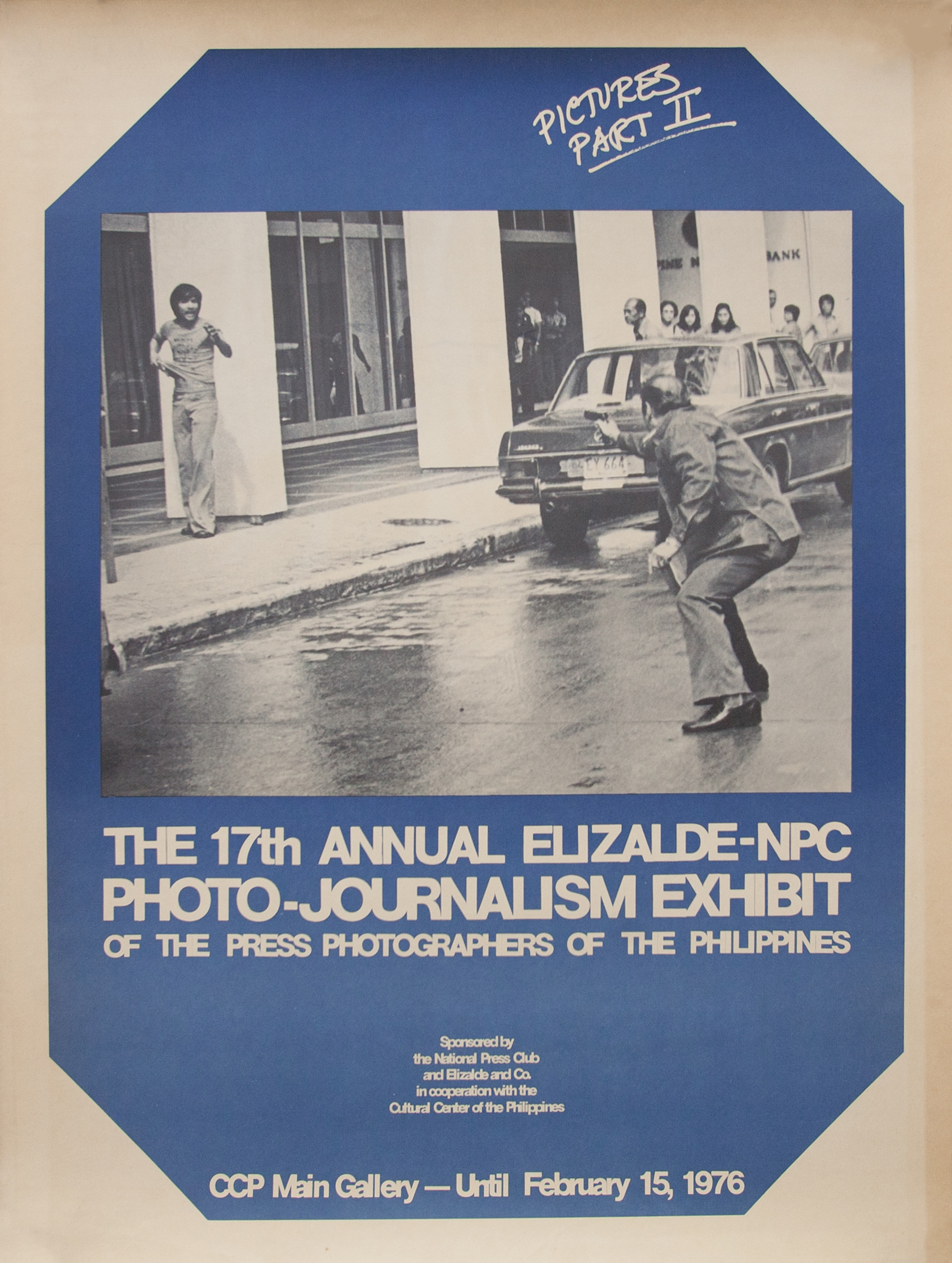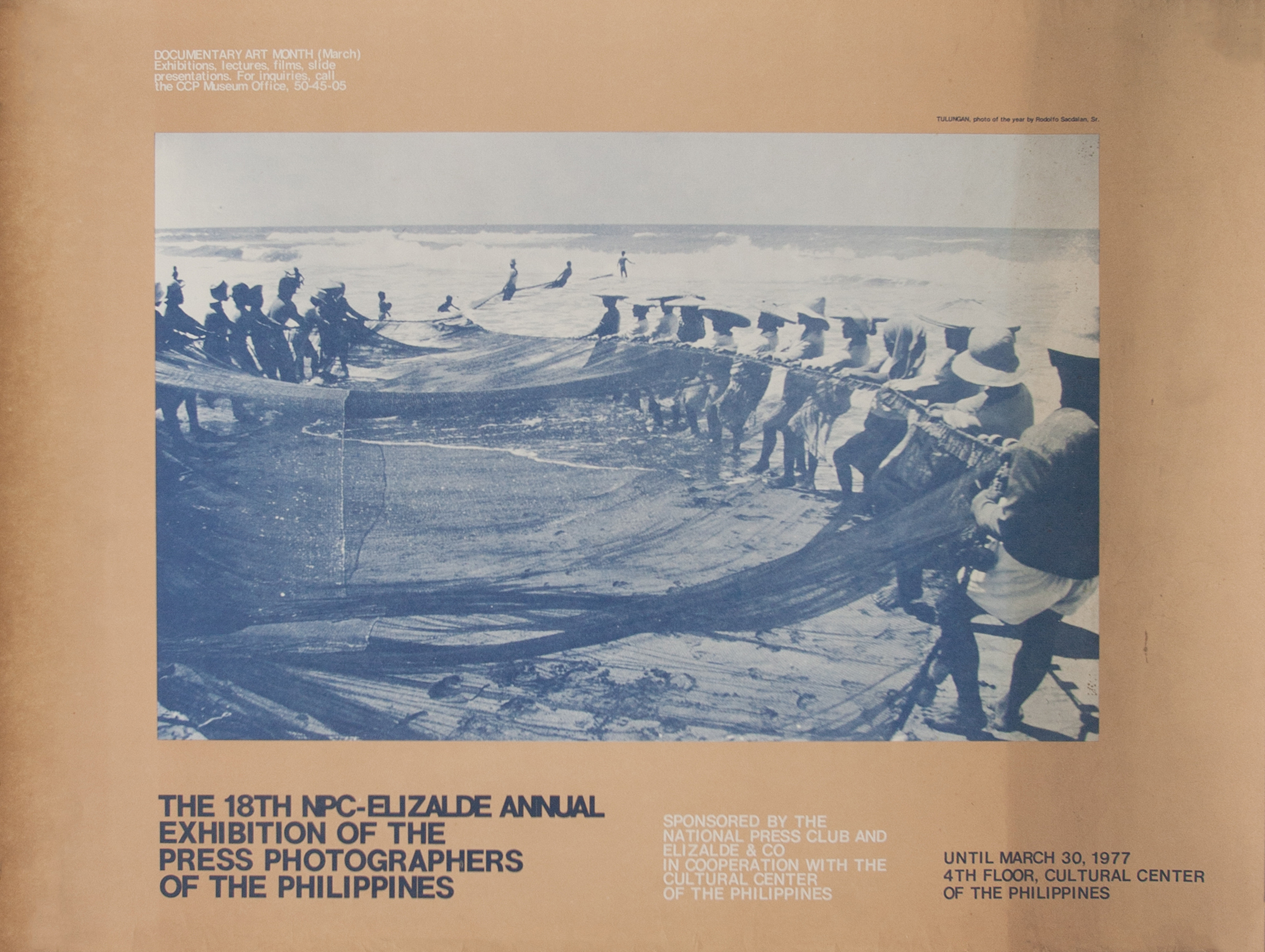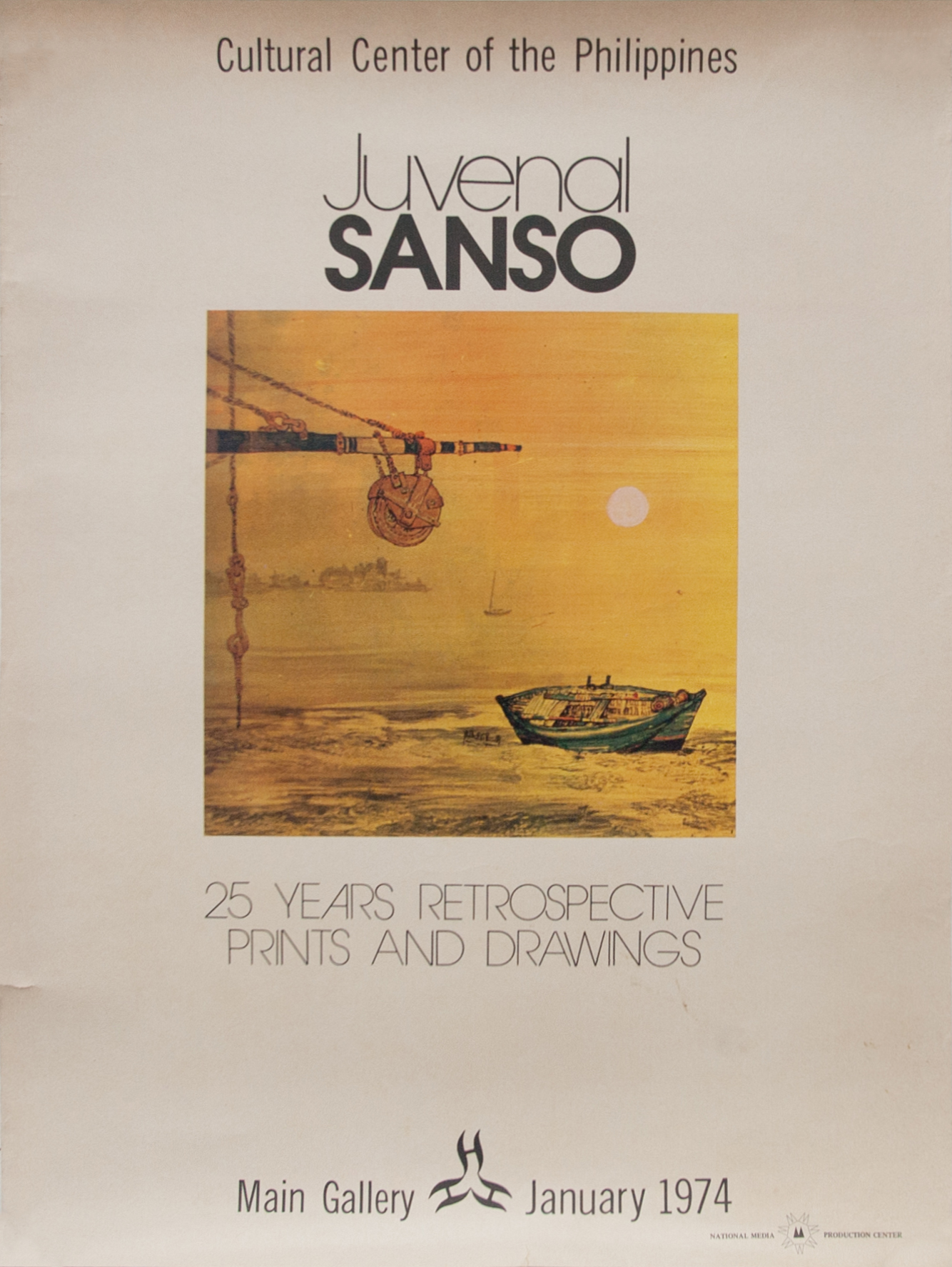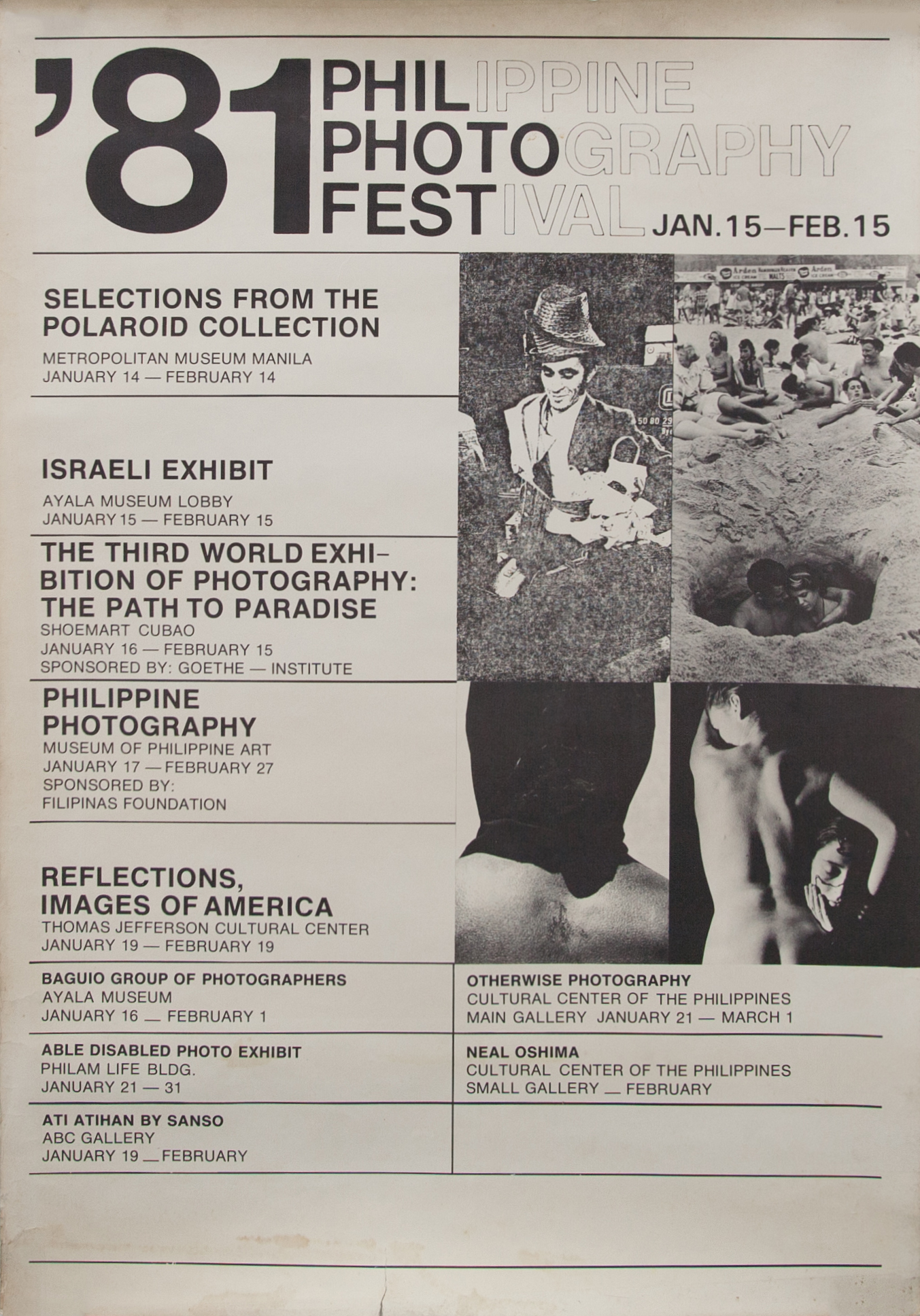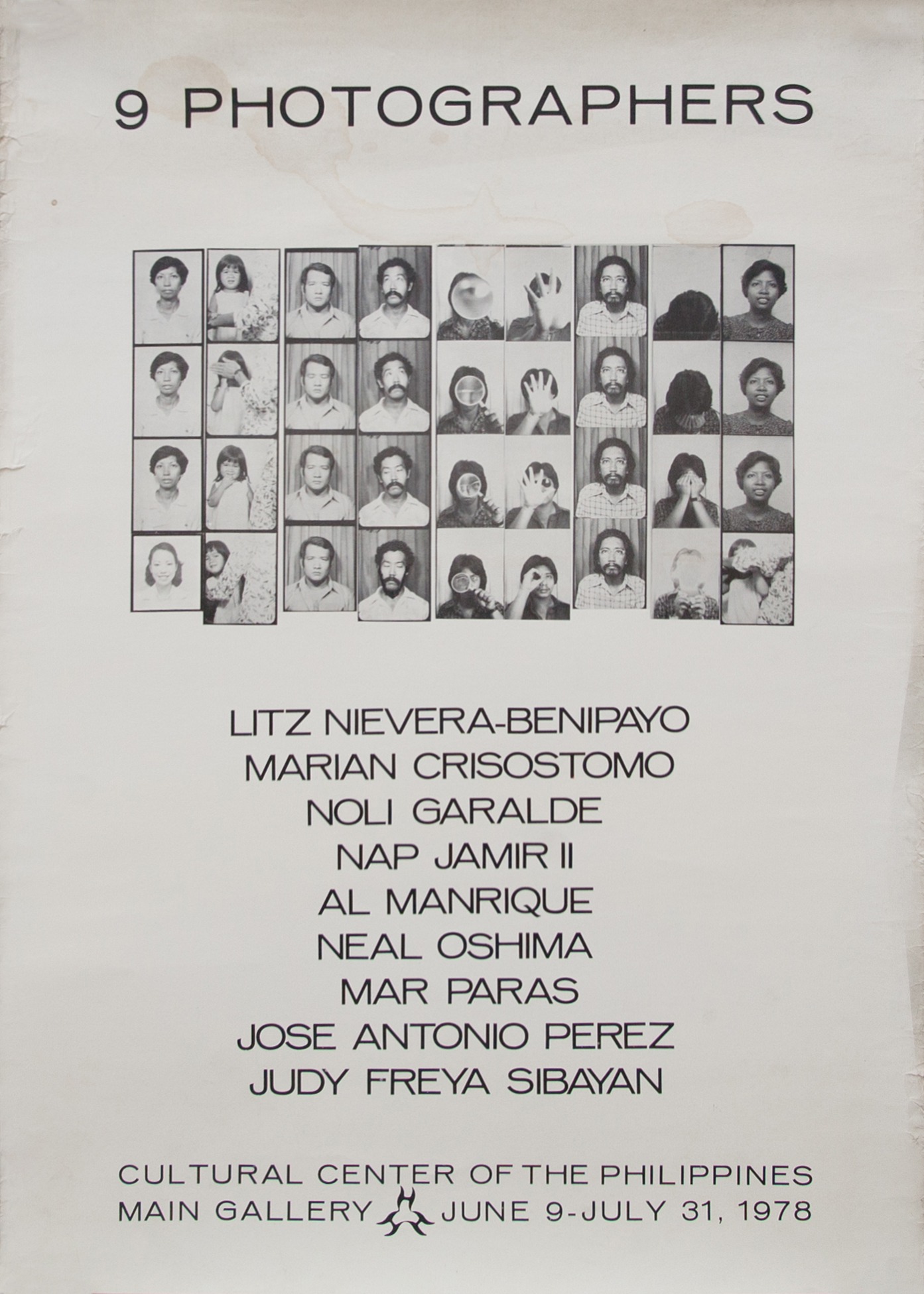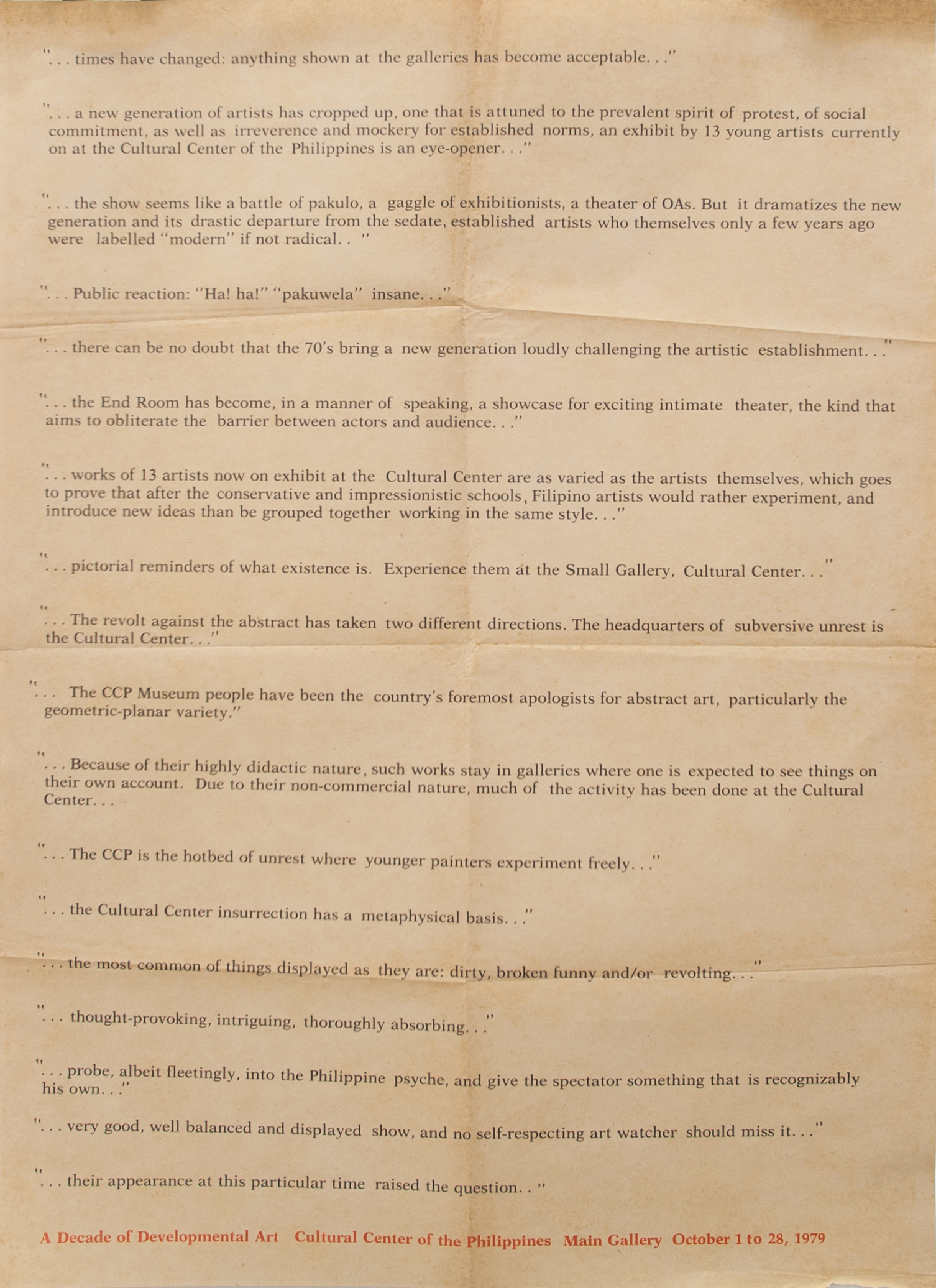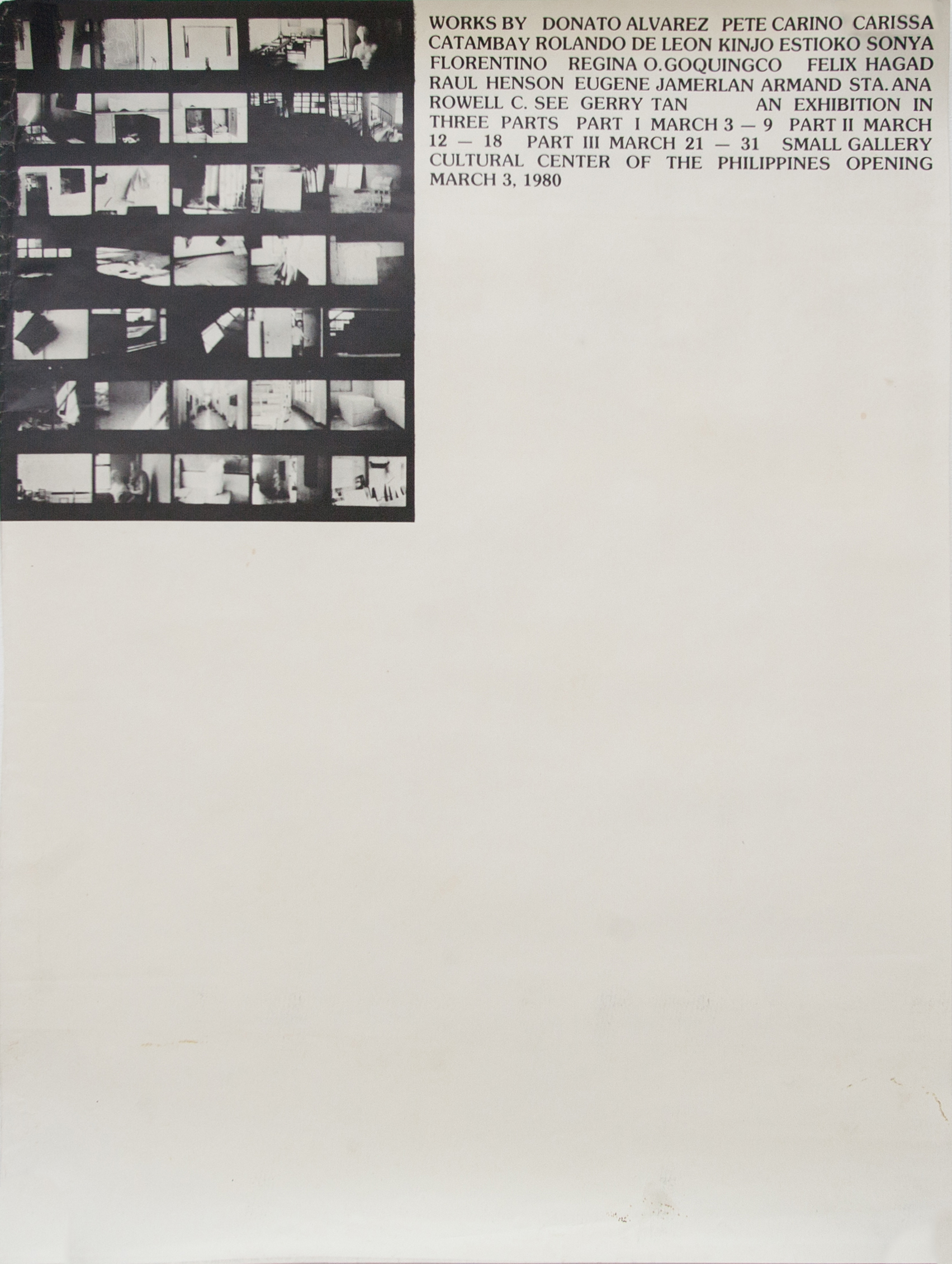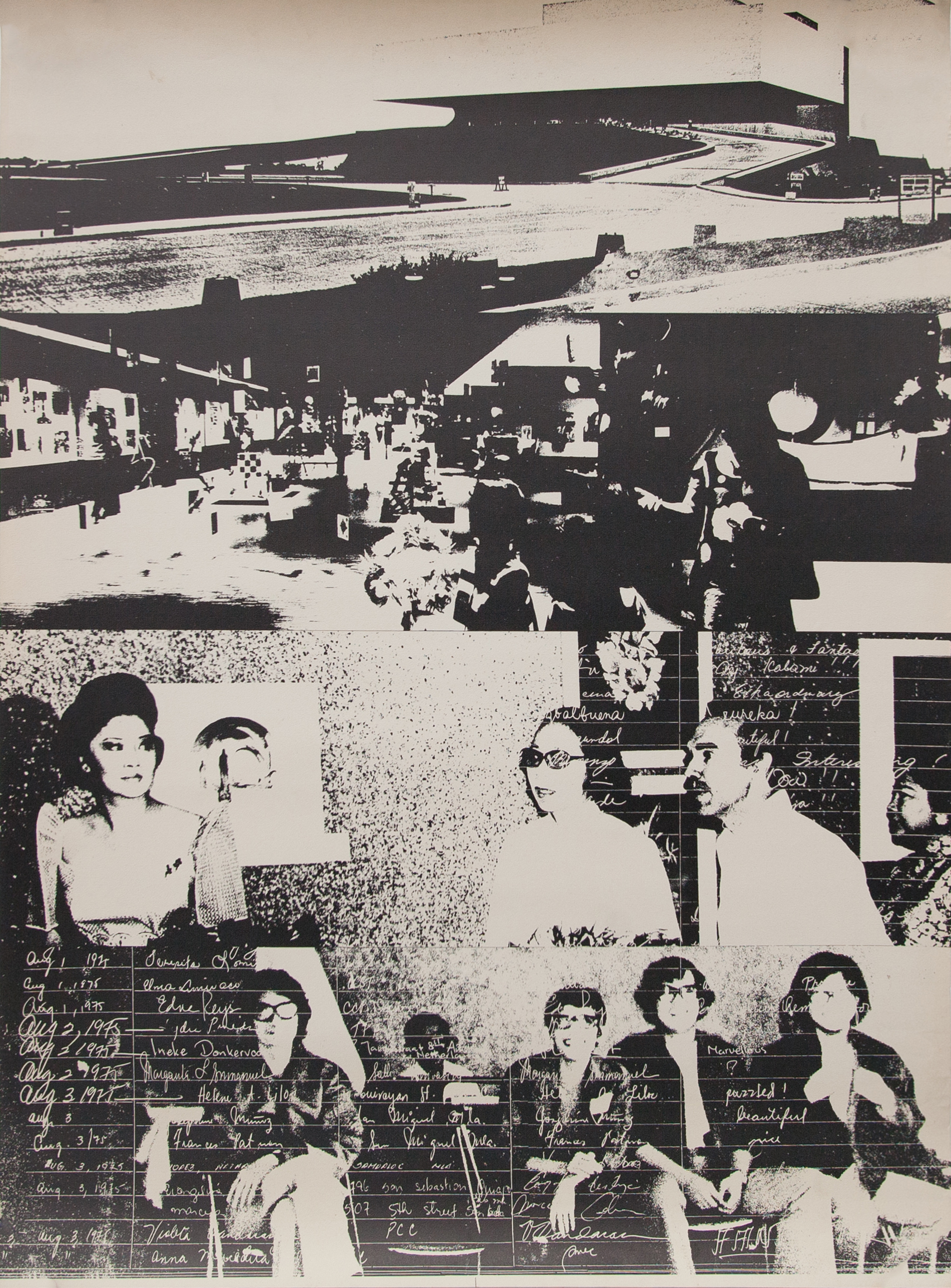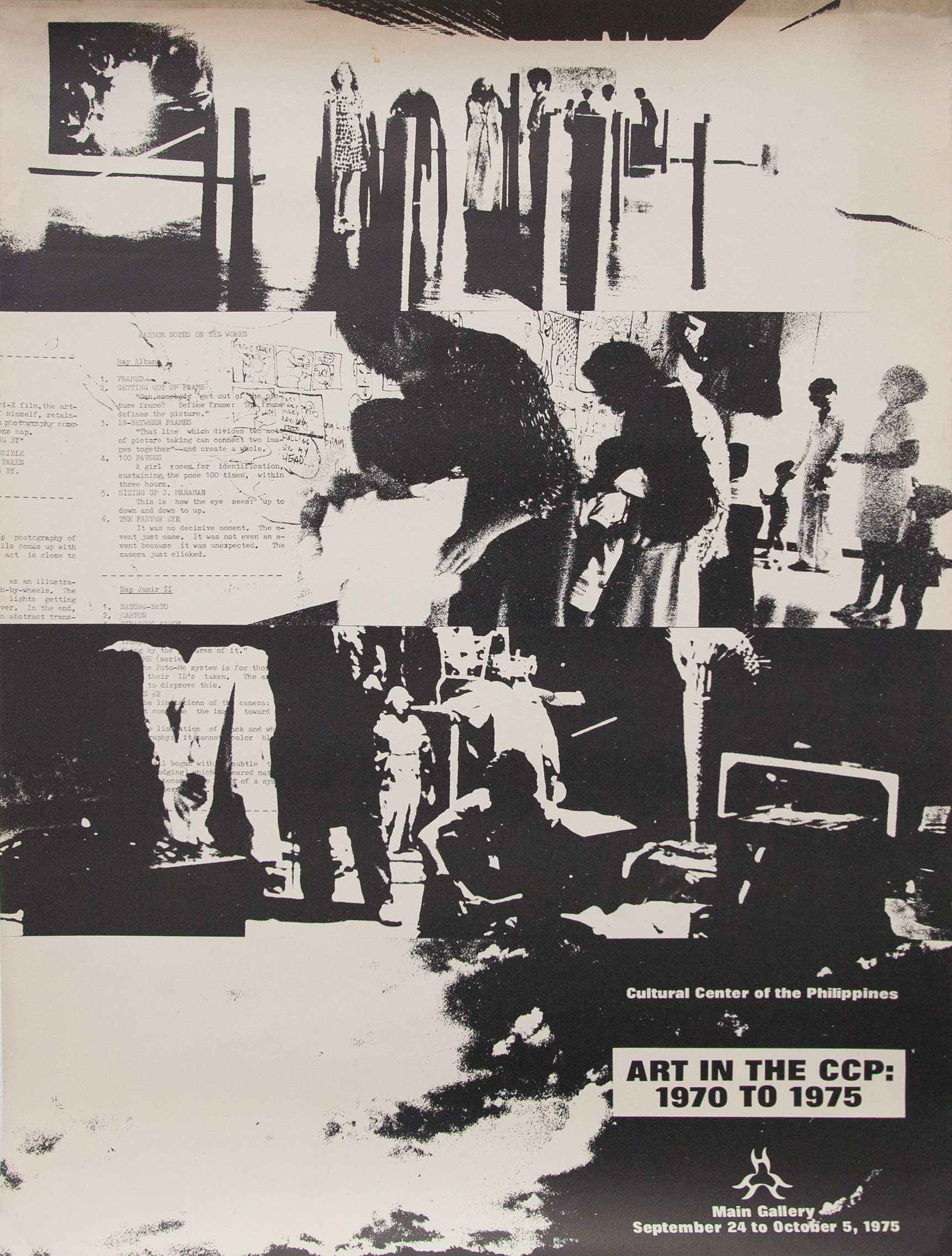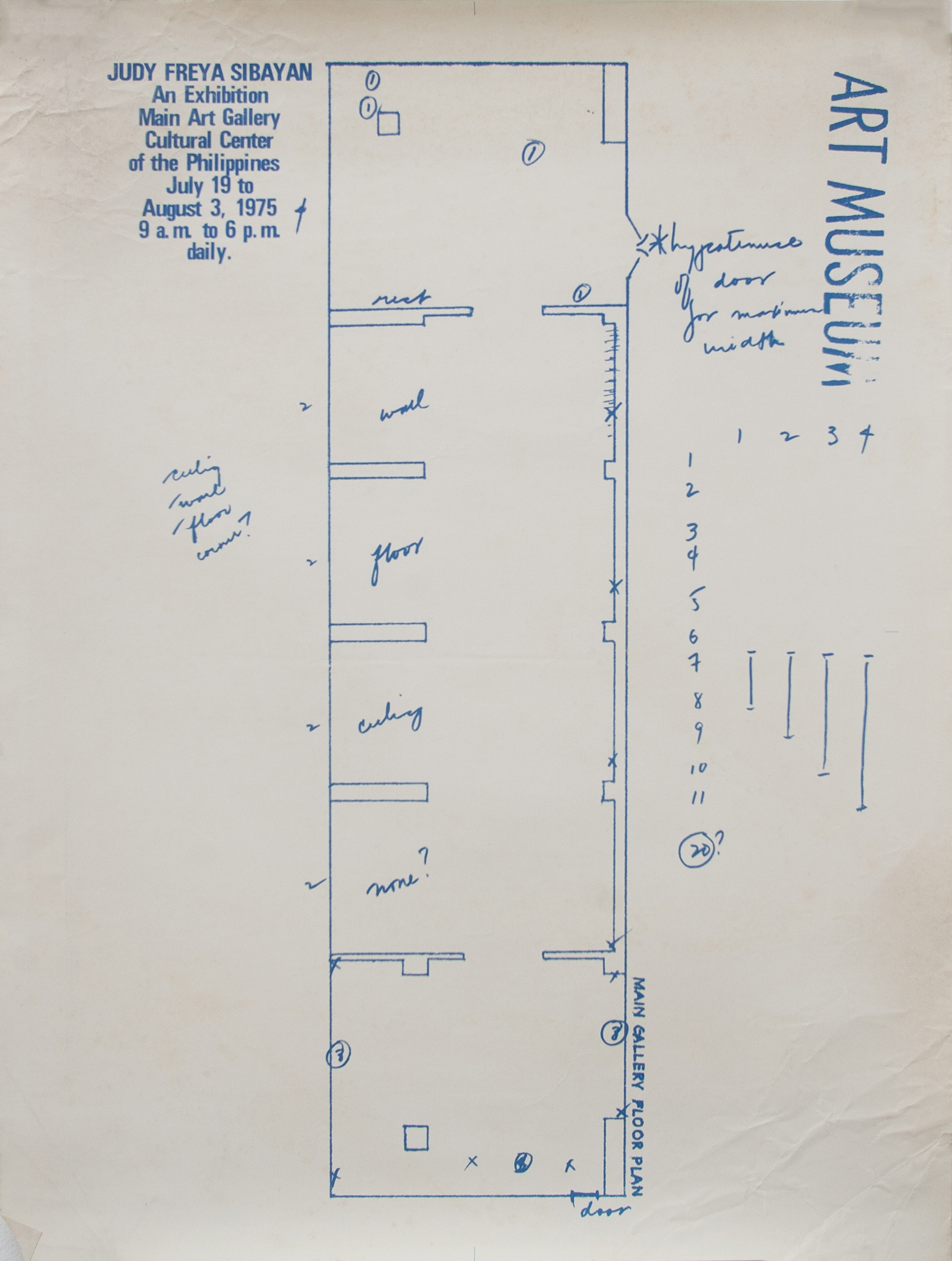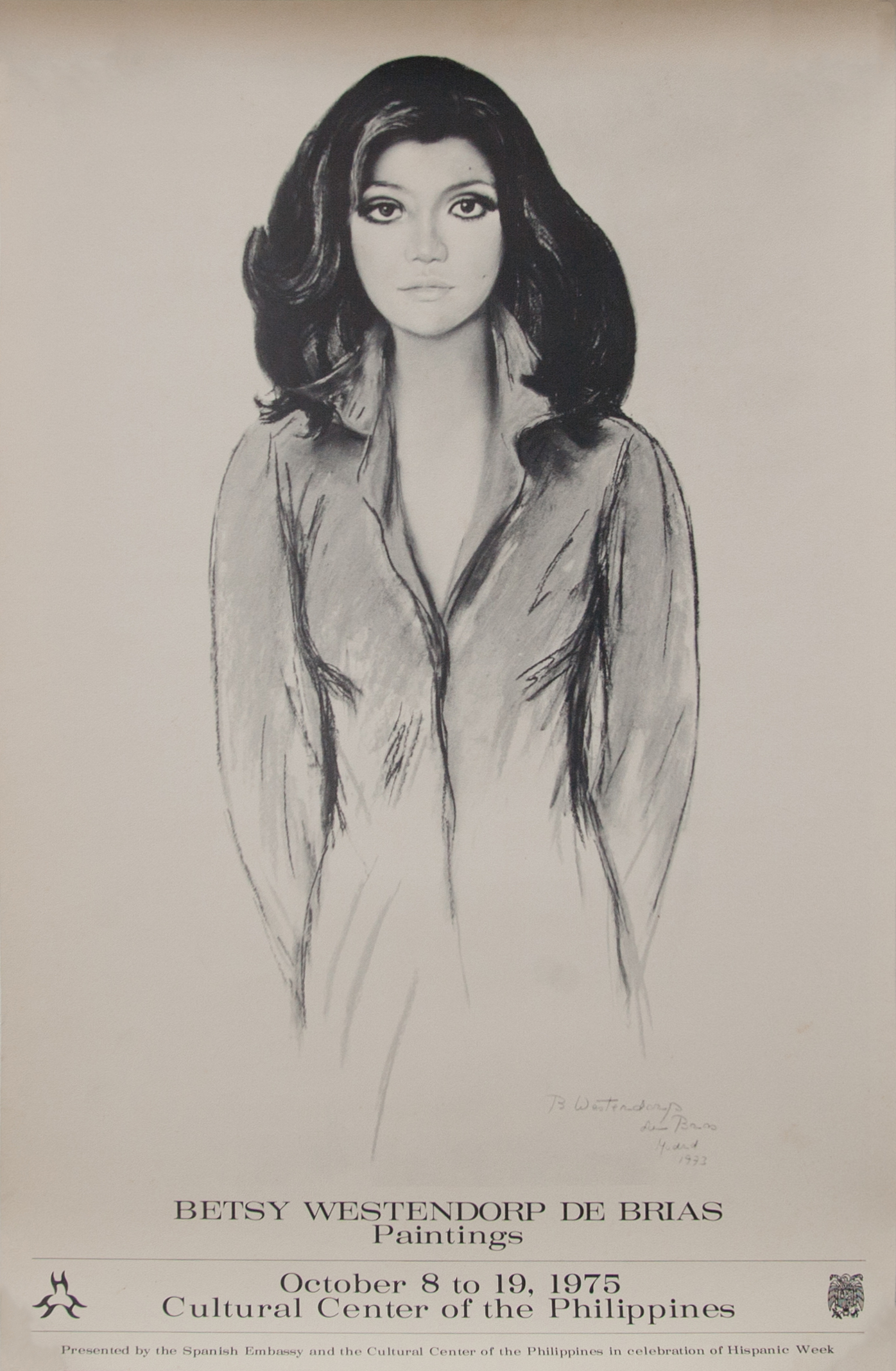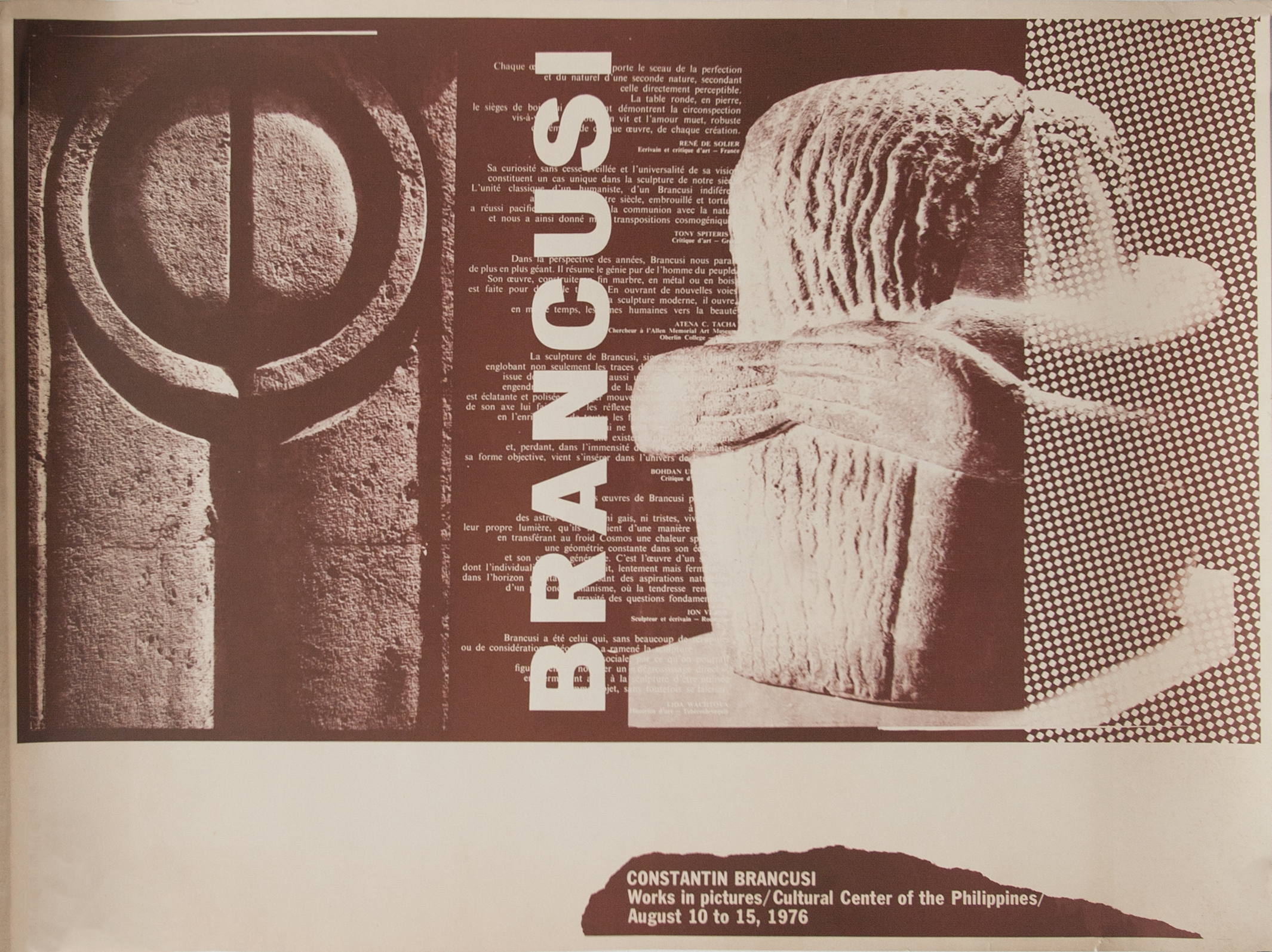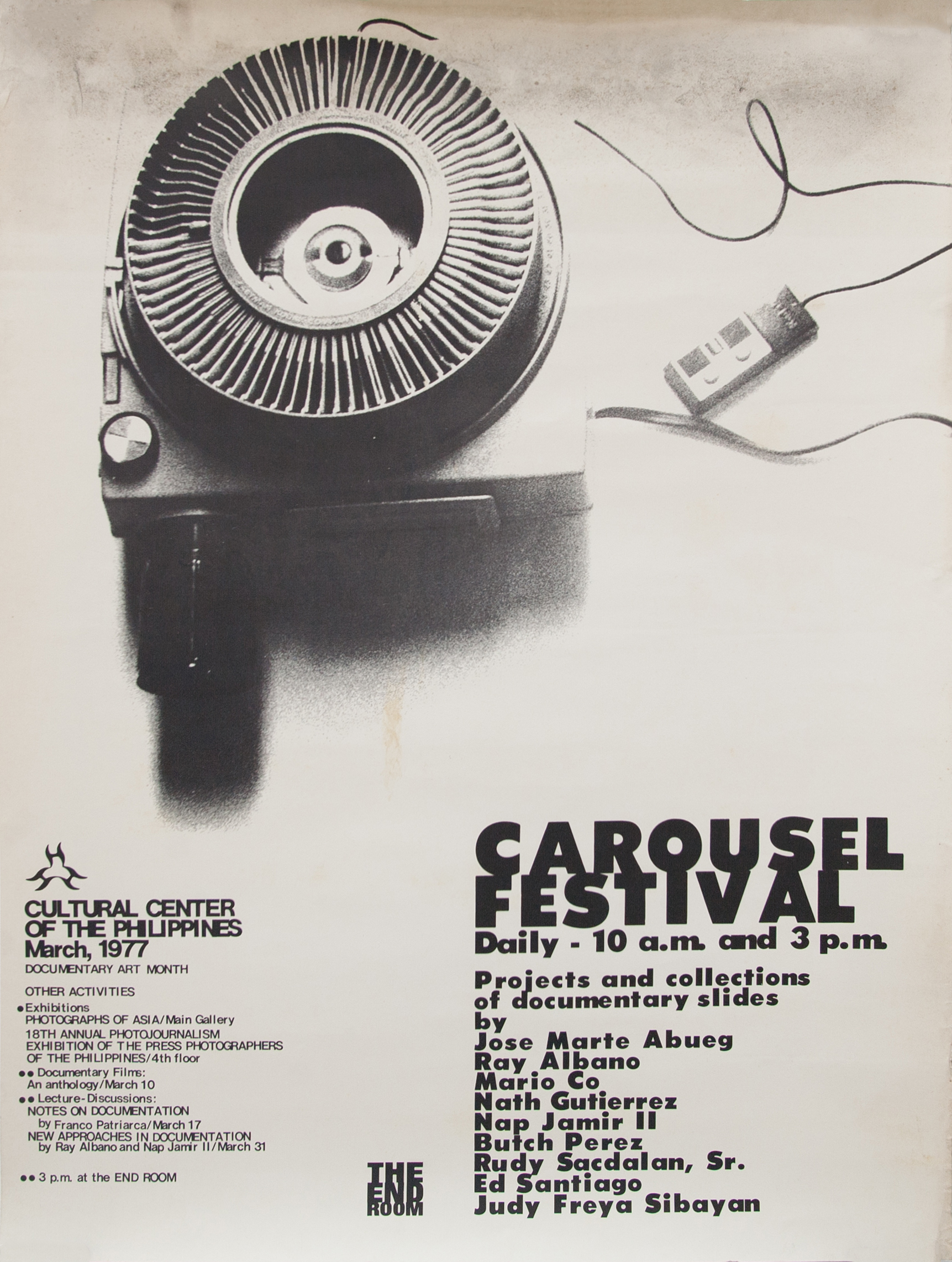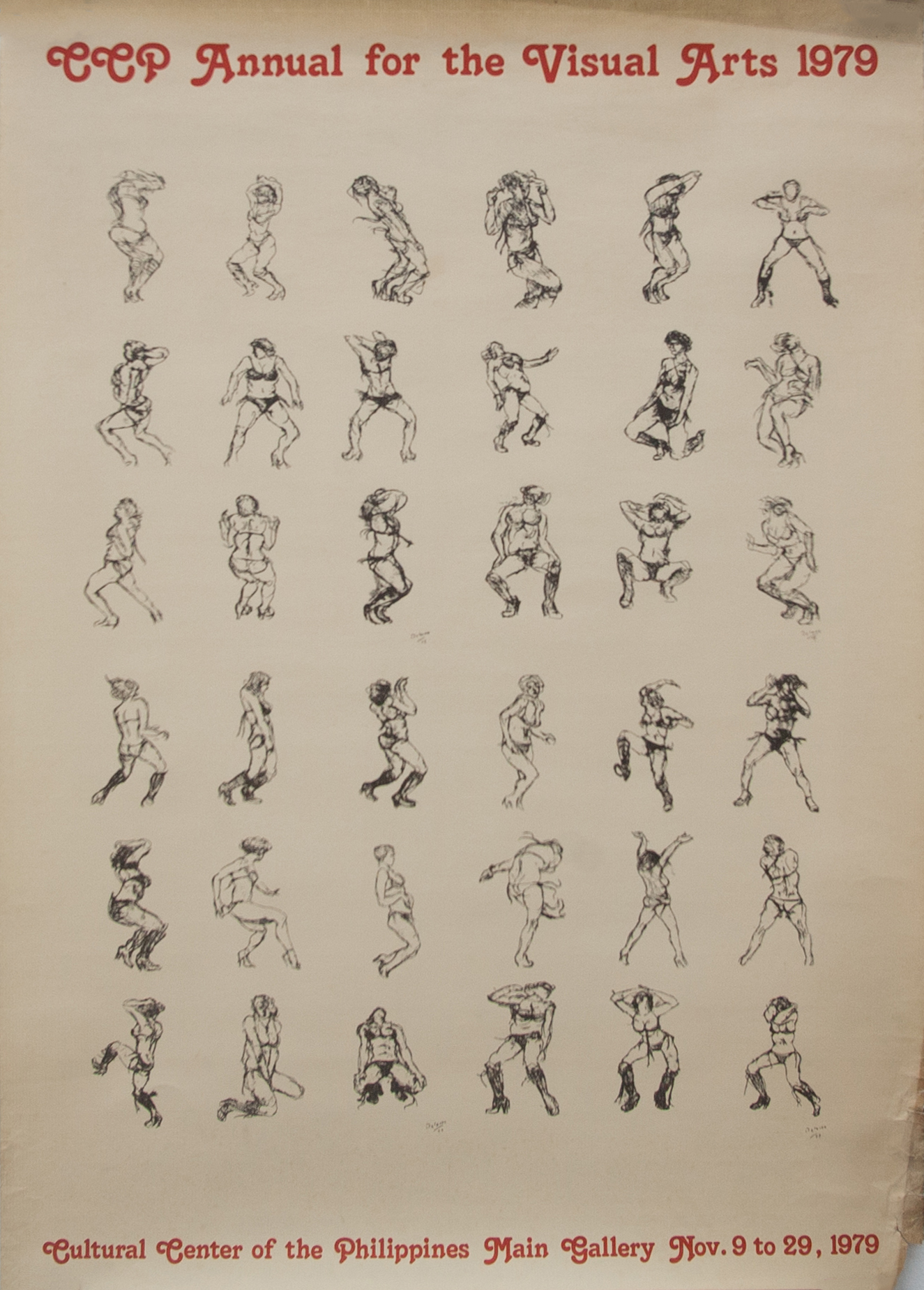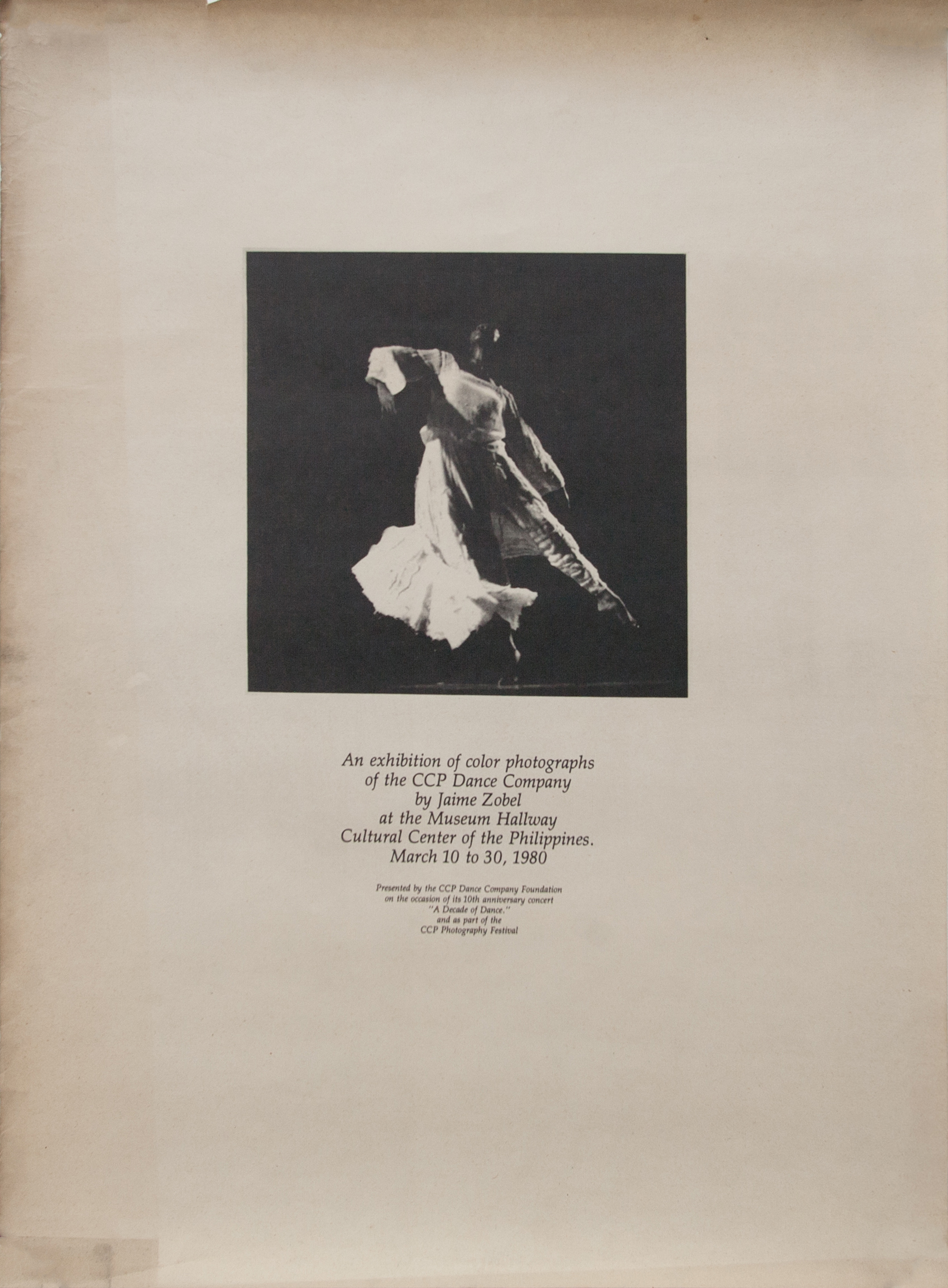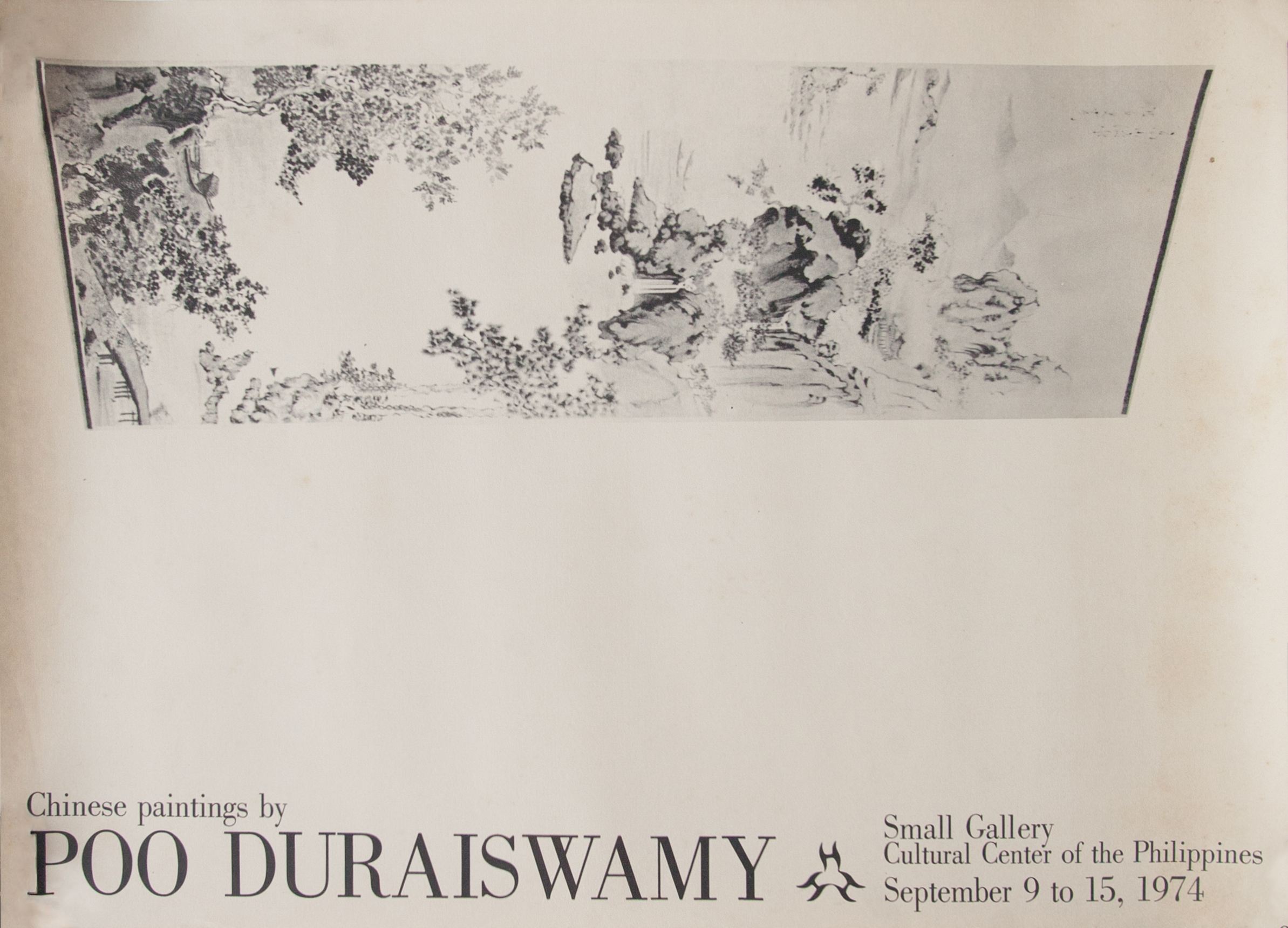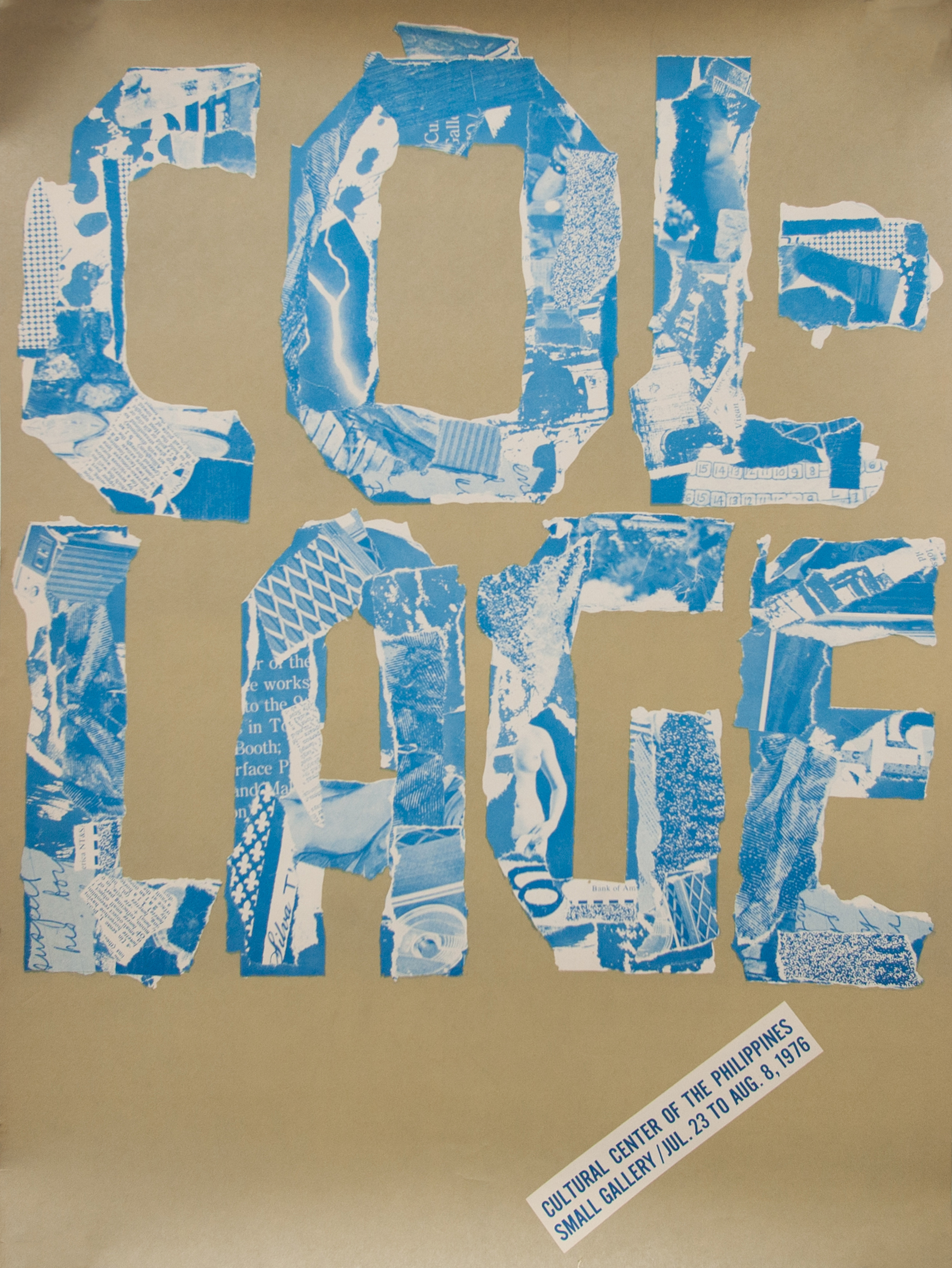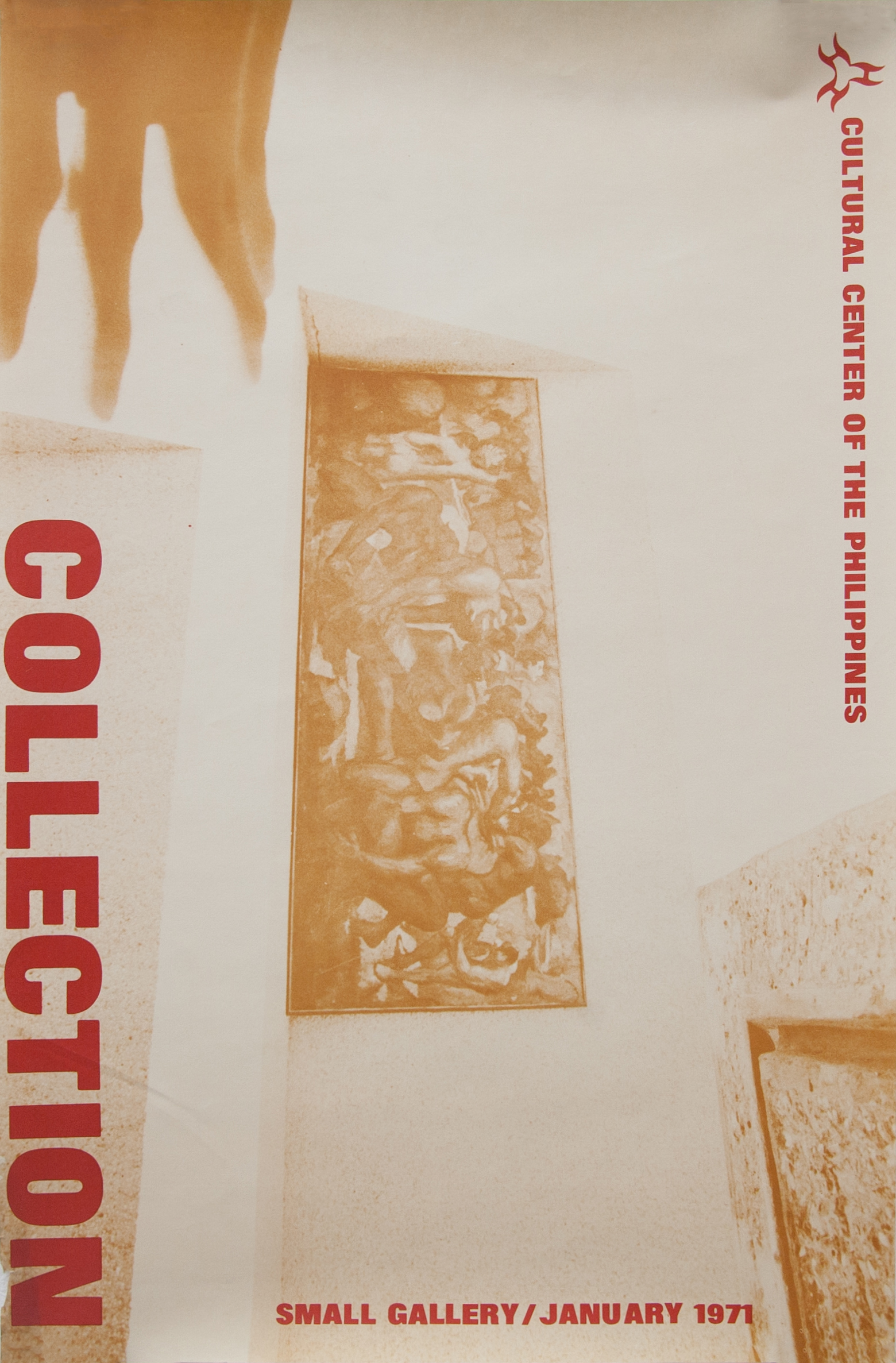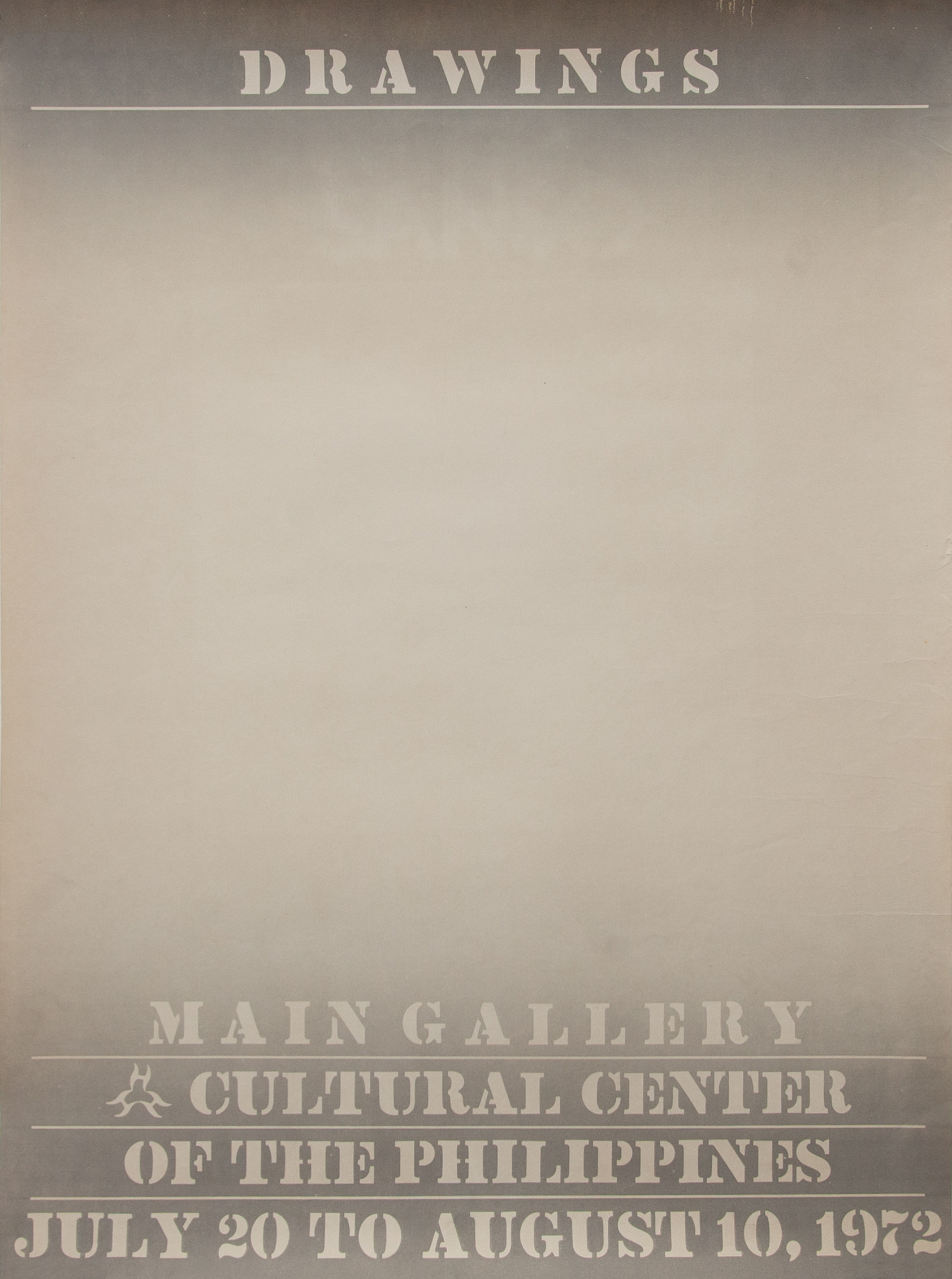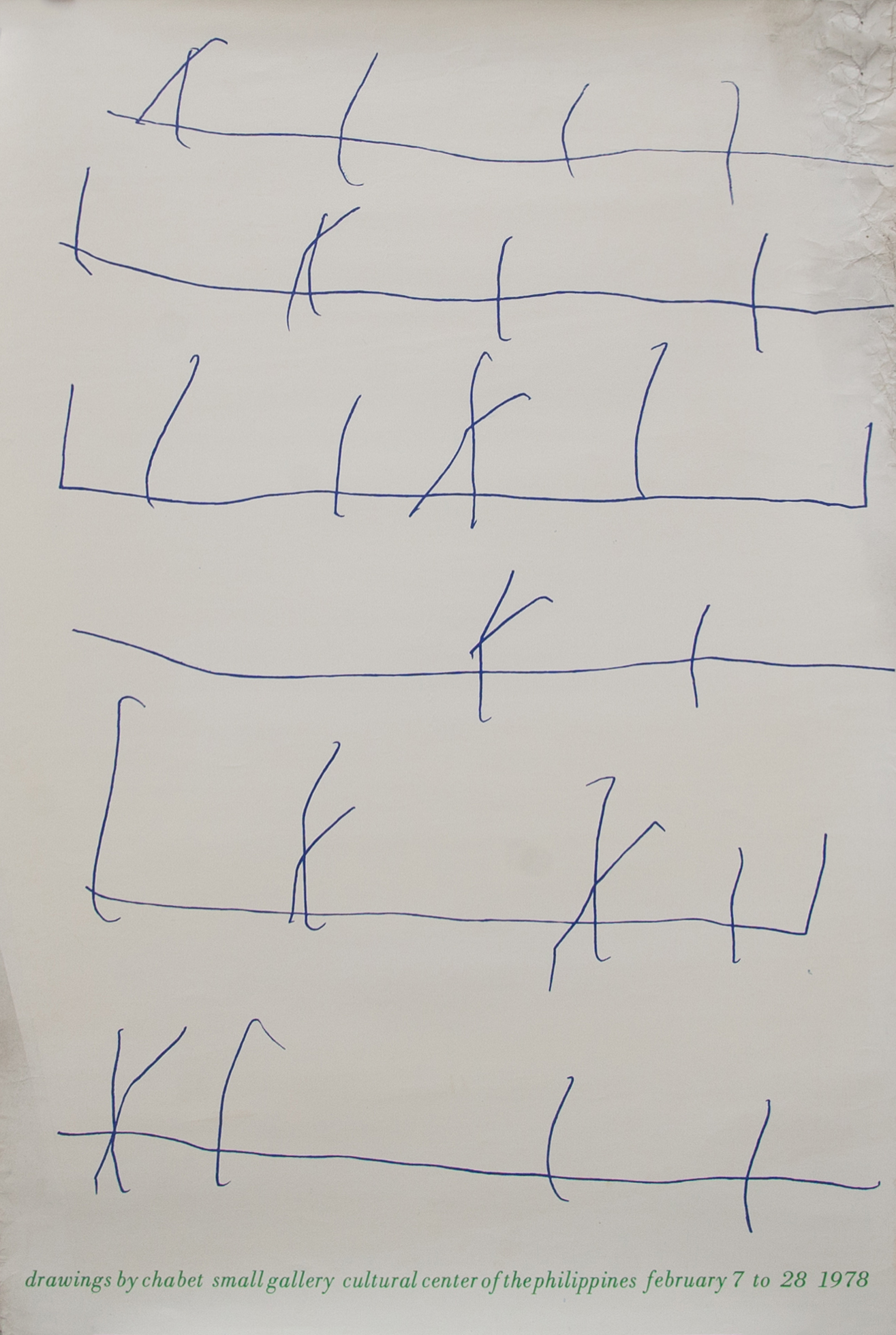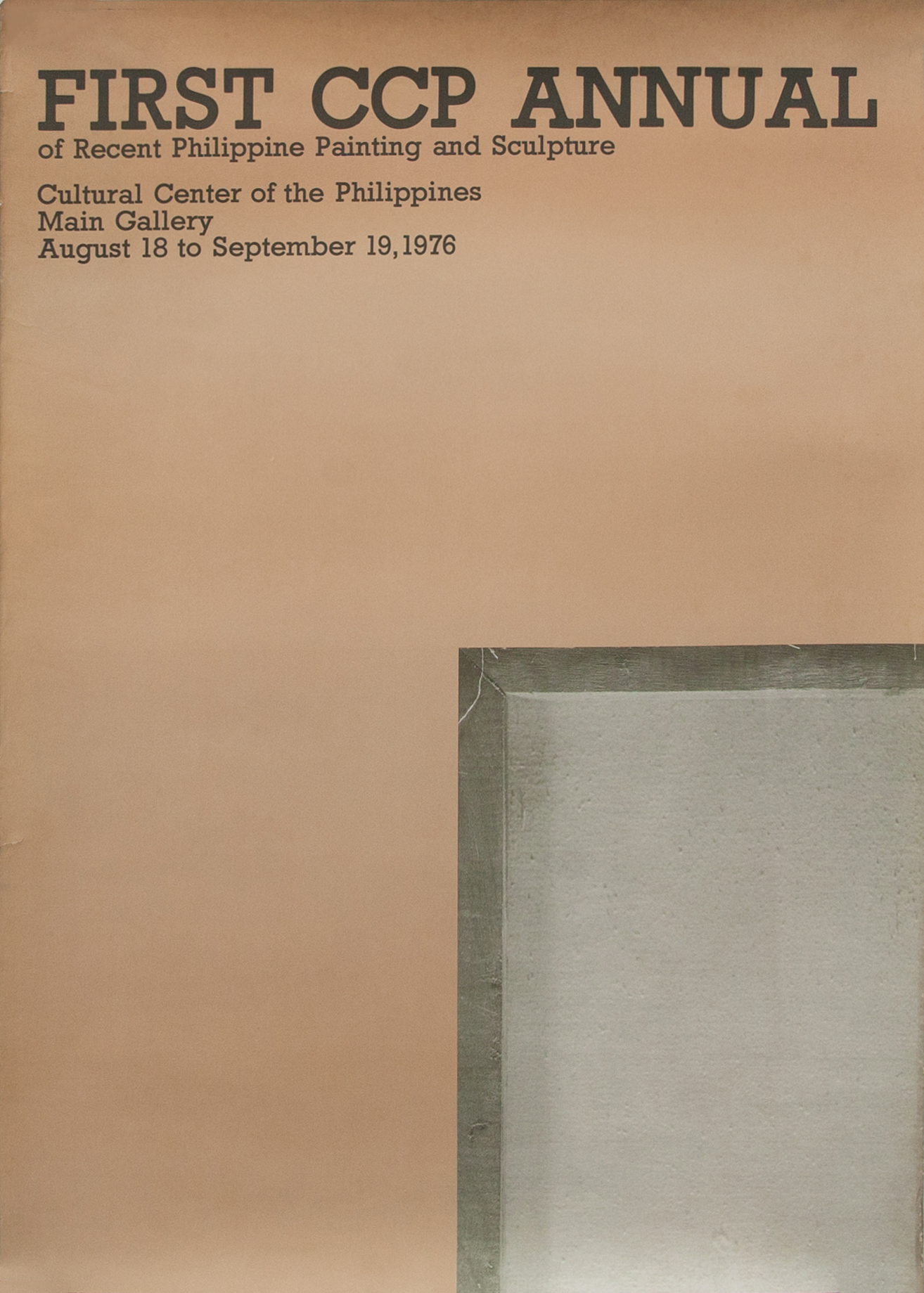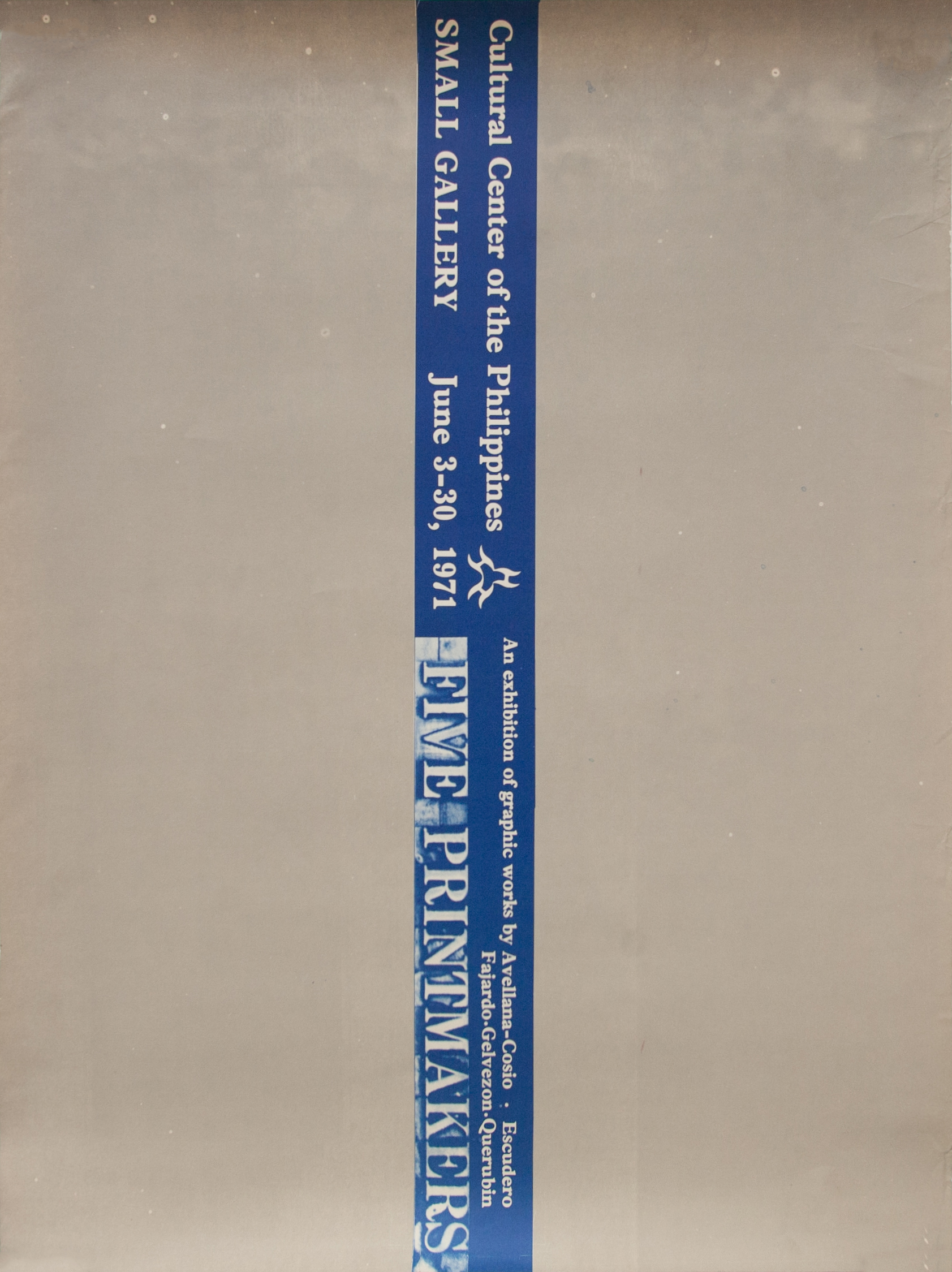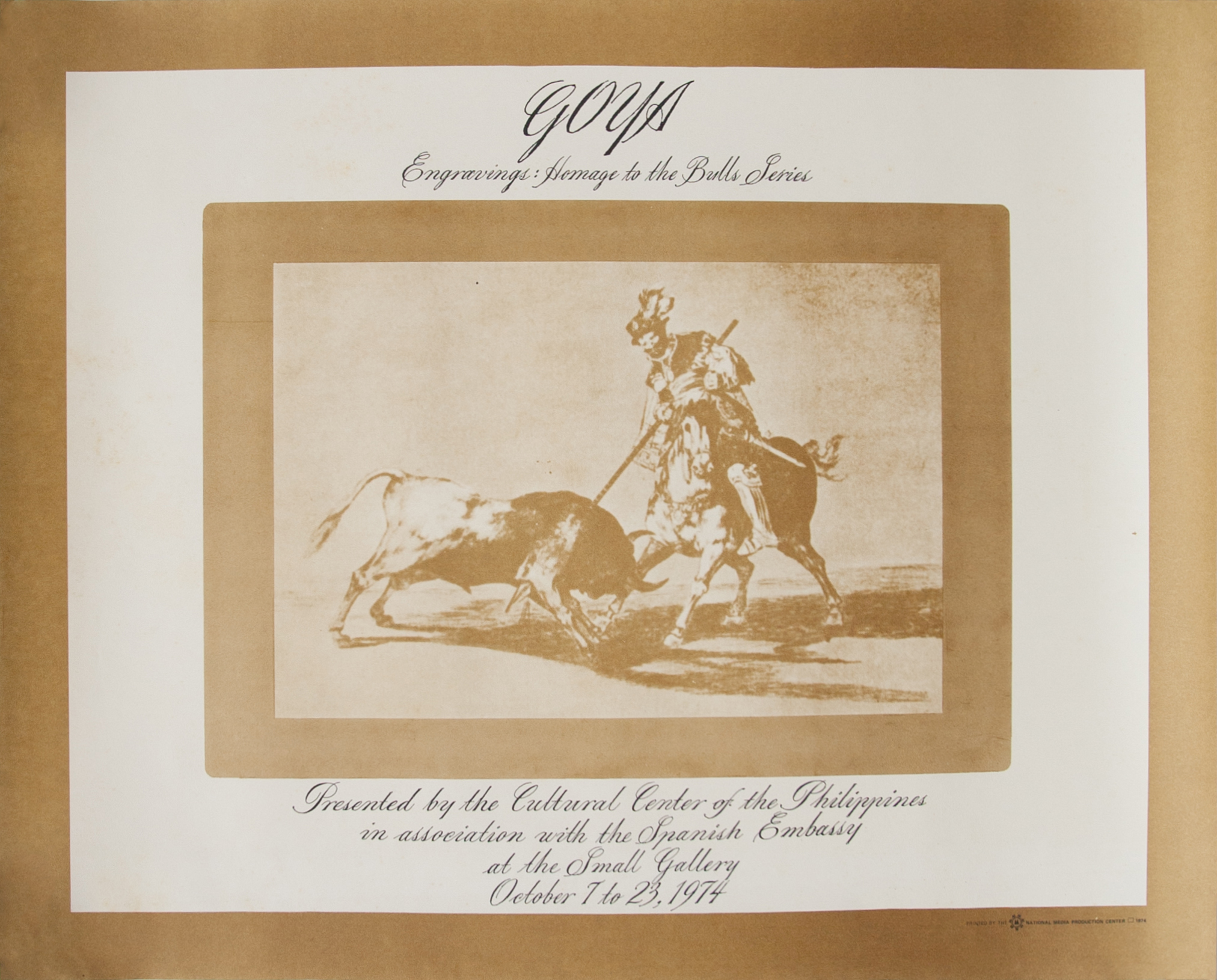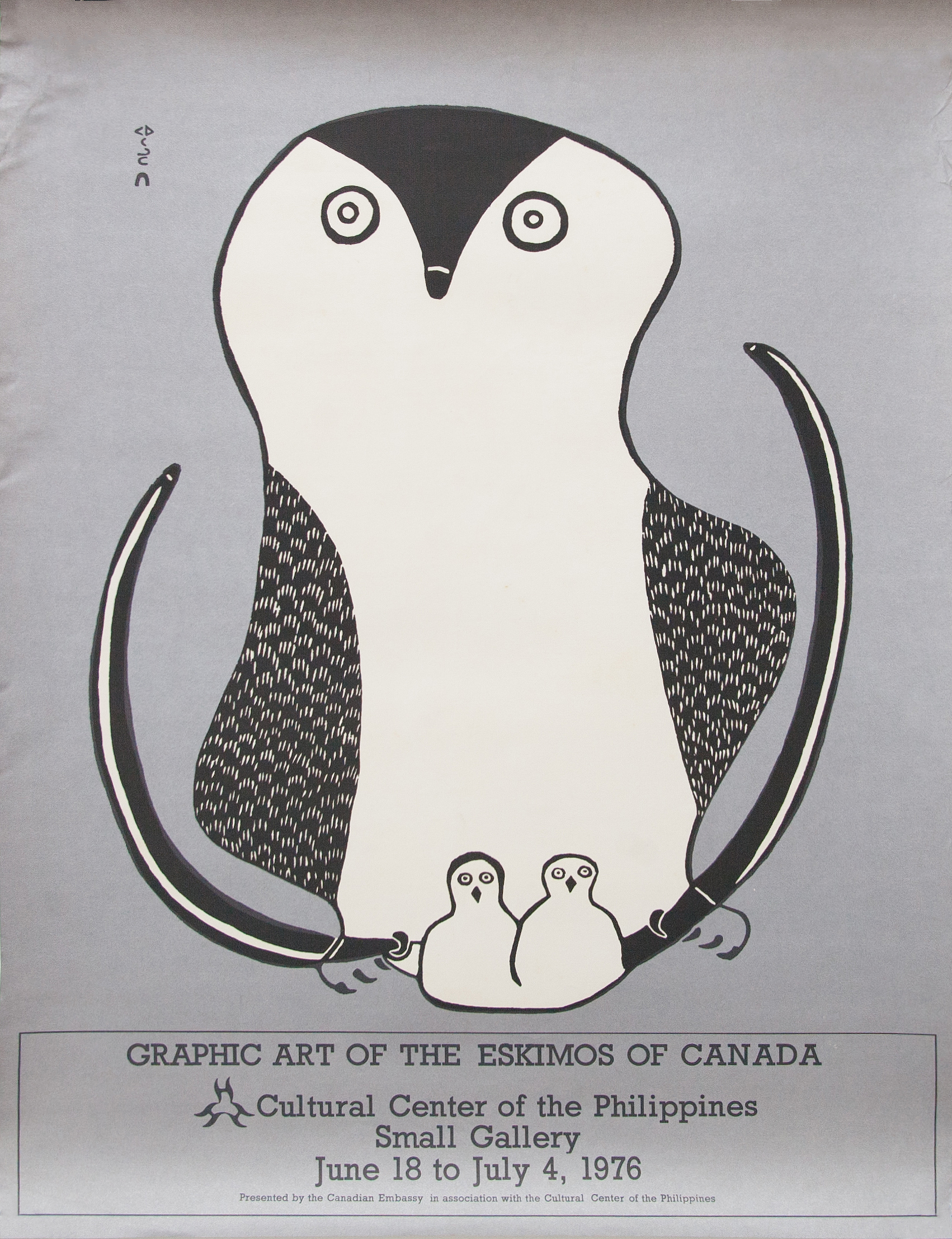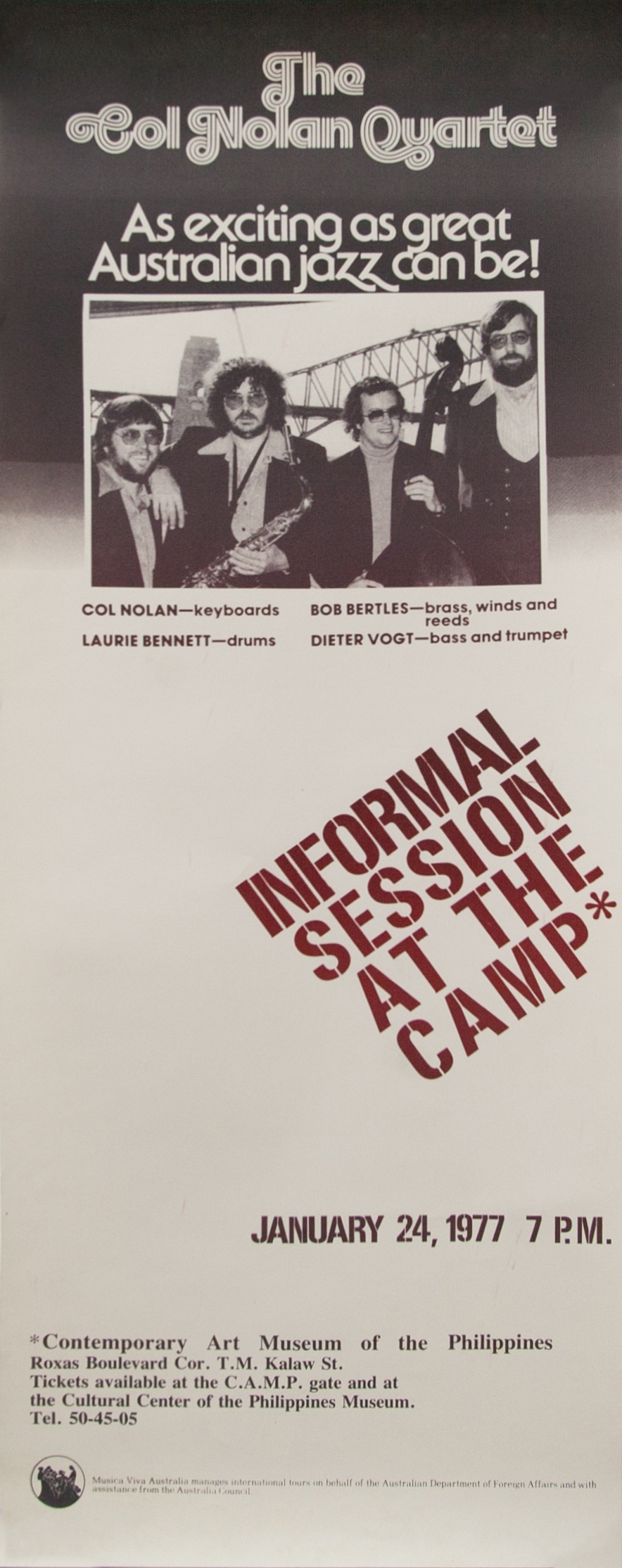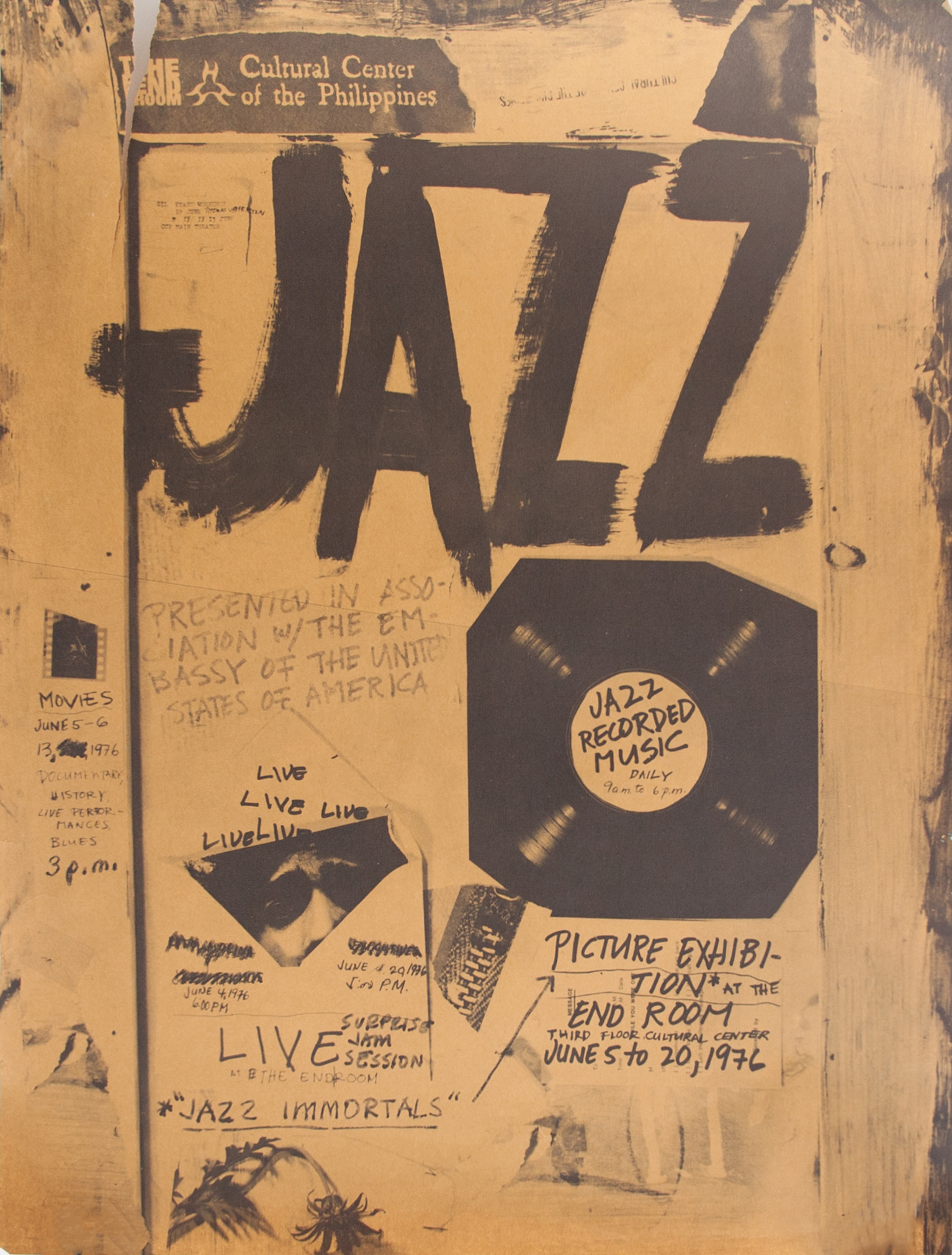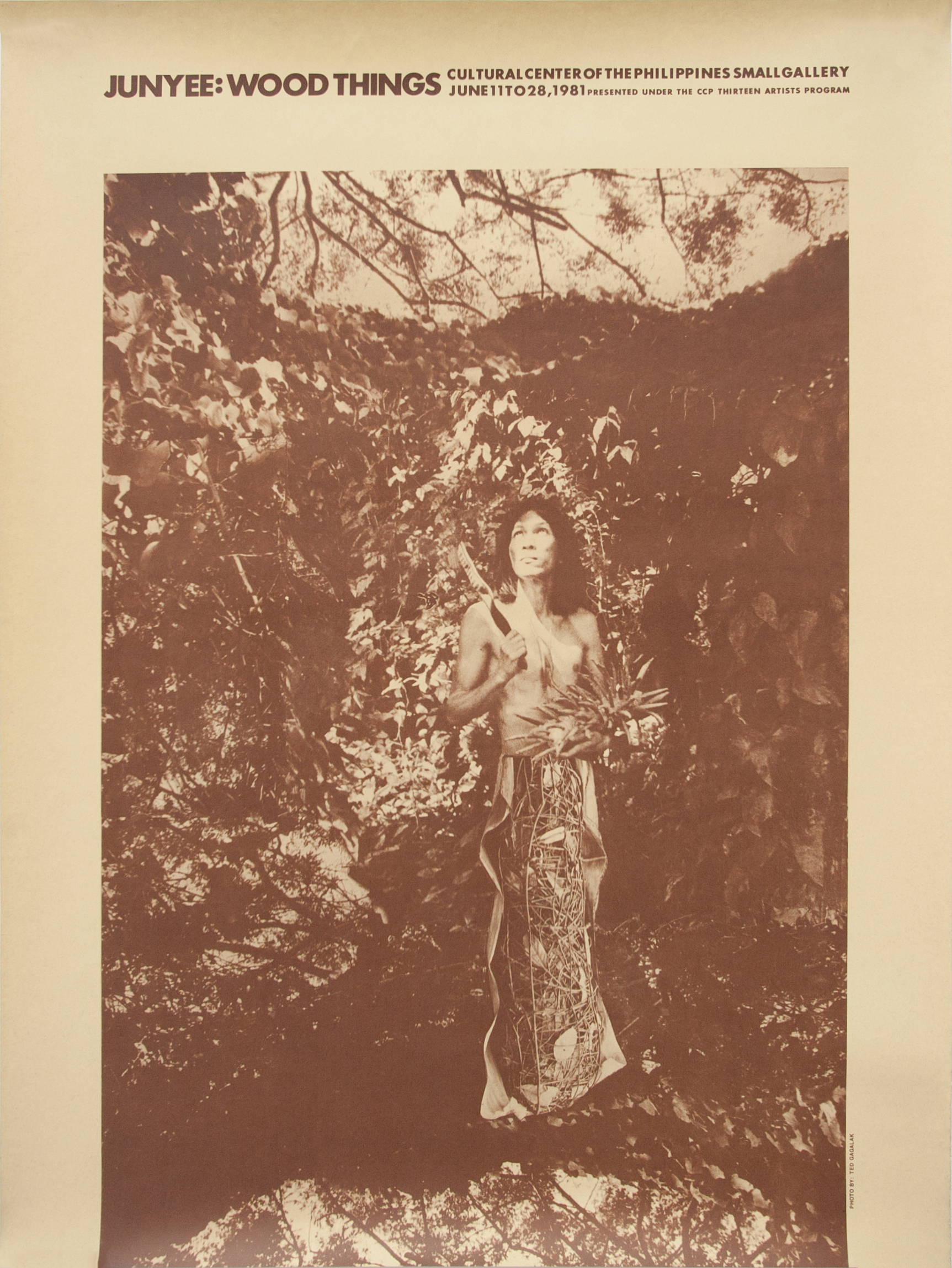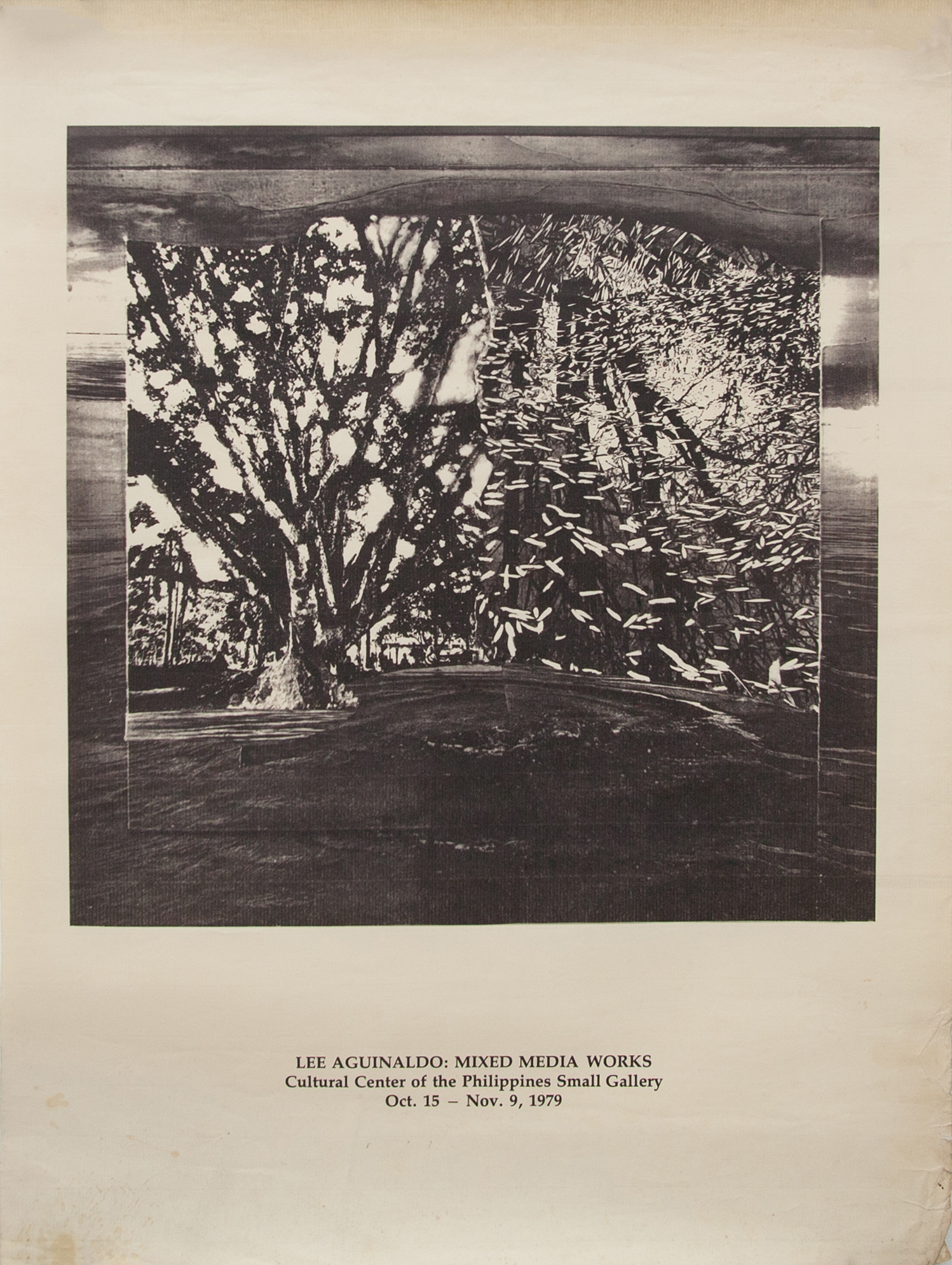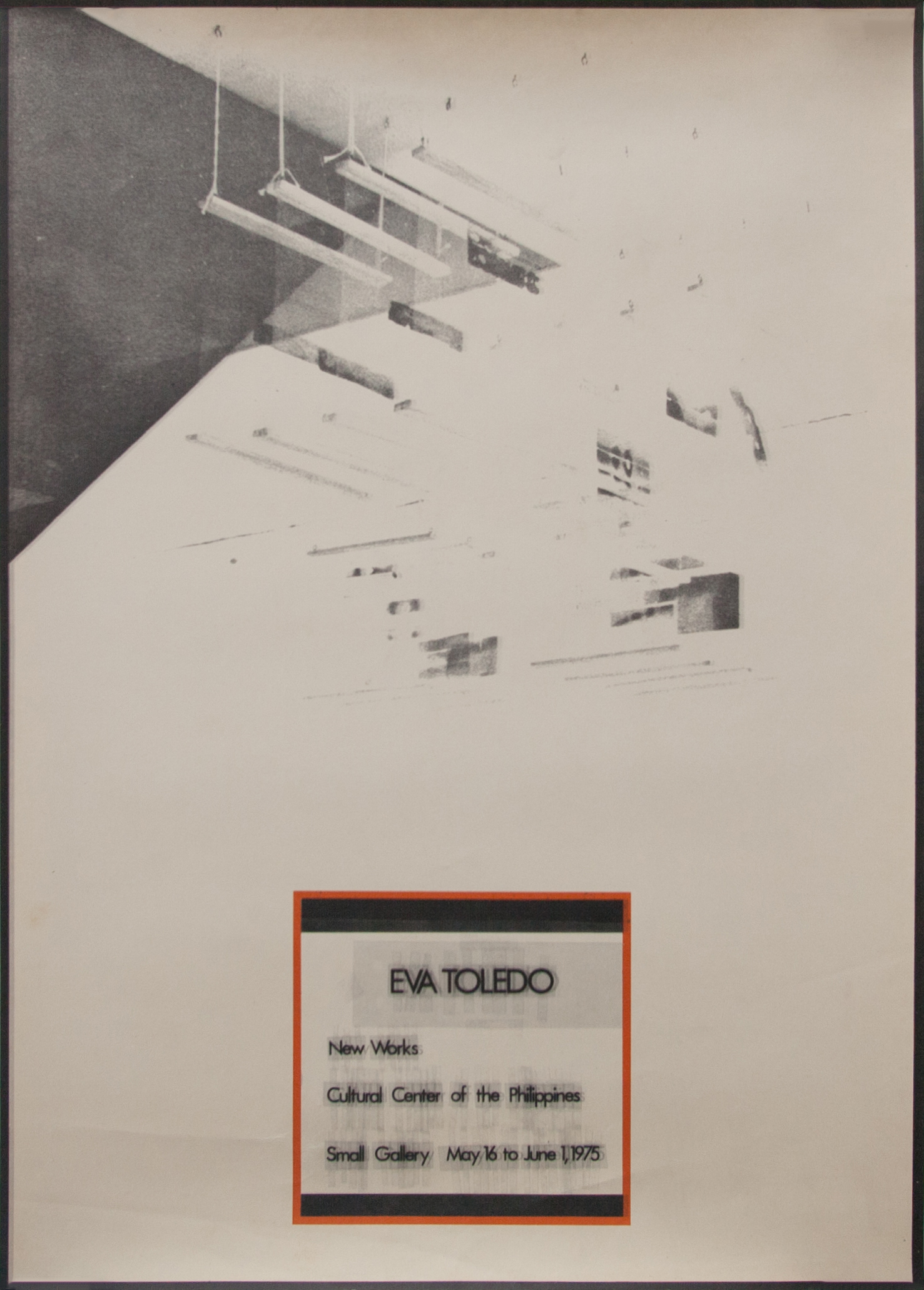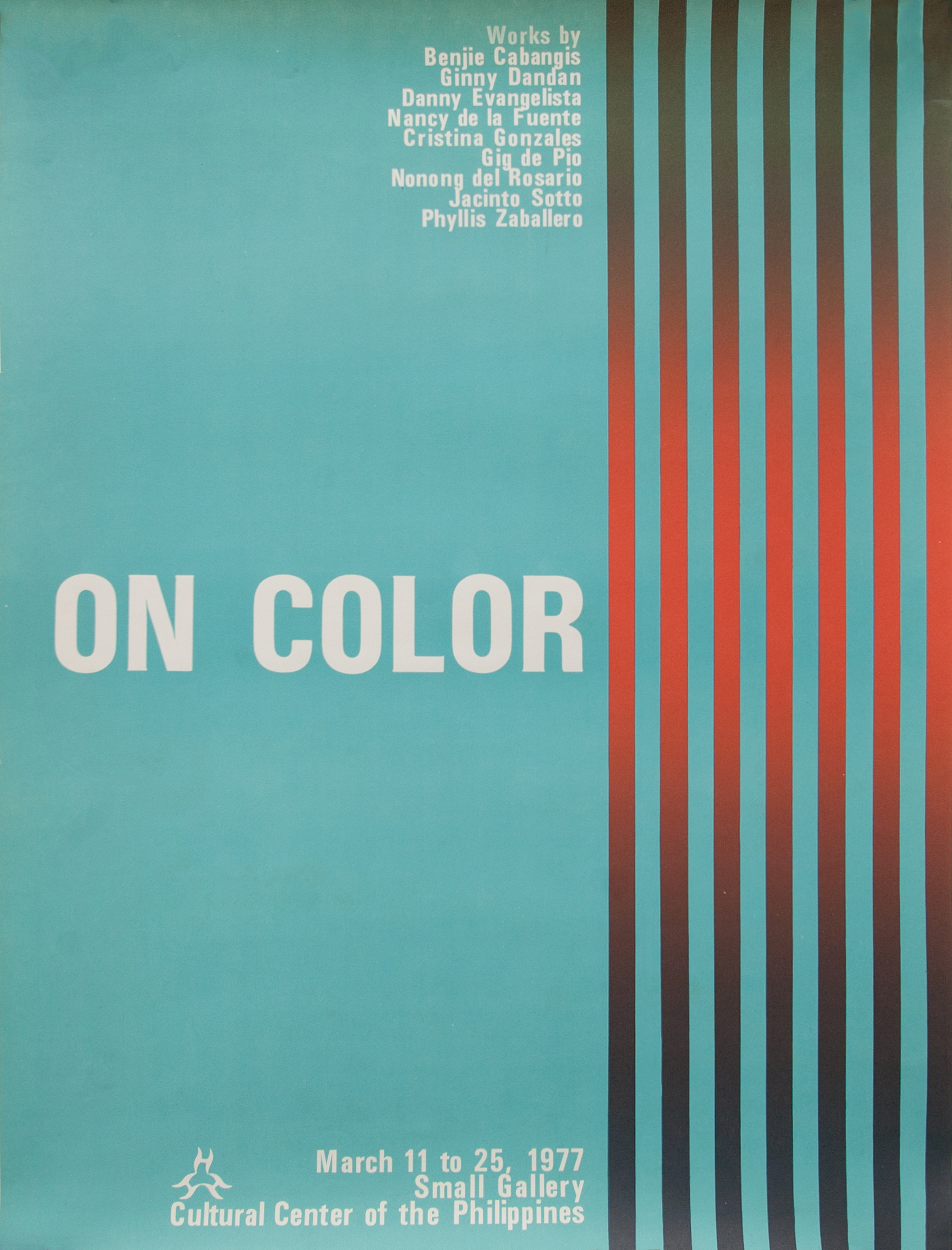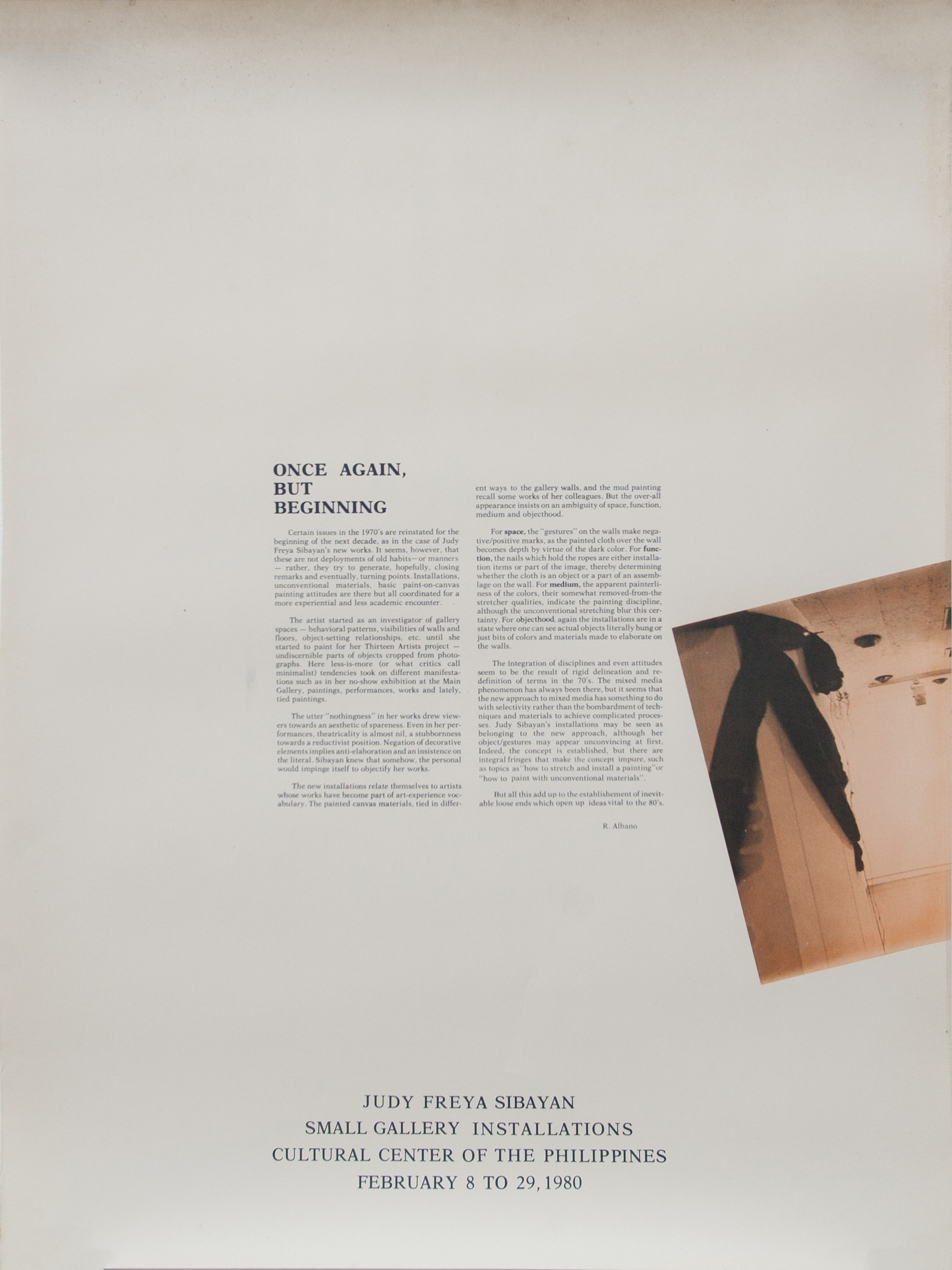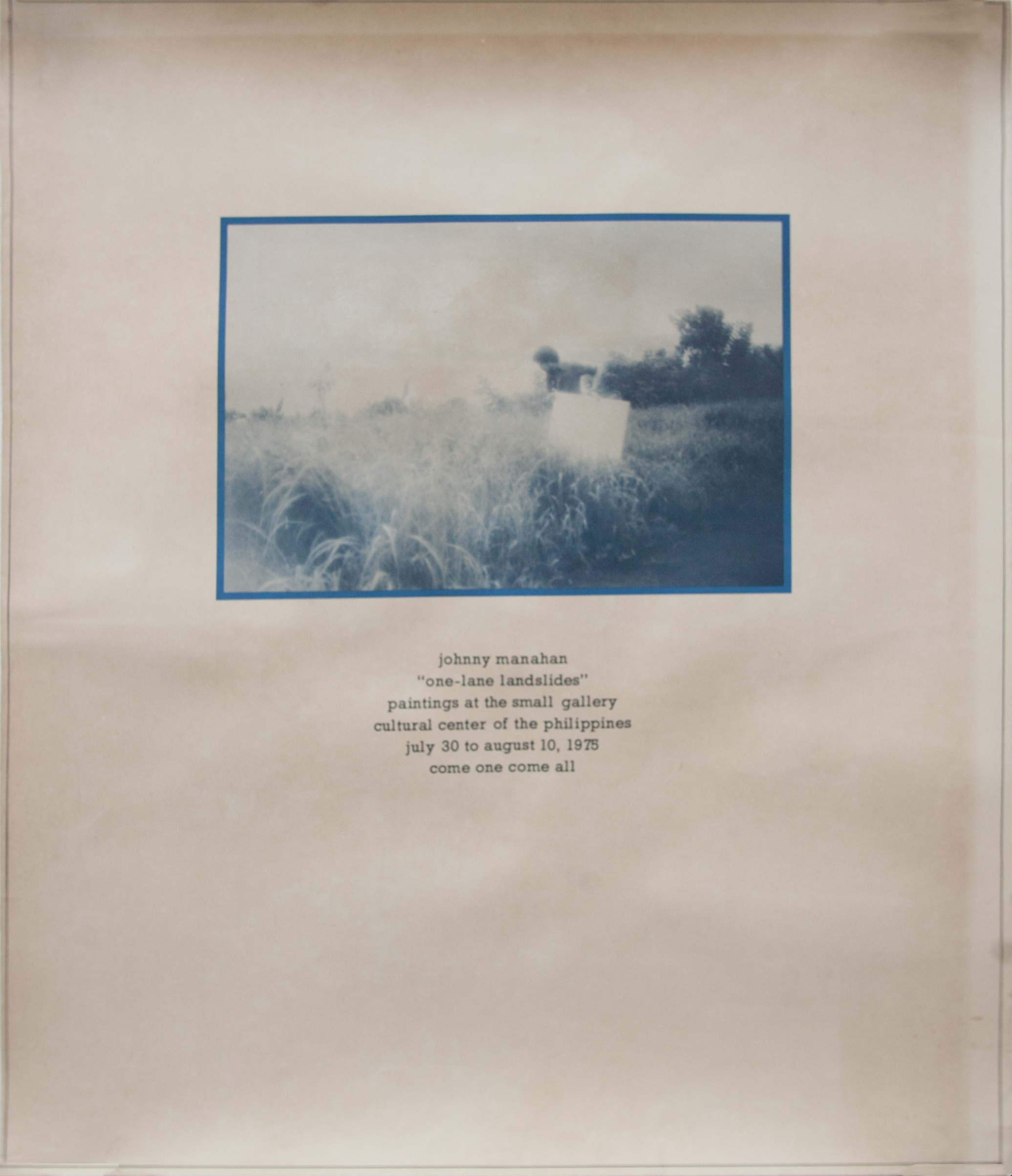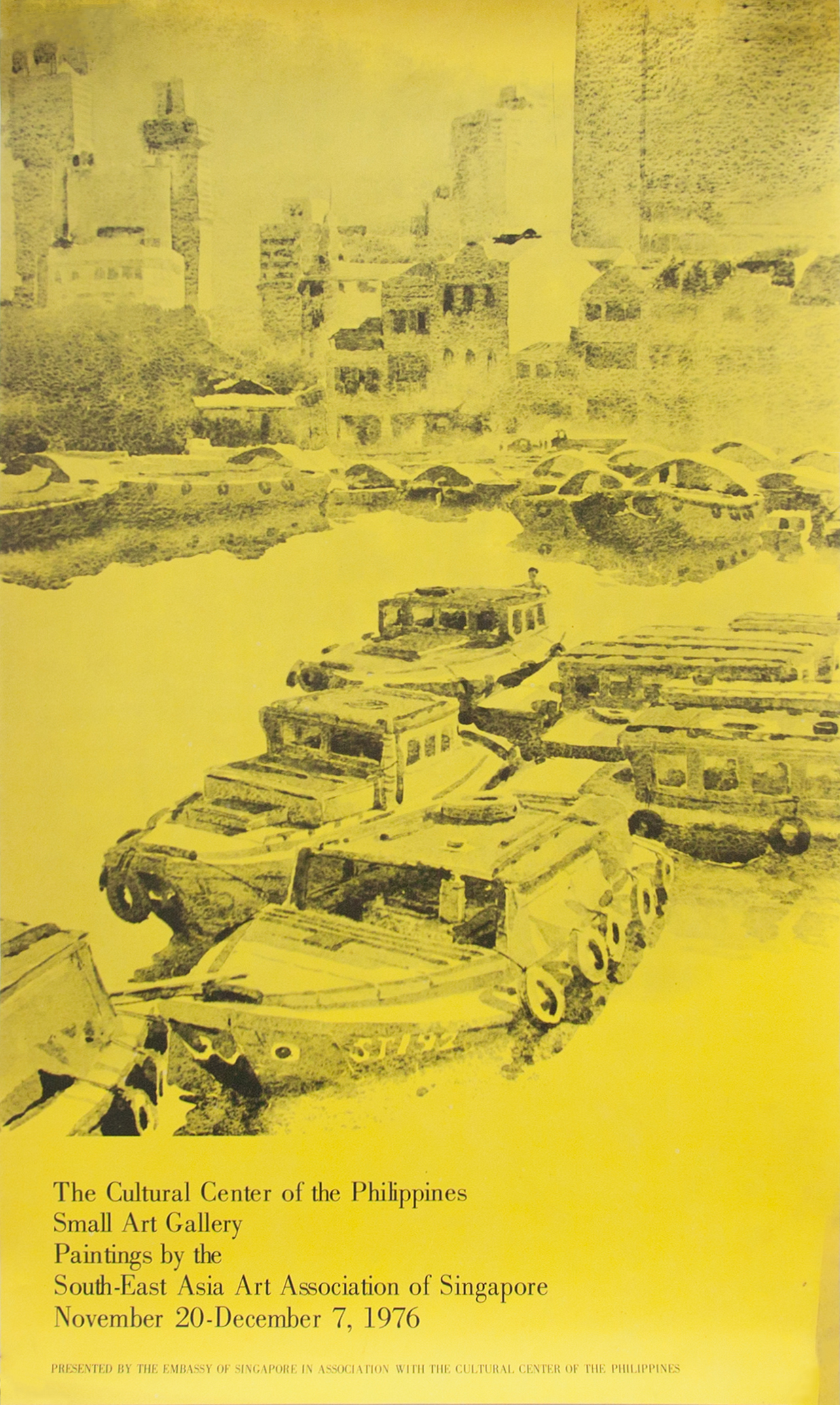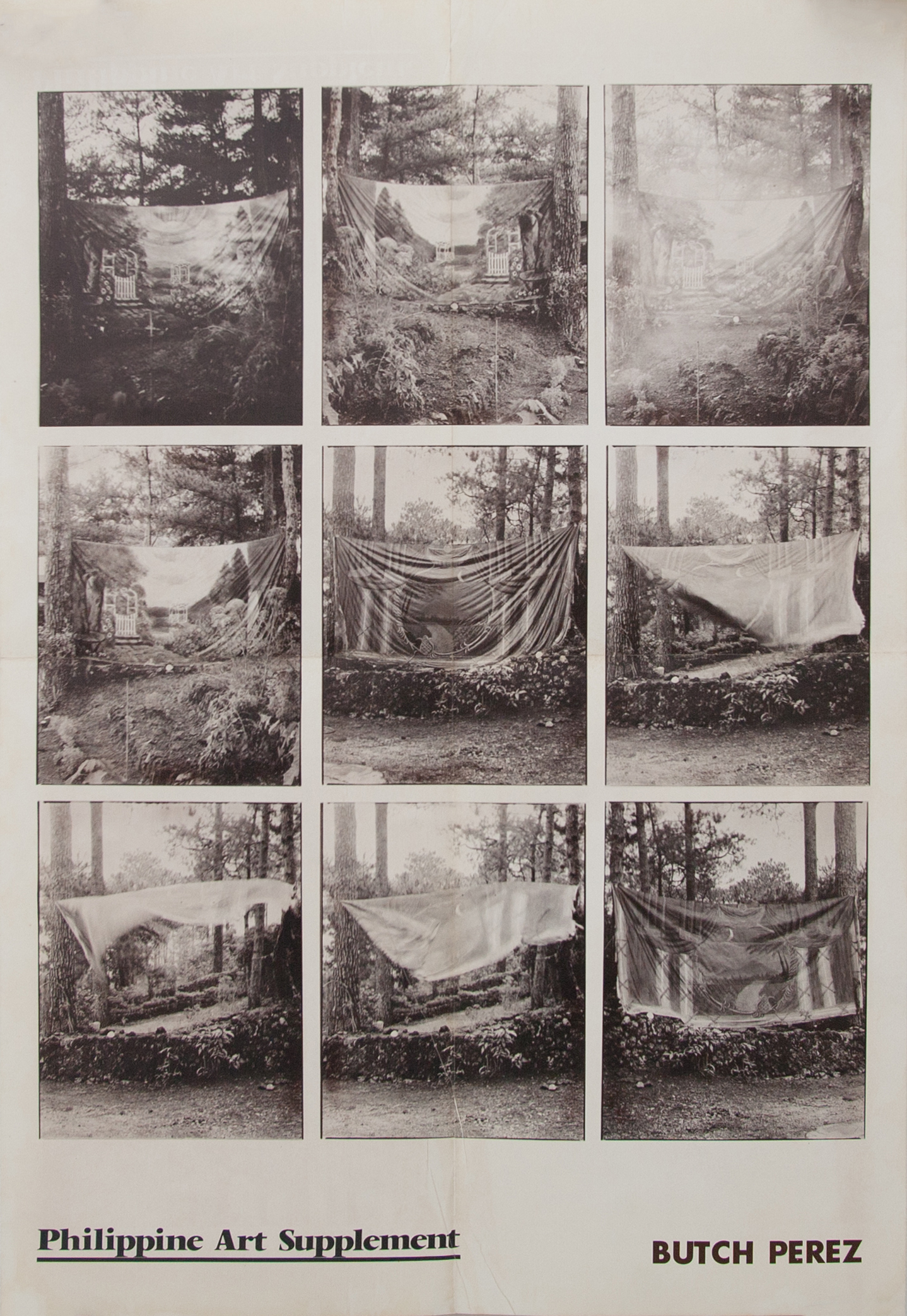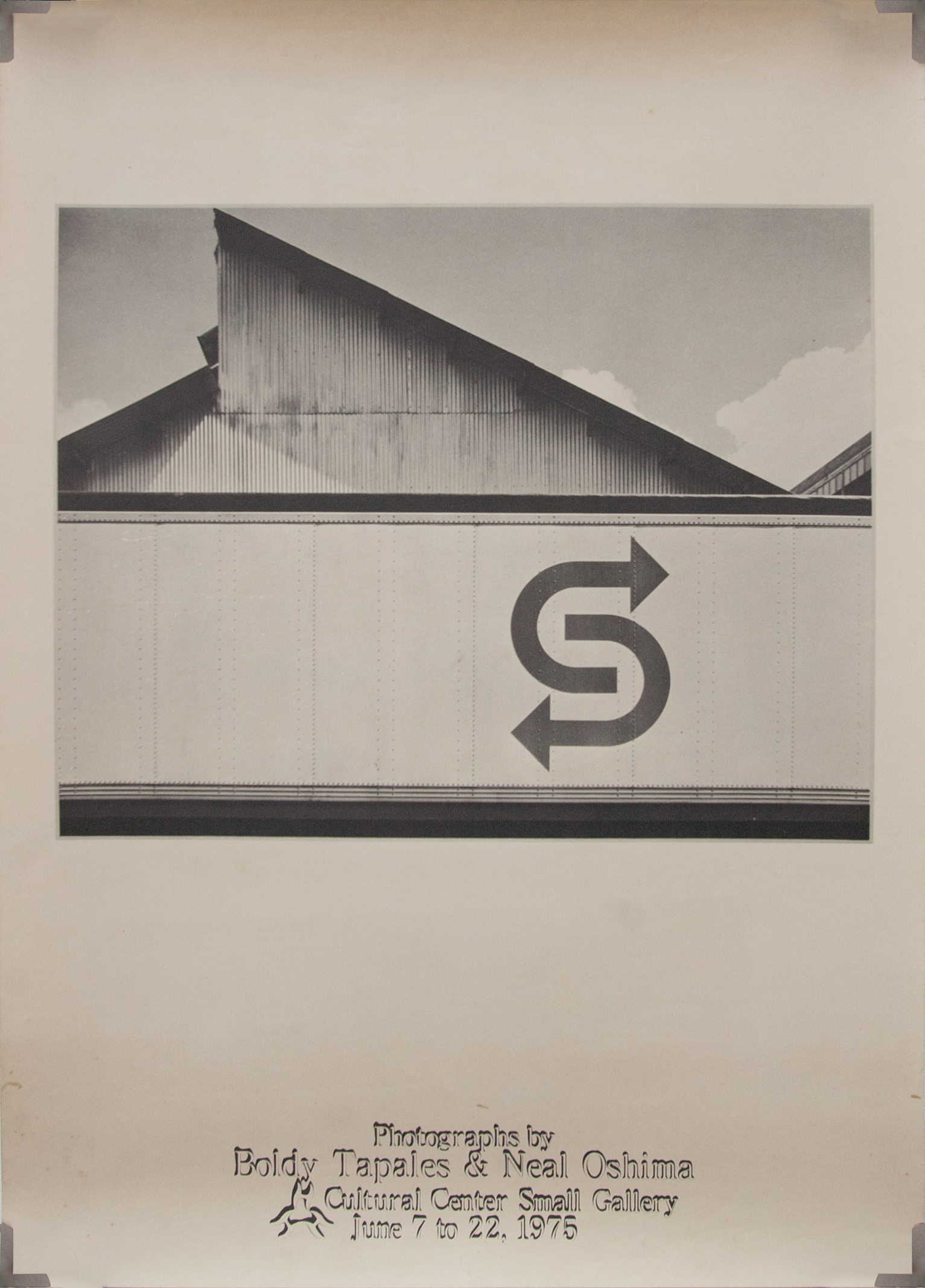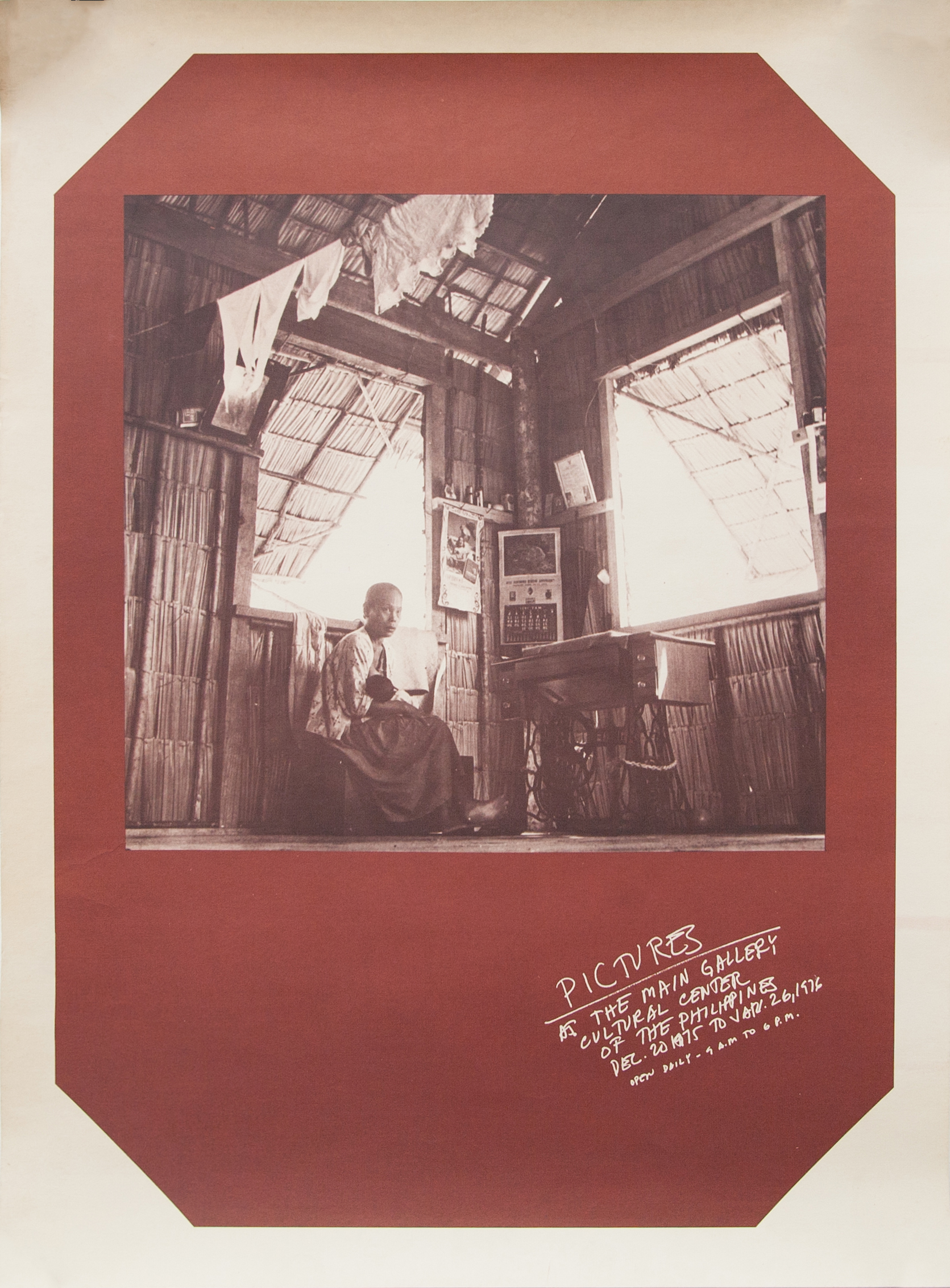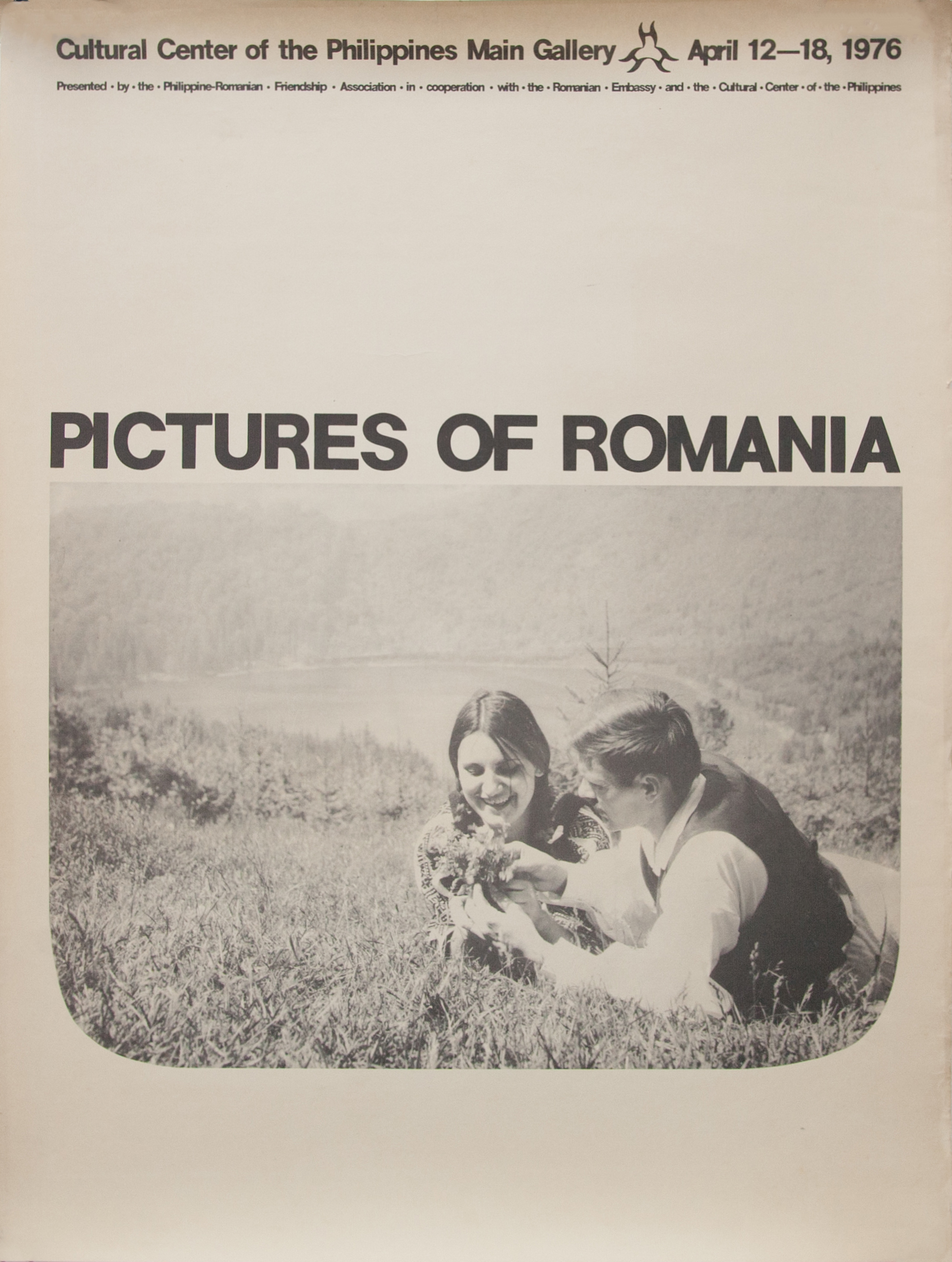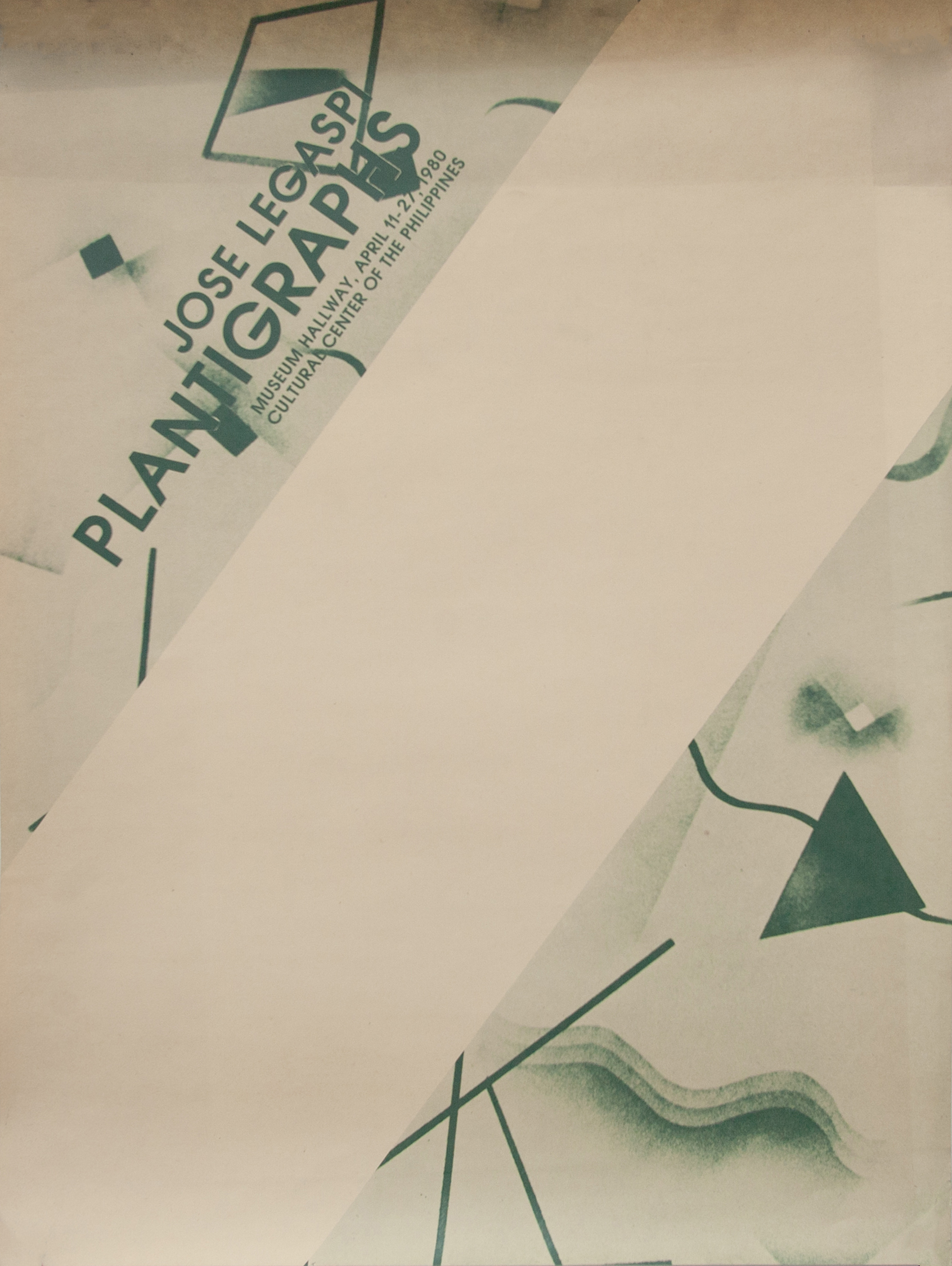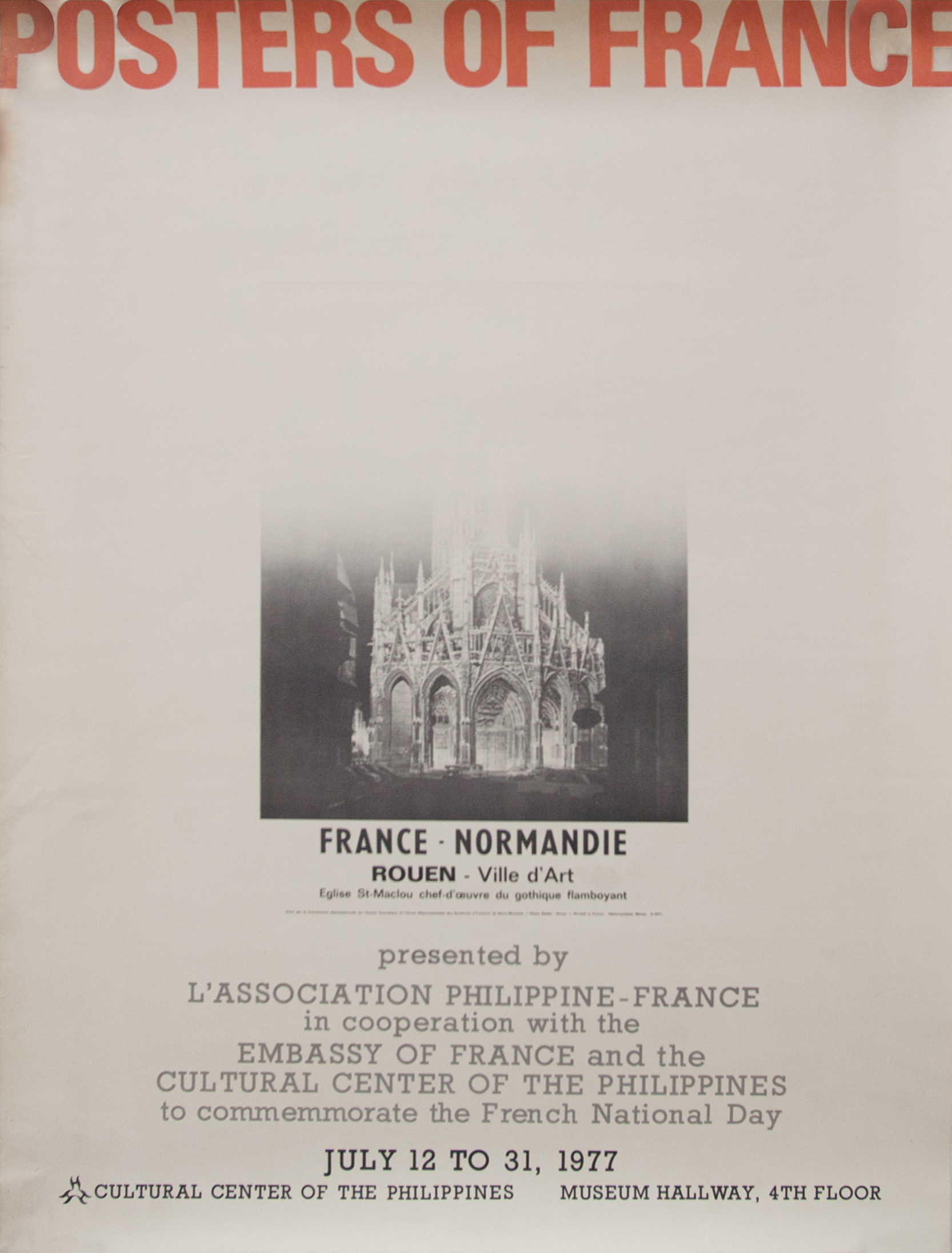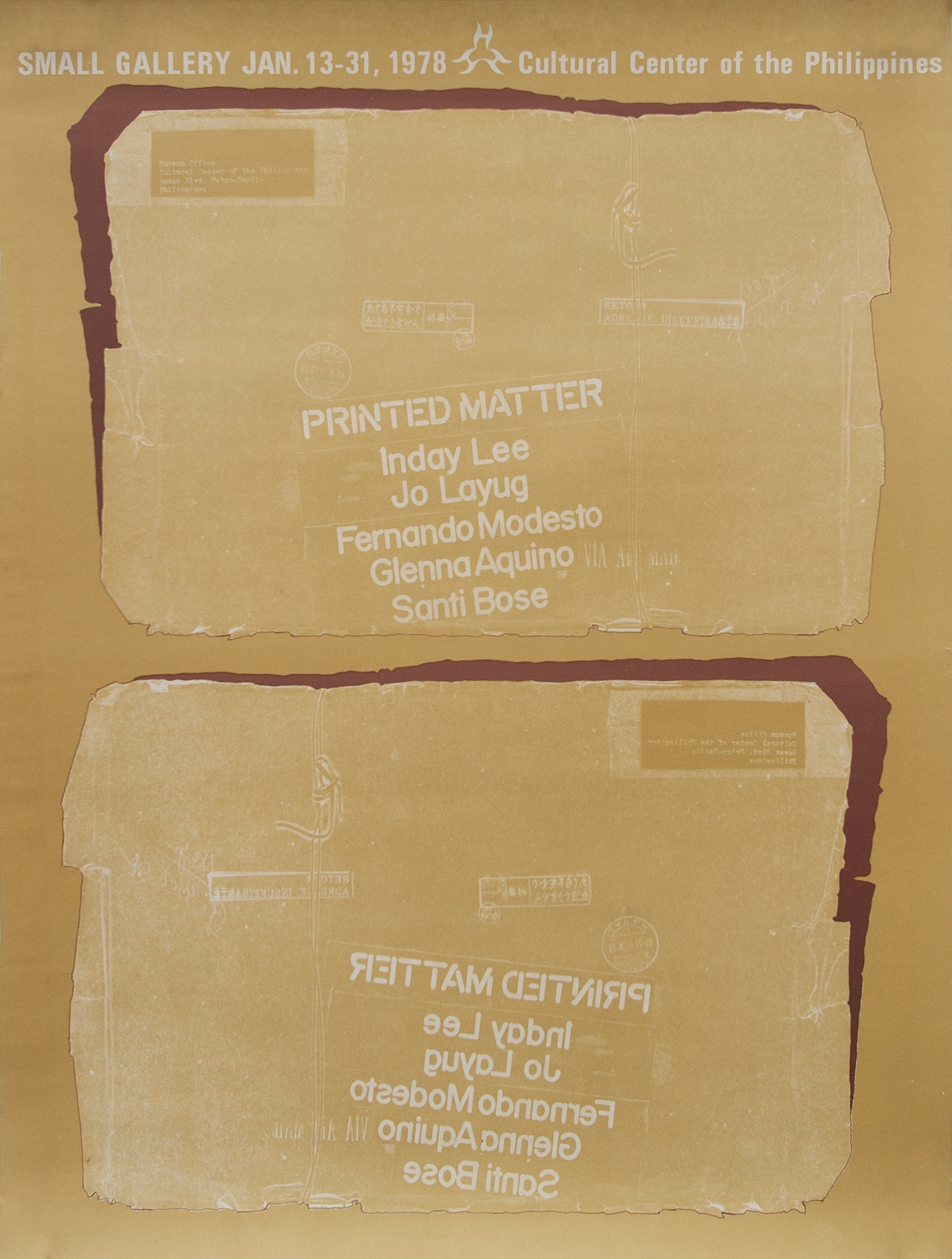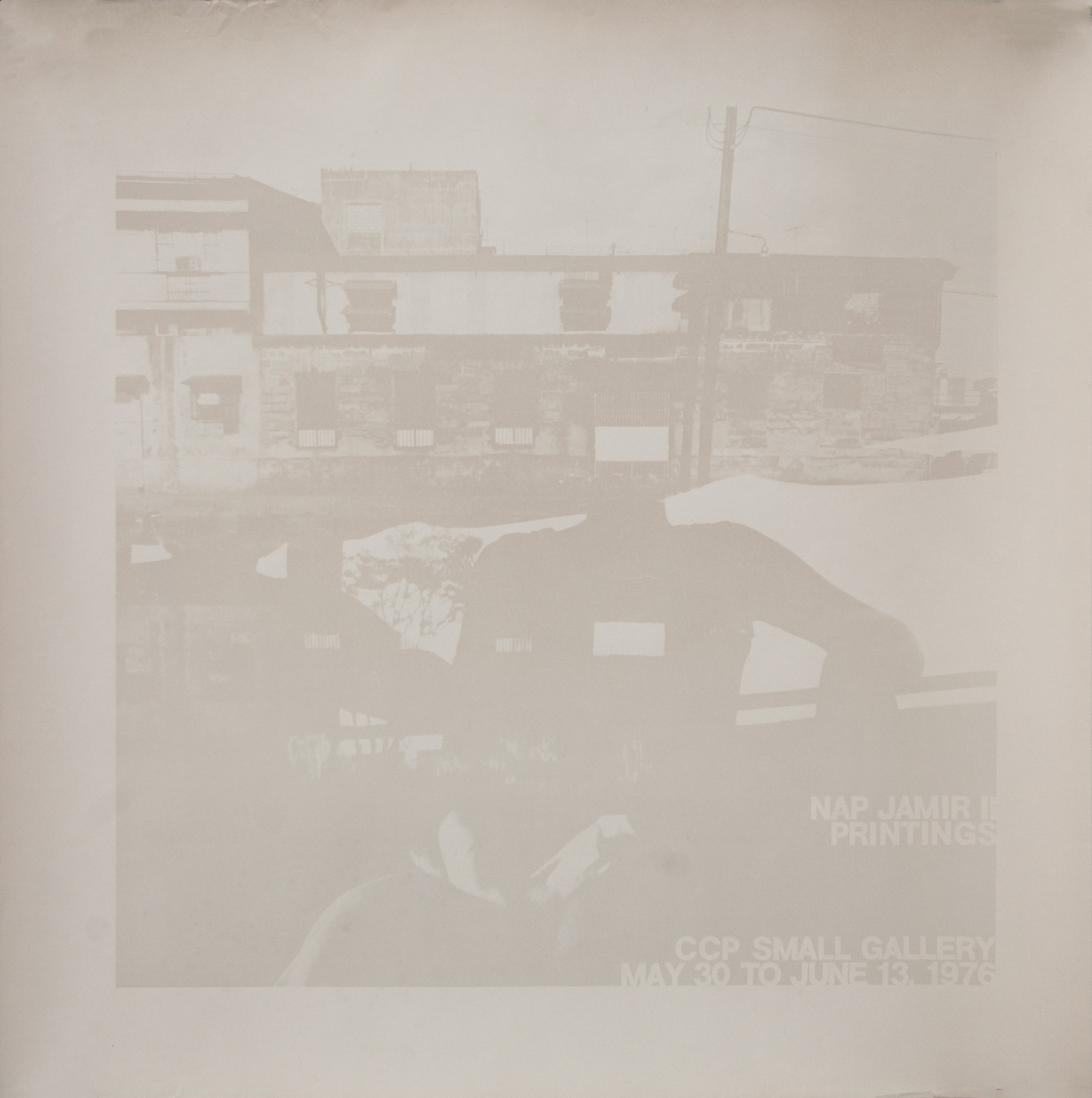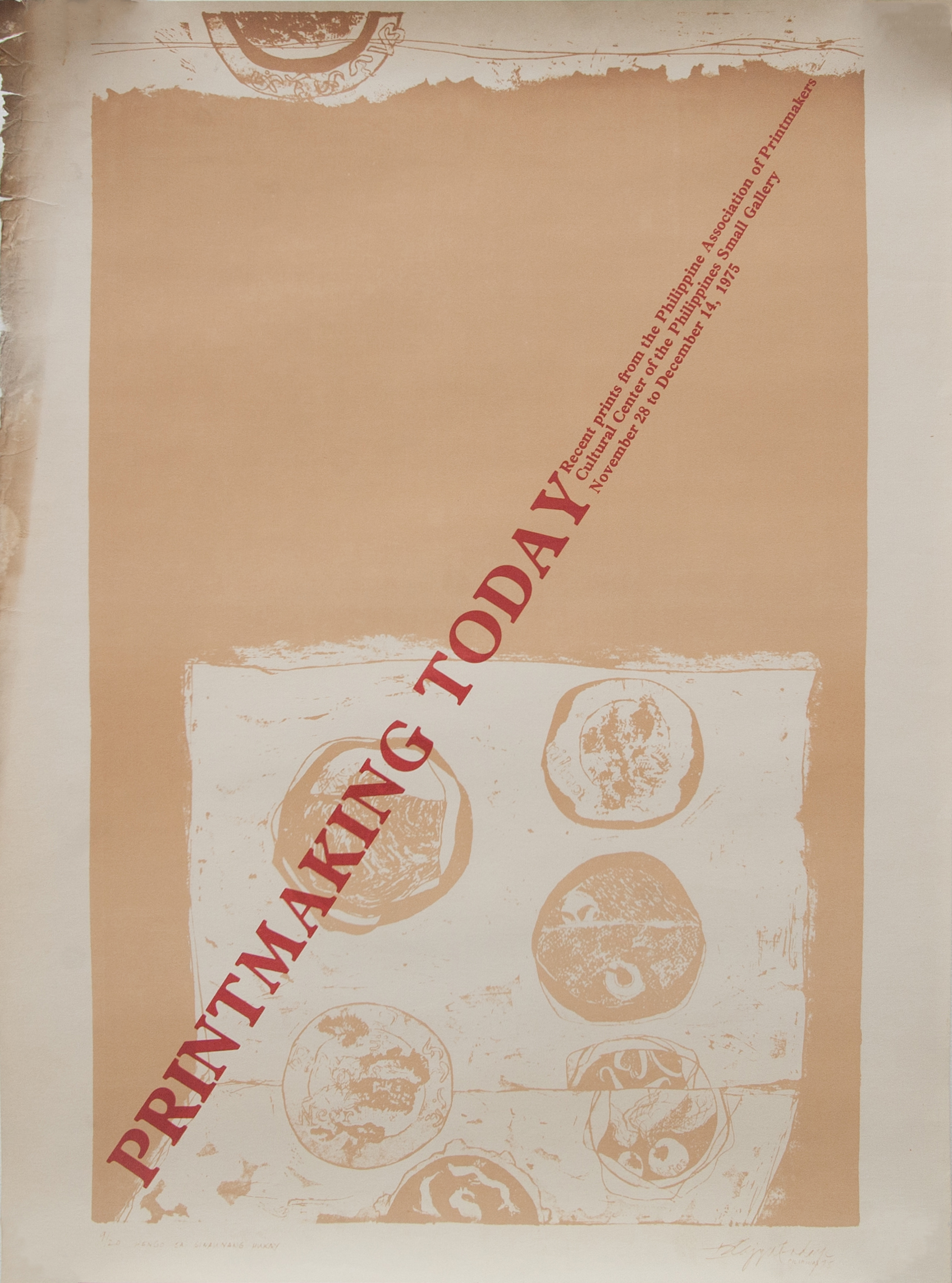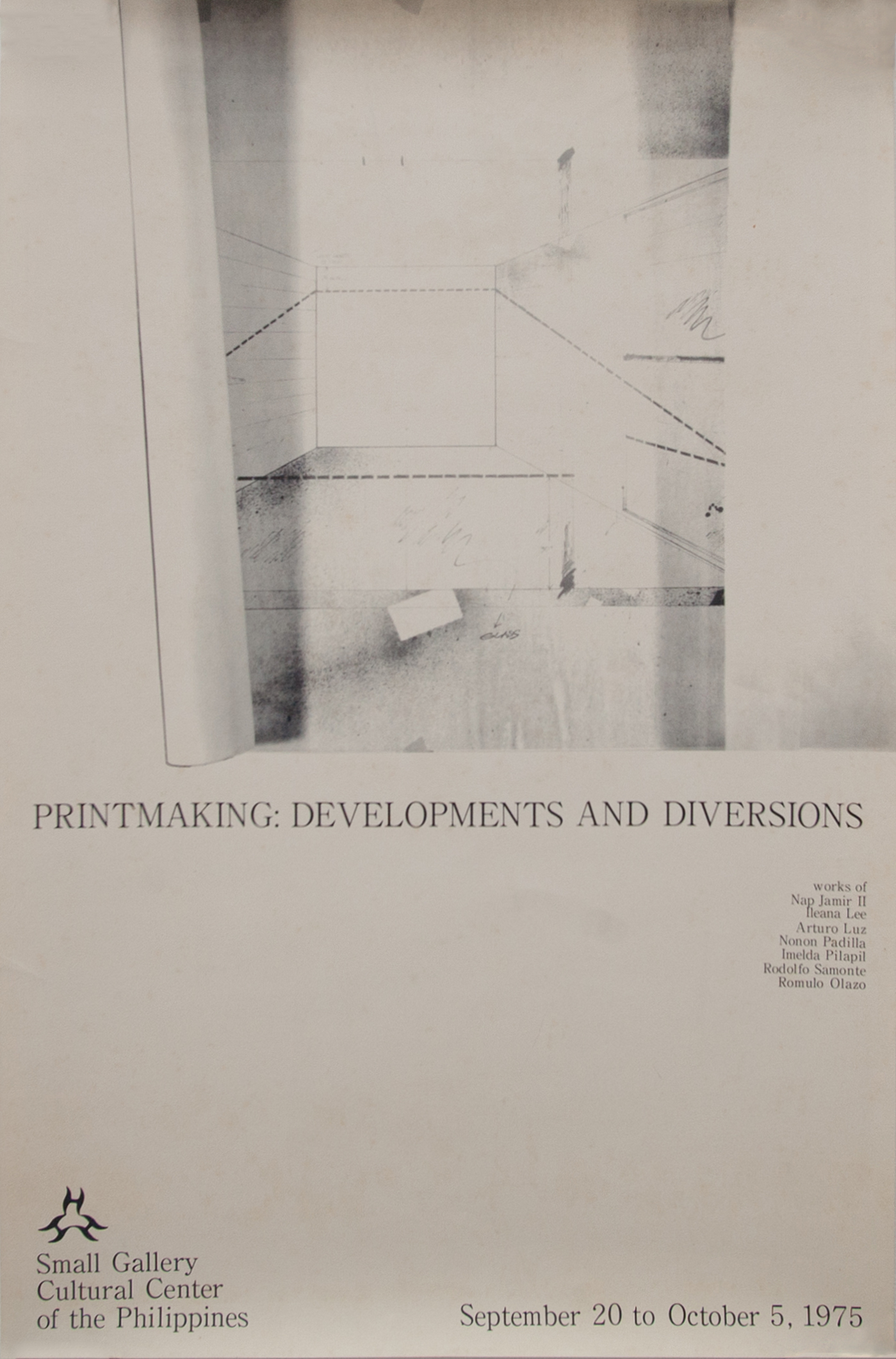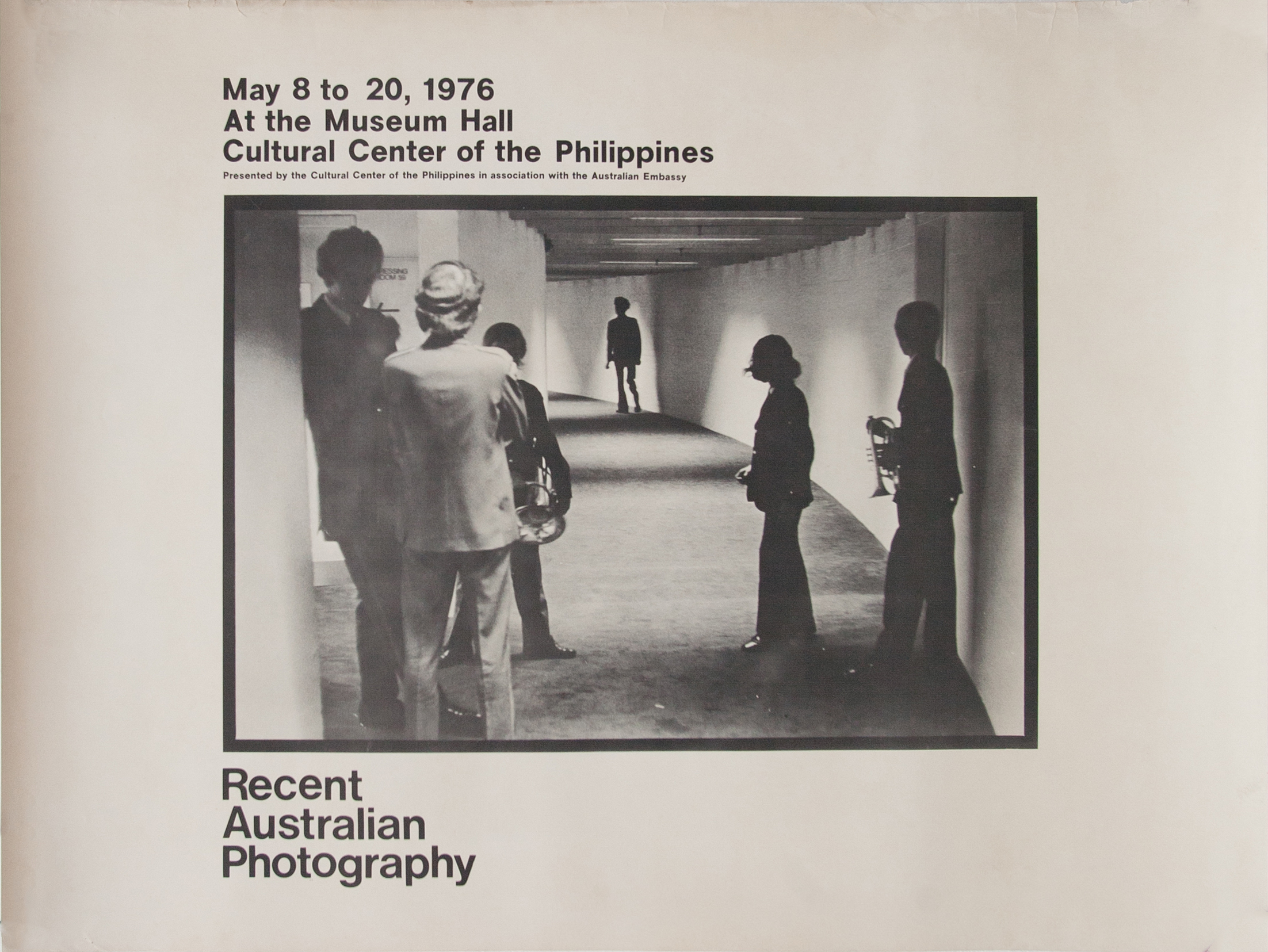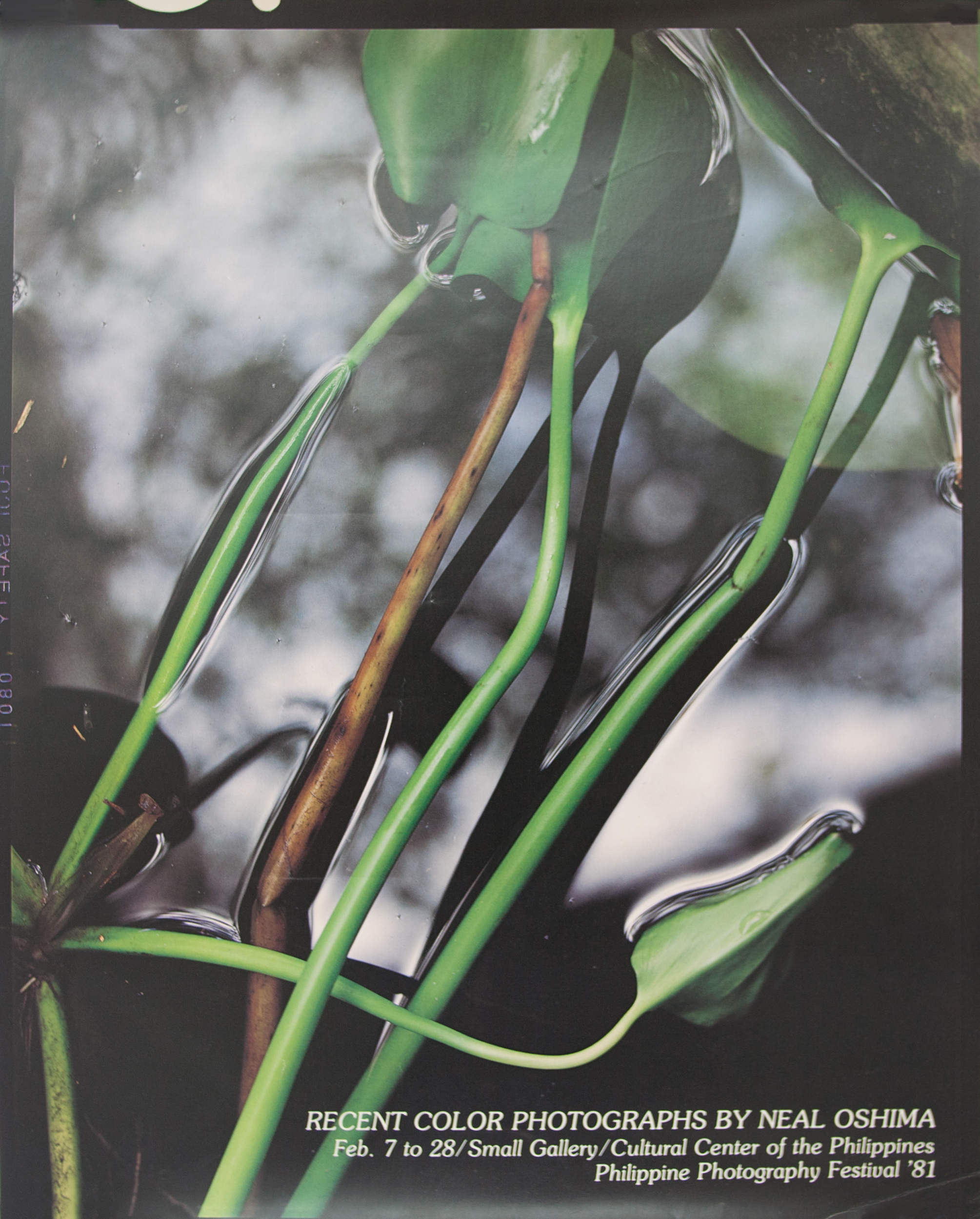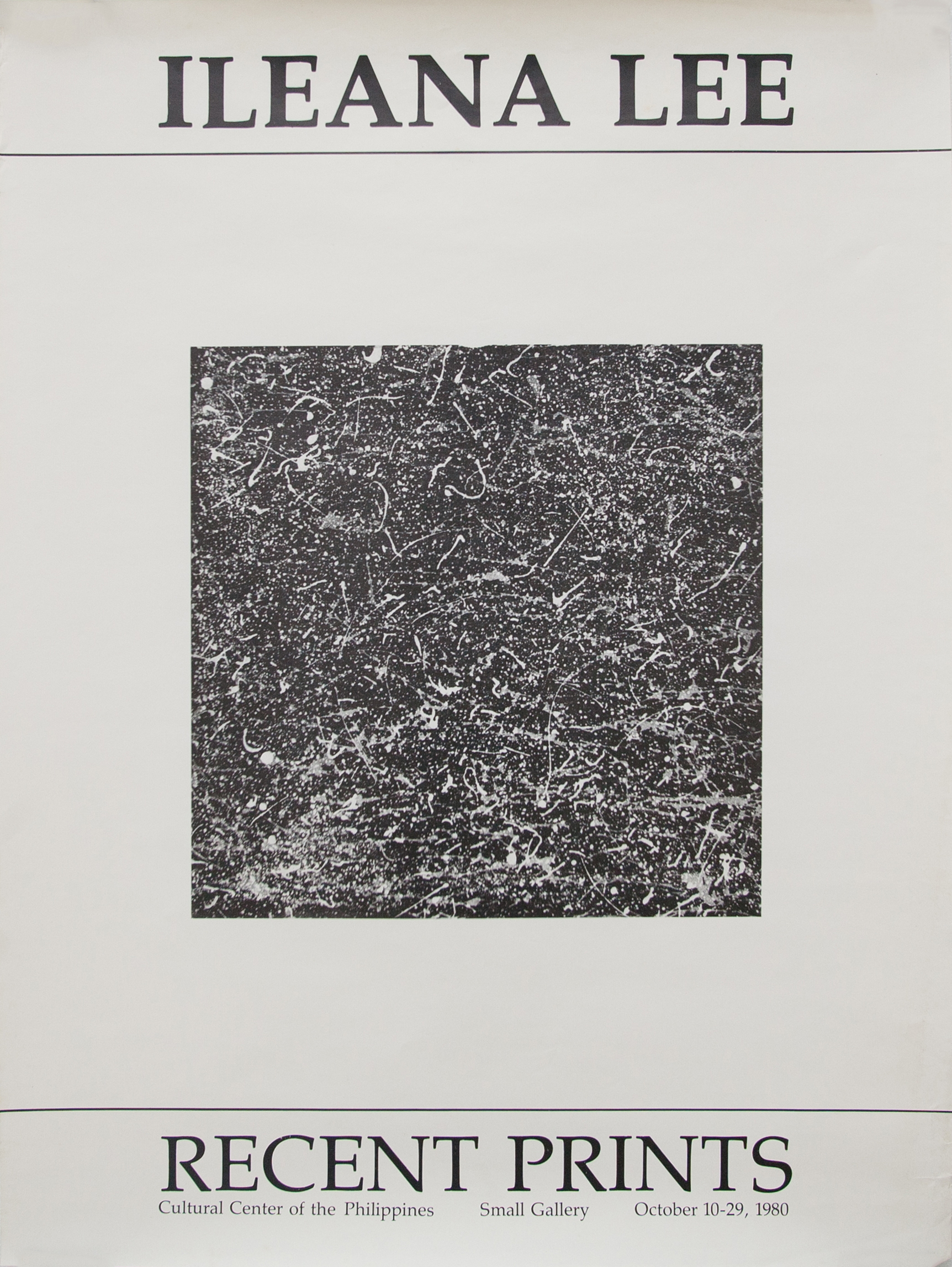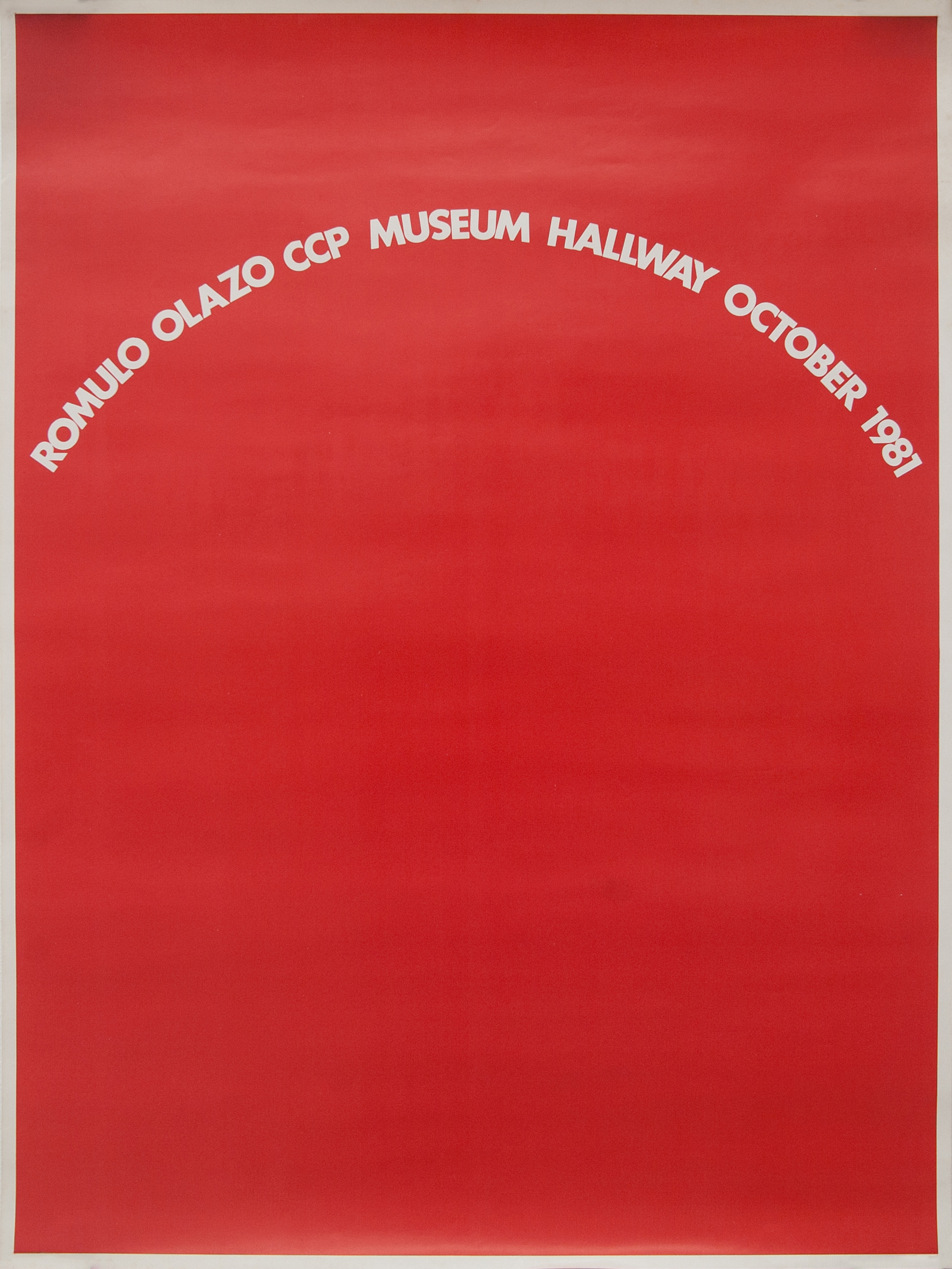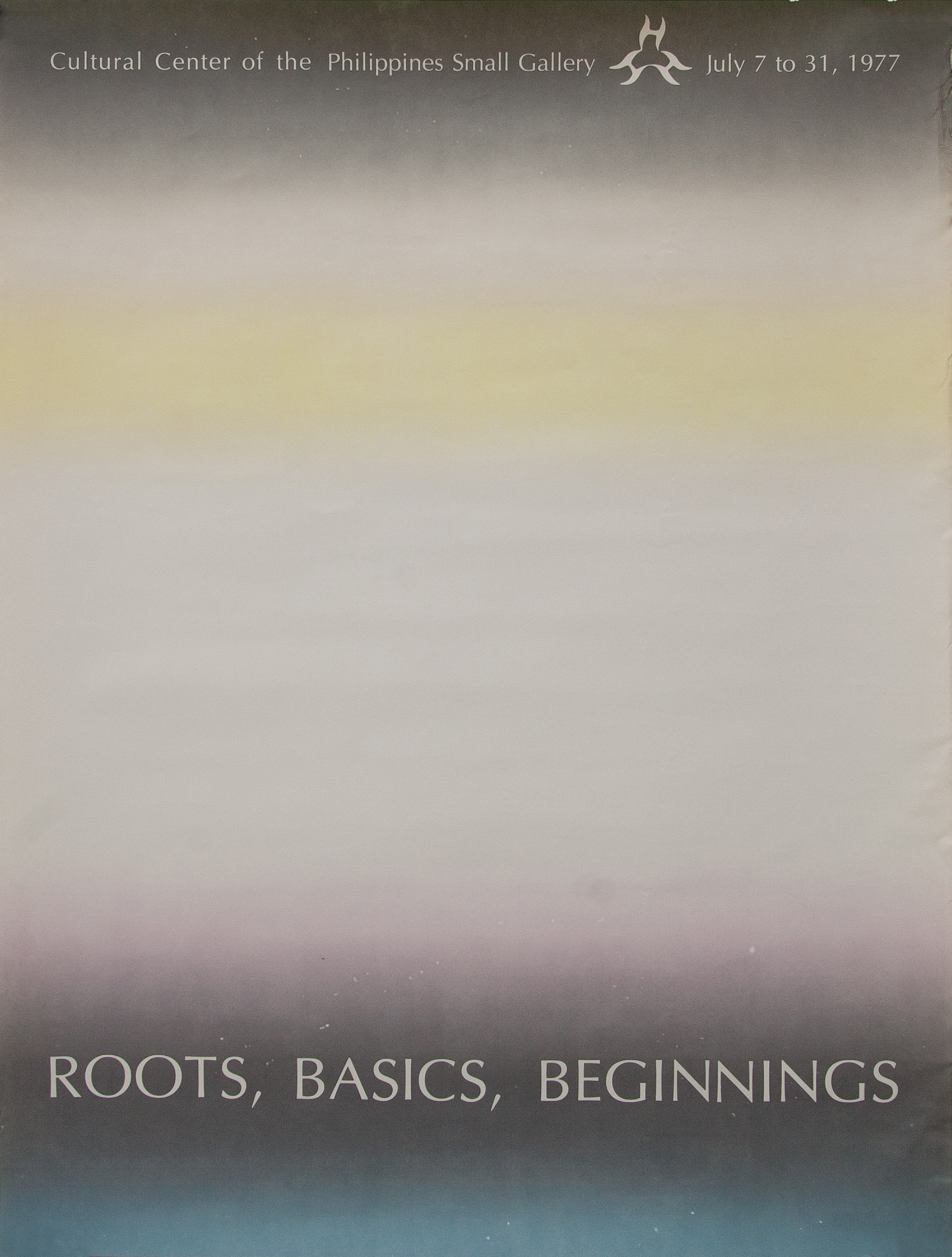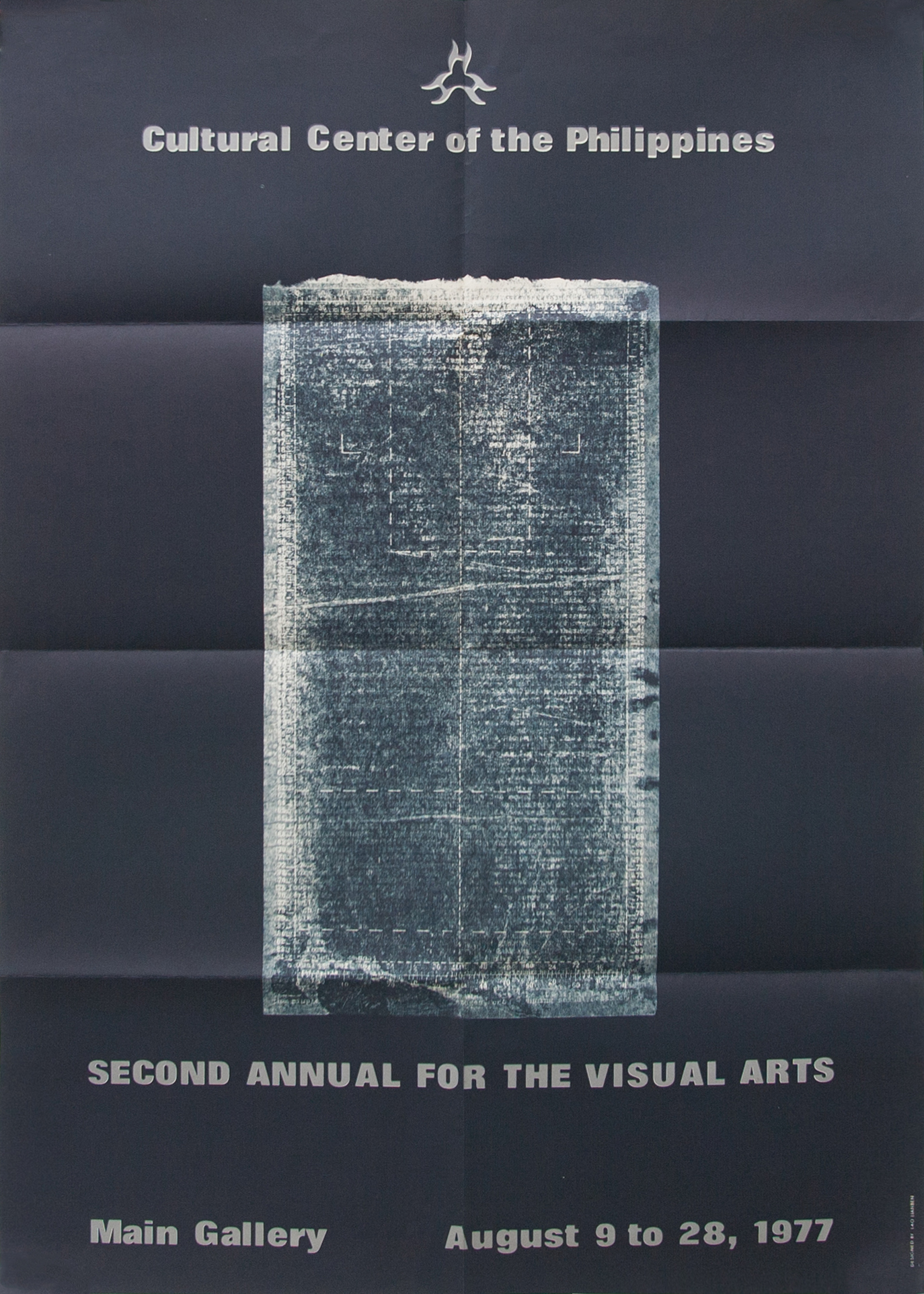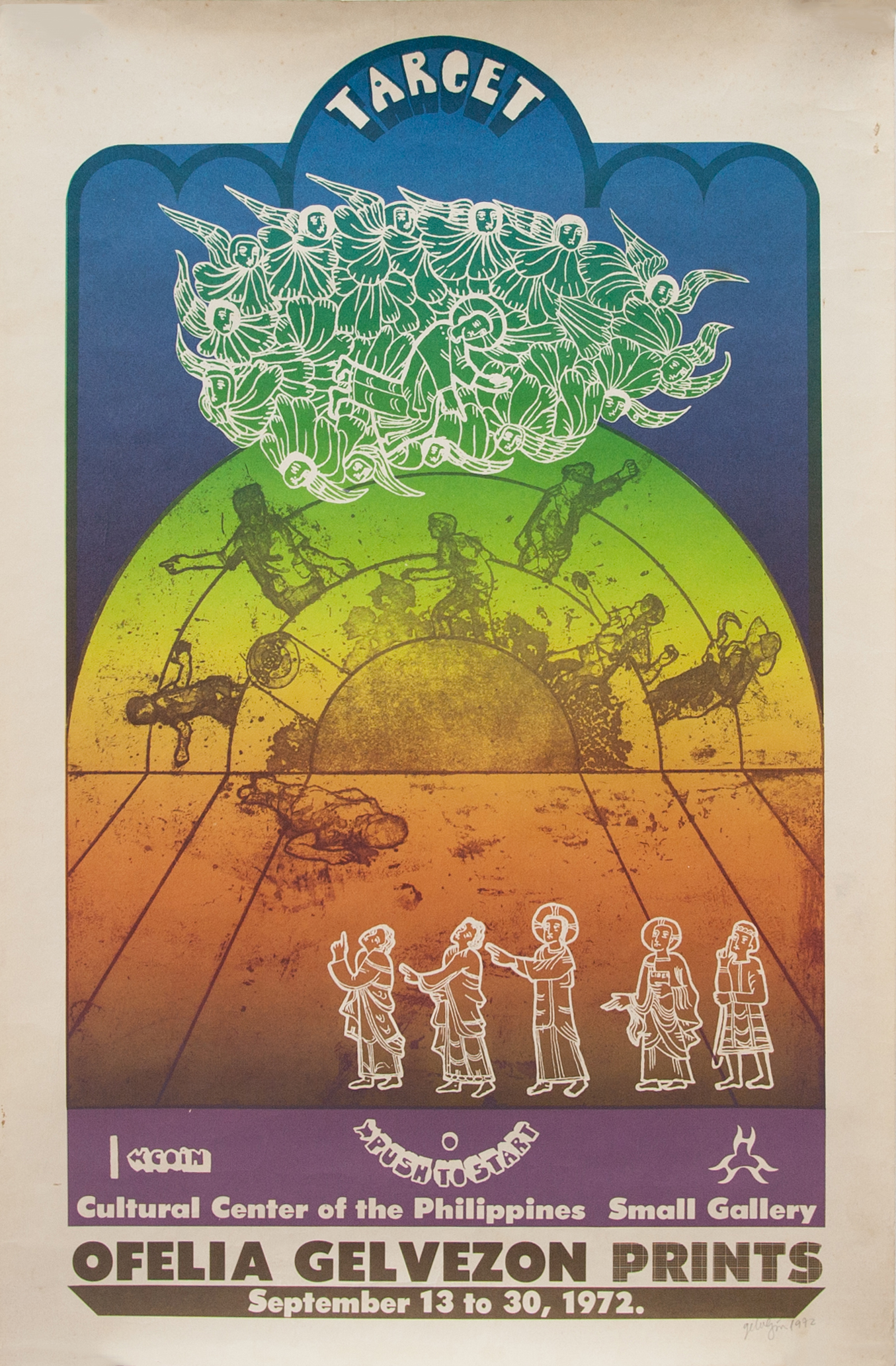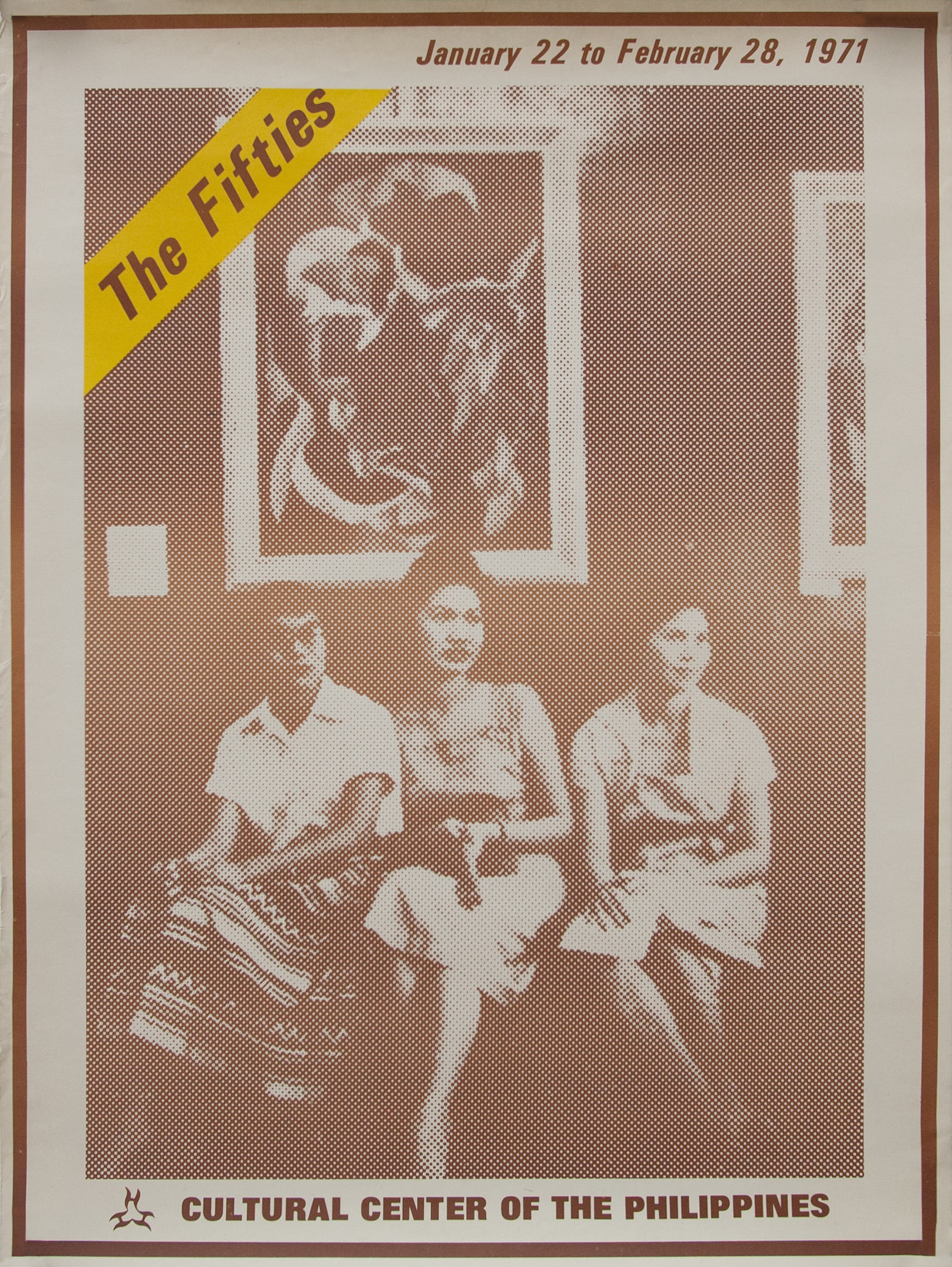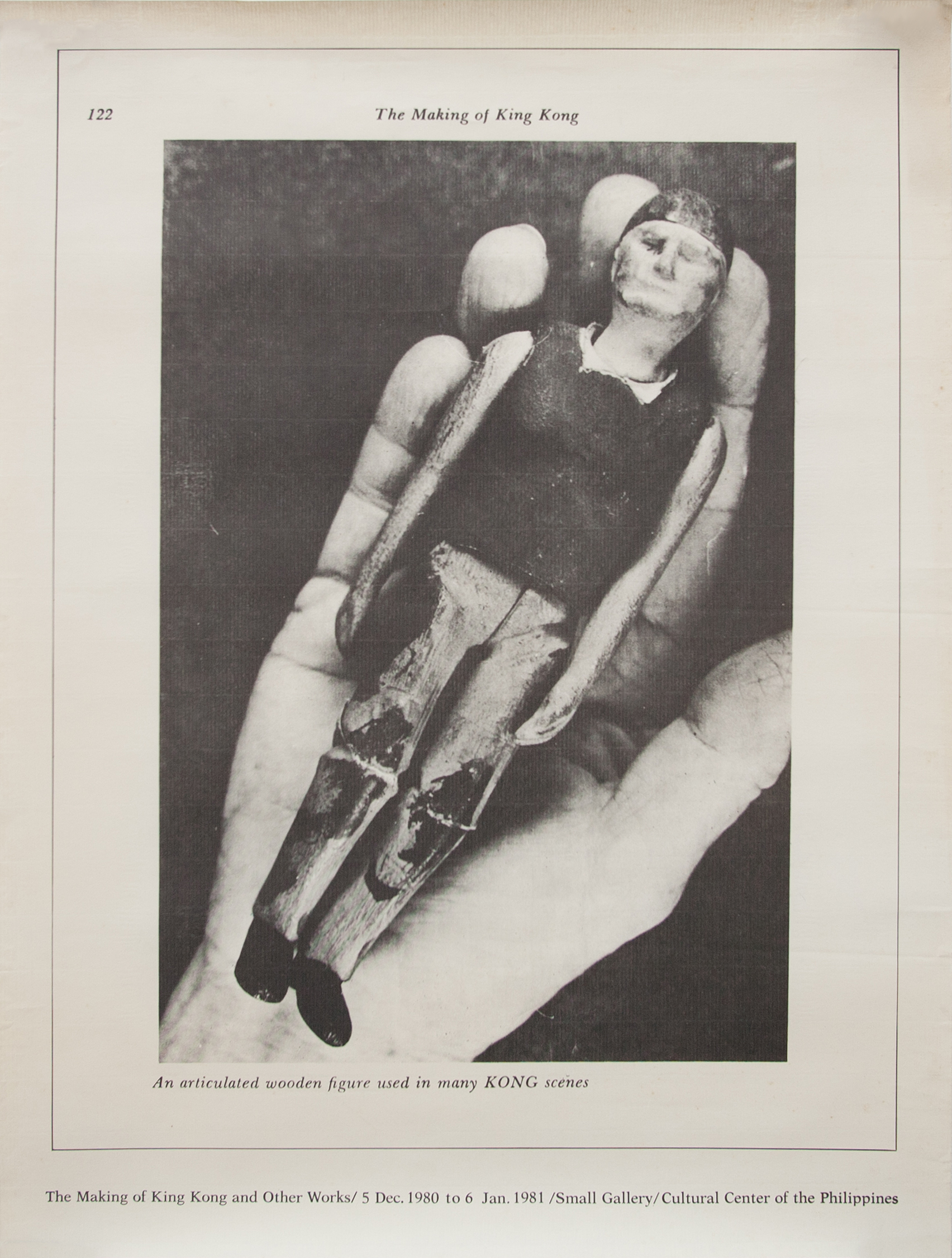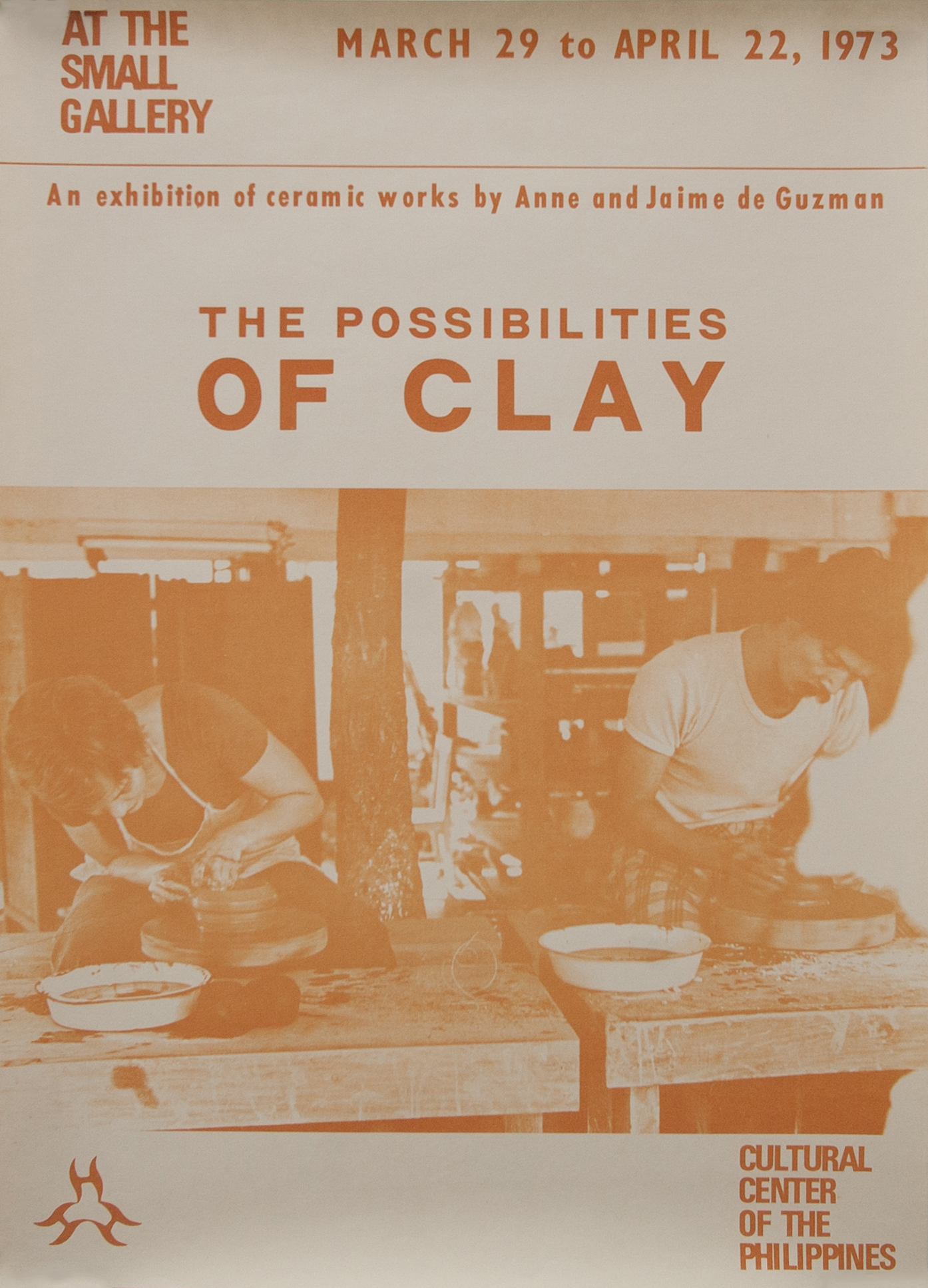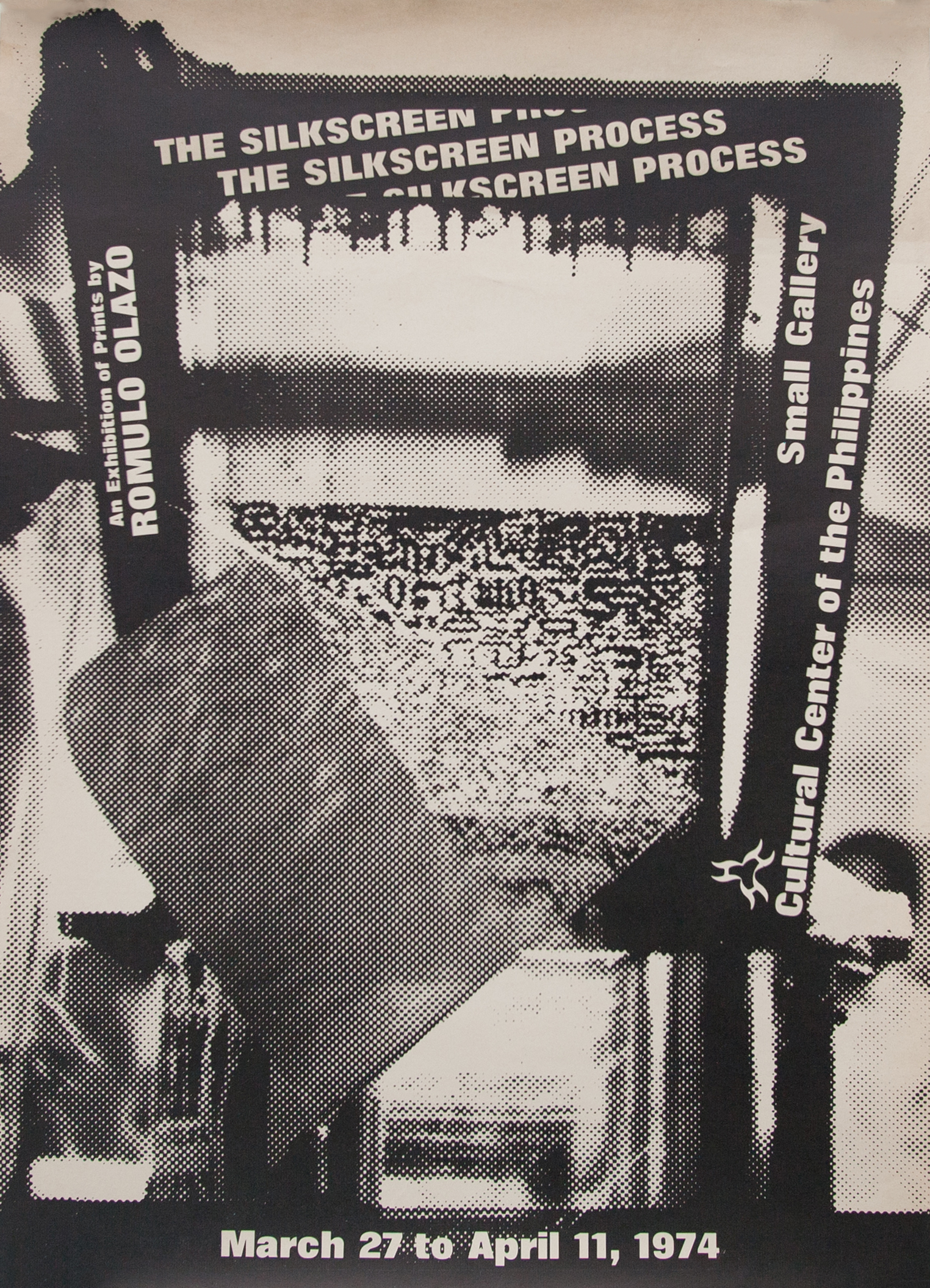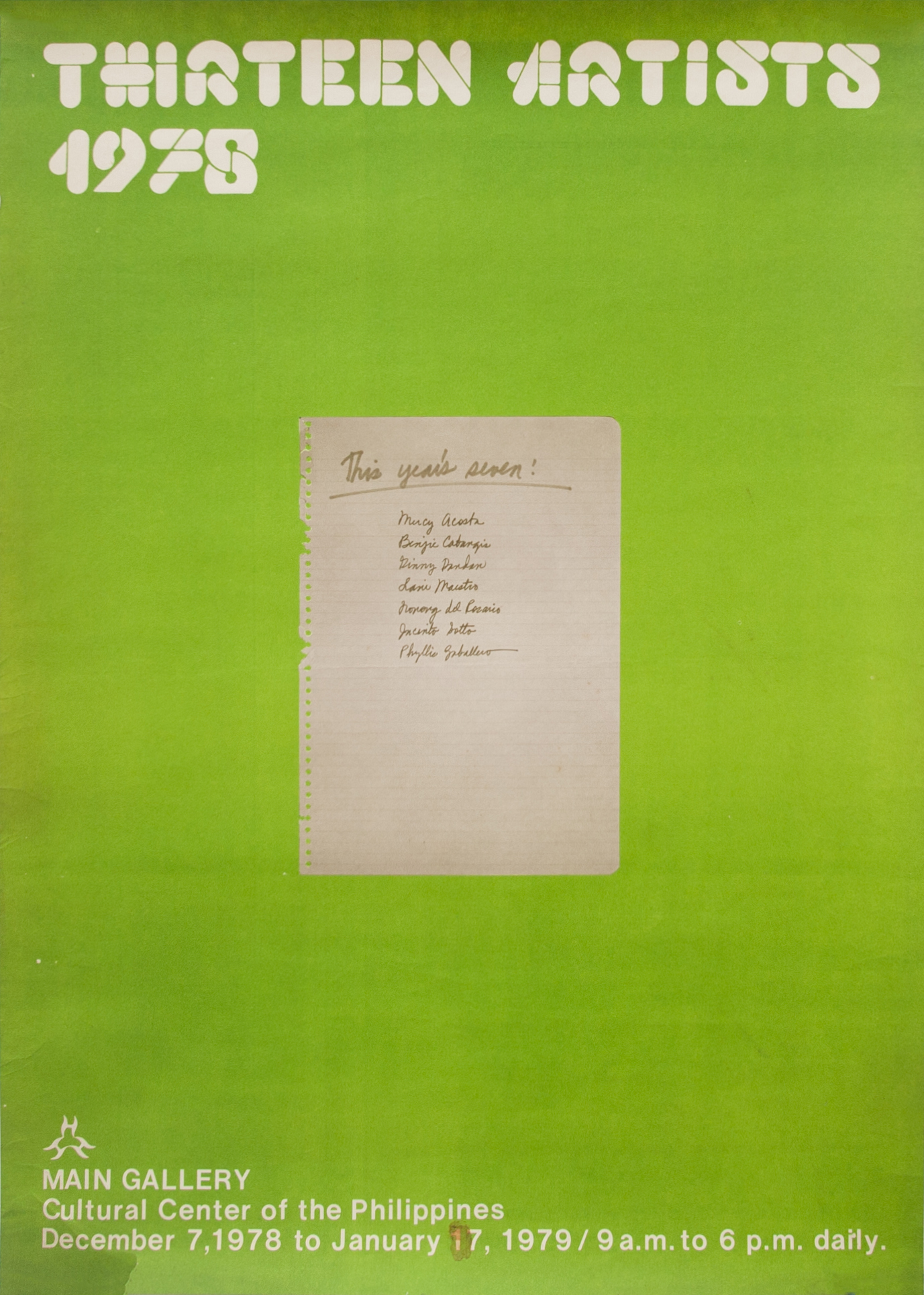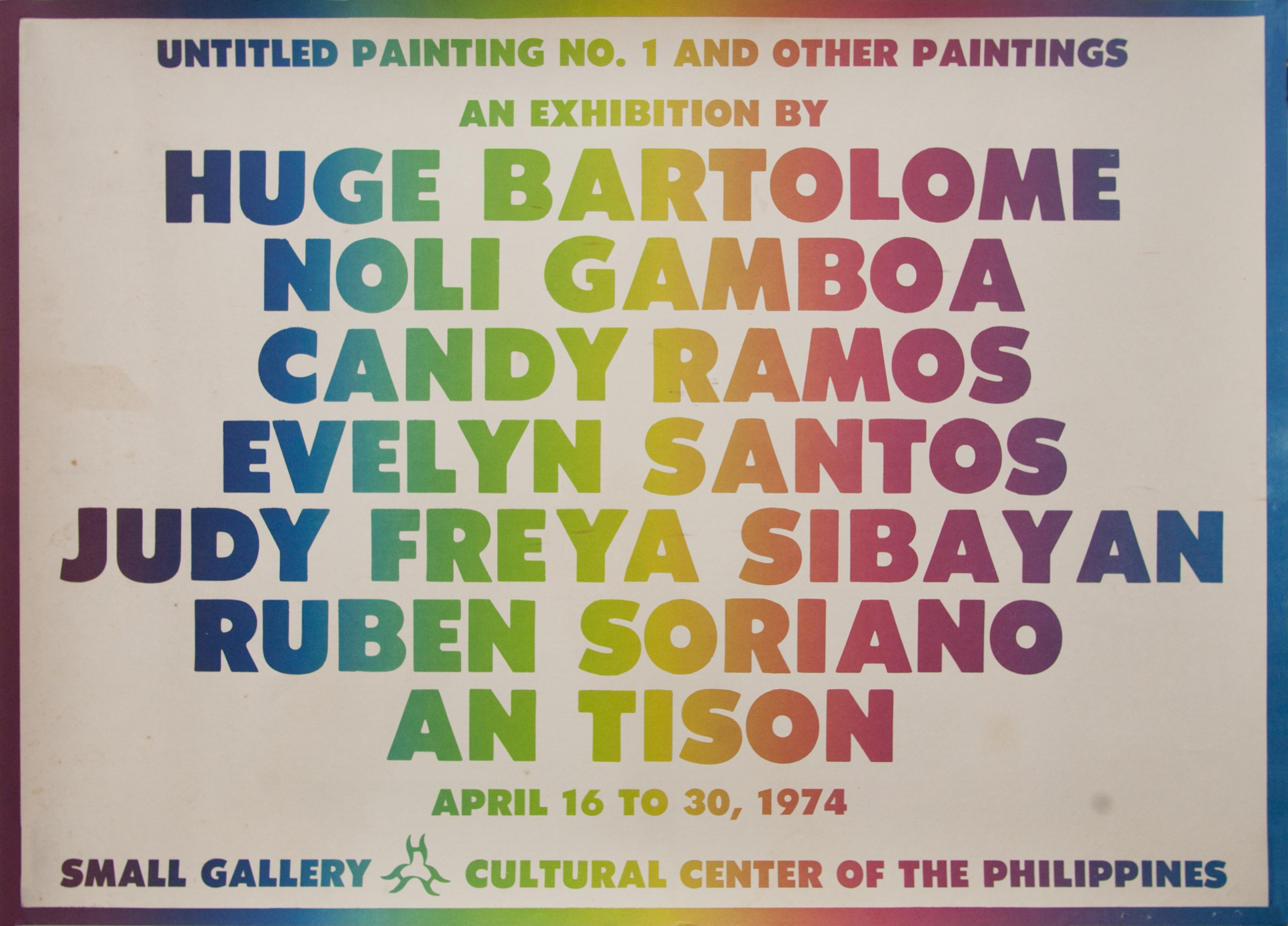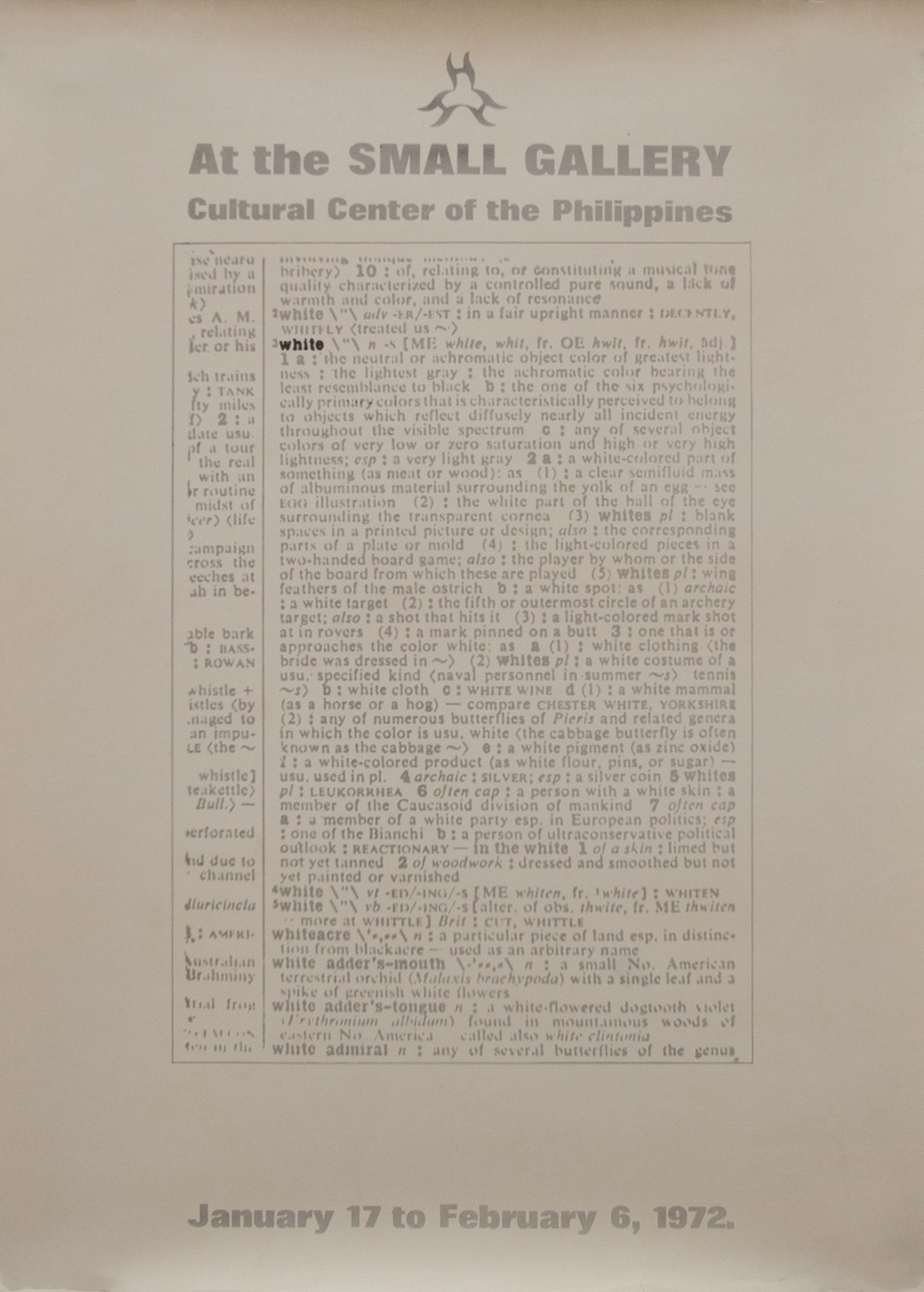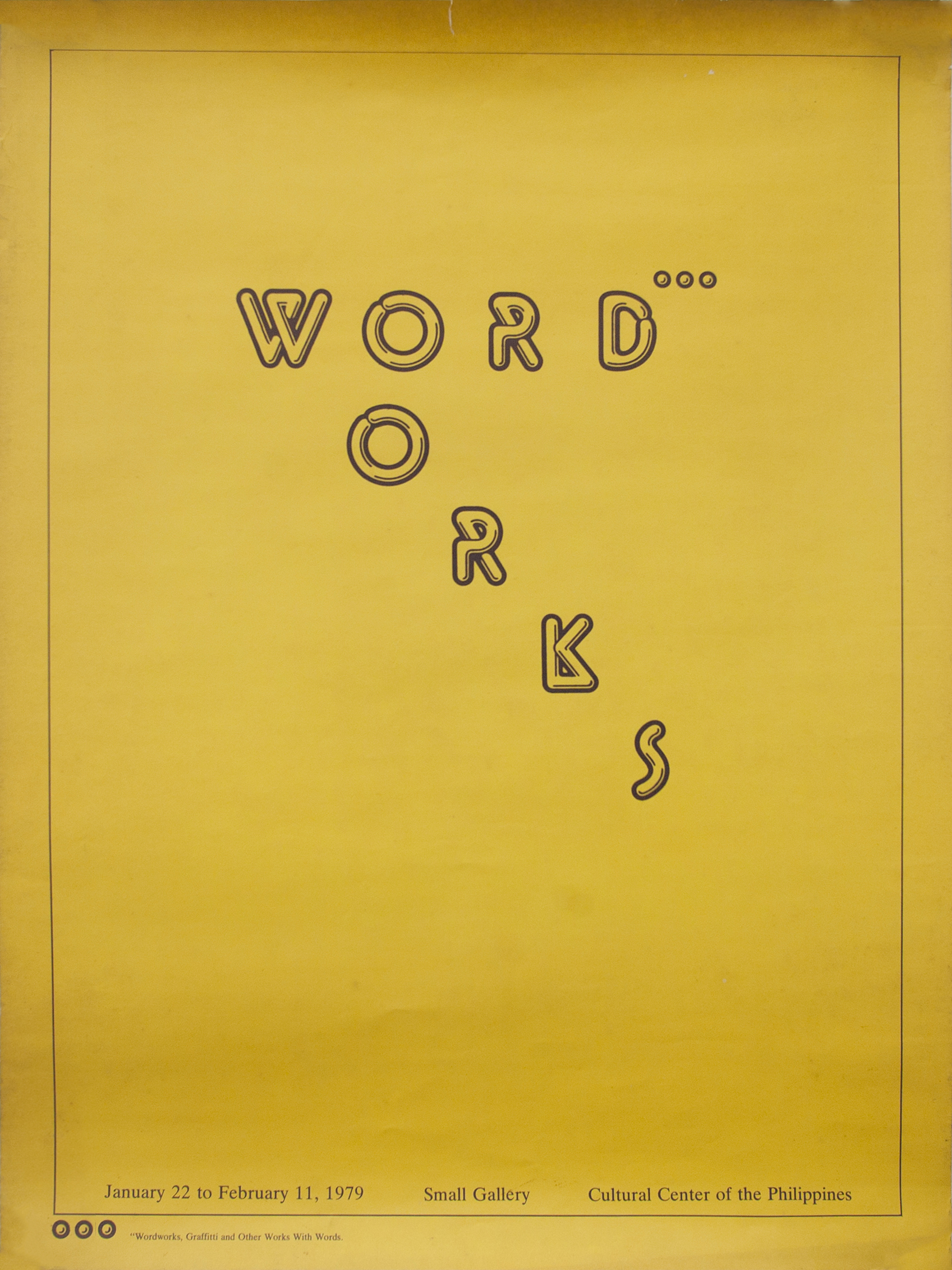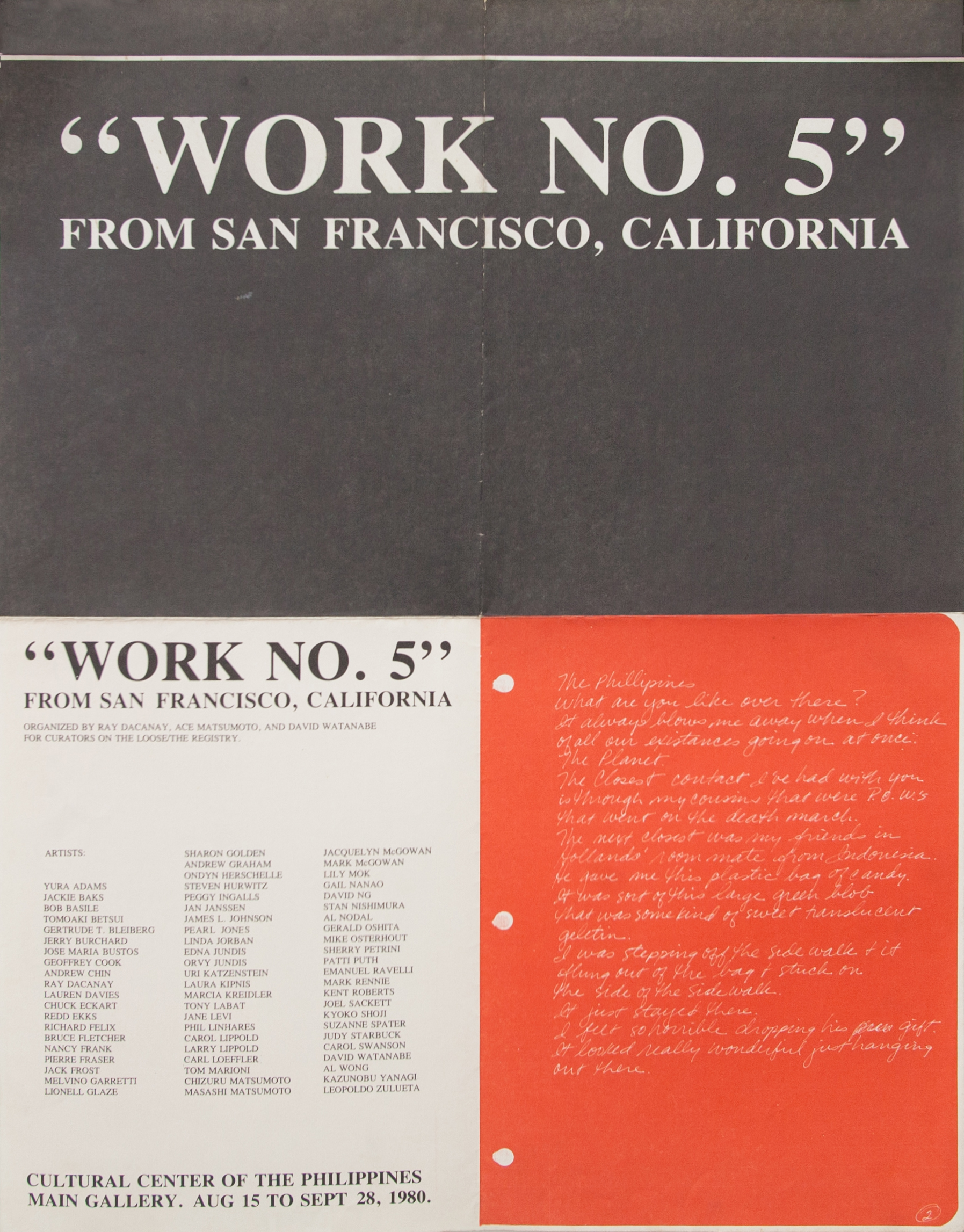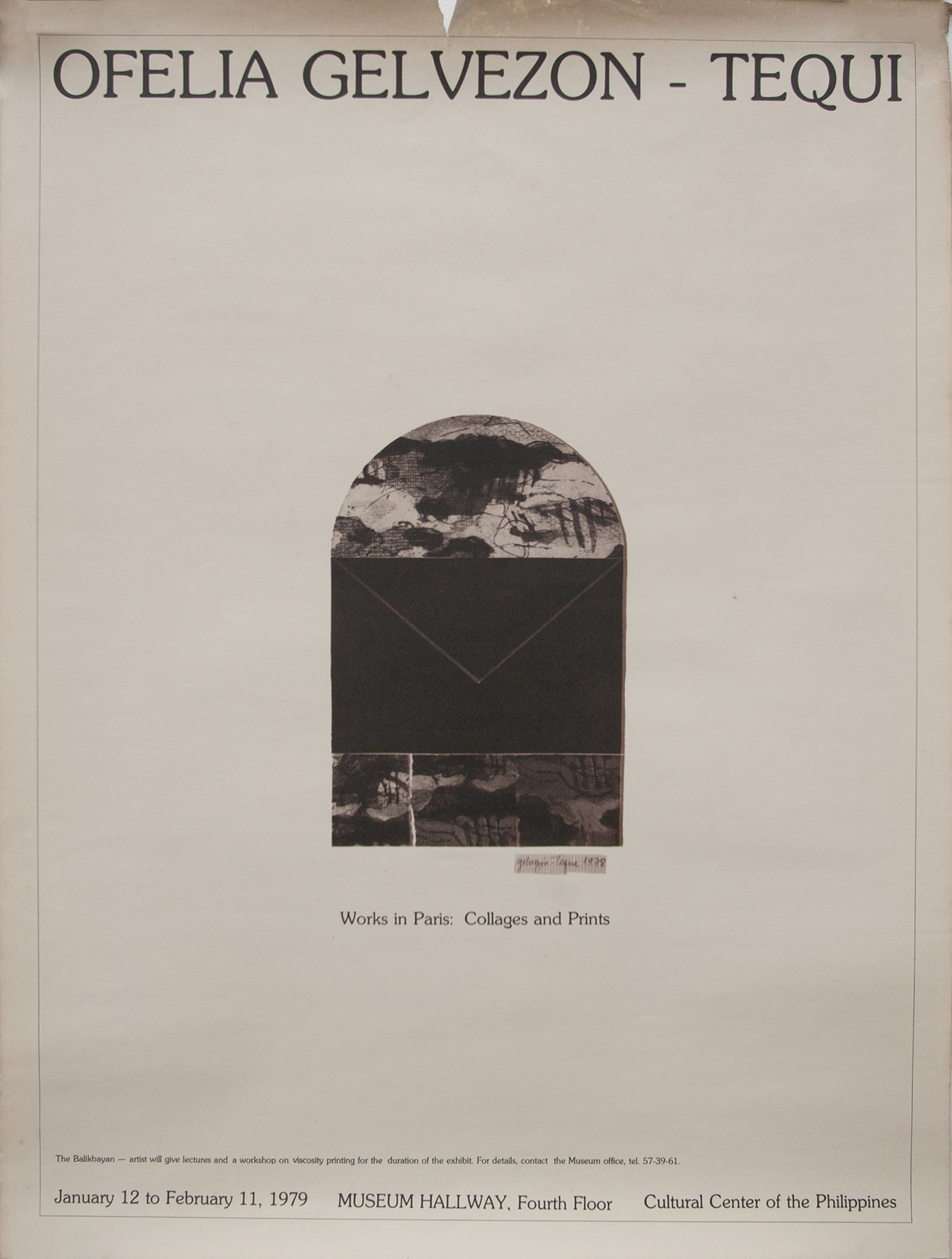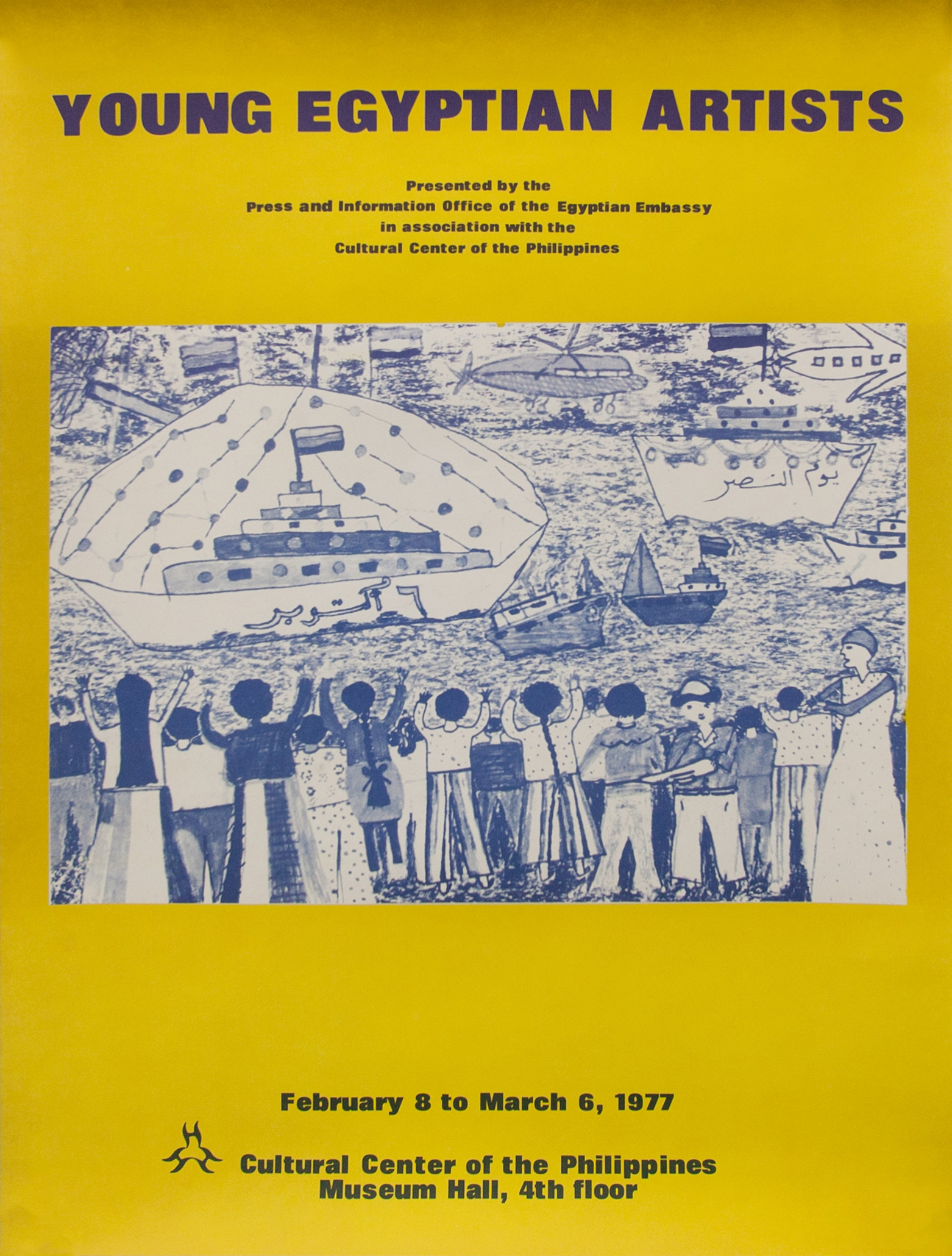
Special Exhibitions: Ray Albano, Art Fair Philippines
Ray Albano
The Link, Makati
Installation Views
About
Ray Albano: Aleator
“After blueprinting the photos and text, I throw them on a piece of paper and see whatever comes out. Sometimes I ask other people to put the blueprints randomly.”
Ray Albano (1947-1985) calls this procedure, if it were one at all, aleatory. Indeed, Albano in more ways than one was an aleator, a gamester or dice player who was alert to chance as he was to design. The posters of Albano, a fragment of his vast corpus in a gamut of media, are best viewed as forming a relay of graphic efforts across intense oscillations between chance and design. As a relay, the moments do not fall into place in strict sequence and according to prophecy. It is hard in fact to glean which among the elements come first and how everything else besides comes together ultimately as posters. But note, too, the other key phrase in the memo: “other people.” Albano was not some self-styled high priest or self-important cult figure holding court; he was a worker in a field of many and in a situation in which the random and the throwing were both method and madness, with the agent and the event anticipating the “whatever” that “comes out.”
Firstly, poster work for Albano was part of curatorial tasks at the Cultural Center of the Philippines, which he began around 1969. As a curator, he wanted to open up the Center, thought to be a bastion of the aesthete in the restive seventies, to an “ecumenical” public that could be initiated into what he conjured as a world “suddenly turning visible.” In this regard, the posters spoke to the range of events at the Center in which Albano was partly involved as a curator, graphic and set designer, writer, thinker, and personnel of the mainly Martial Law nation-state. The posters were meant to inform, and so text and image were basically data, which were then processed artistically as a mass-produced document to foster the institution’s commitment to the “seven arts” and to pursue a program he called “developmental art.” Moreover, the textual work in Albano’s practice extended to writing. He was an attentive annotator of art and the artistic impulse. He was a critic, theorist, poet, editor, and maker of performance text. The reprographic as manifested in all manner of material that circulated in multiples was central in this everyday grind.
The second instance in the relay is a broadly conceived printmaking practice that included graphic design. Central in Albano’s consciousness was the relationship between image and typography, in other words between objects in space and their inscription onto a ground. At some point in the interface, the two internalize and calibrate each other. The modules of this design scheme made sense of a variety of initiations at the Center: retrospectives, annual surveys, concerts, and travelling exhibitions from Romania to Egypt. This diversity had to stray into the graphic field of the poster in which Albano would mingle floor plans, archival documents, art works, things, and portraits and subject them to darkroom treatments, staged tableaux, collage, advertising syntax, or just bare-boned journalism. He played with typography on proofs; took risks with monotones and half-tones; probed the prospects of over-inking, solarizing, and streaking. Asymmetries, juxtapositions, minimalisms, and horror vacui were constantly tried and toyed with.
The third node deepens the ramification of the image as it enhances the capacity of the poster as a popular medium. This pertains to photography as a salient aspect in the conceptualization of the poster. The photographic image in the hands of Albano is a highly mediated image, one that is complicit in the project of representation and the aesthetic that attends such contentious issues as replication, authenticity, truth, illusion, and reality.
Finally, the poster fulfils the promise of art that repeats and transforms across an array of interests as it intersects with the performative inclinations of Albano. This is sharply articulated in the work Step on the Sand and Make Footprints. It was submitted to the Tokyo International Biennial Exhibition of Prints in 1974 as a print and was conferred a prize as such, thus complicating the nature of the graphic aesthetic and at the same time returning it to its fundamental gesture of marking an index, which is the pressure of the human body transferred onto a surface. Such intuition to play with both unknown thought and the “unthought known” likewise reveals Albano to be a homo ludens who was generous in his exploration of the artistic process and open to the laughter that may unsettle its pose. Rather than becoming solipsistic and obsessing about the conceptualist privilege, he released the latter to a vaster atmosphere: as more people took part and engaged in their own experiments, so did artists sort out their own experiences reflexively within and beyond the art world. The said work, which was for all intents and purposes a sandbox or a sand room, was therefore, all at once, graphic, installative, and performative. Rubrics fall away and “childhood urges” are restored with this almost artless, and yet so generous, invitation to make a step and leave a trace, a path, a direction in the very act of nearly uneventful walking.
Albano was an important cipher in that precarious phase or threshold of Philippine contemporary art in which the competing discourses of identity, tradition, and modernity sought to constitute what it meant to be contemporary and Filipino amid the push and pull of becoming local and international, of being western and native. Such an unnerving anxiety evoked a worldliness that refused to rest on the easy distinctions between the inside and the outside, the here and there, the center and the province. Albano, always with patience and wit, stayed with the trouble that comes with being current and resisted being rendered merely instrumental by either profligate institution or individual conceit: therefore, by turns commonplace and sui generis.
Words by Dr. Patrick D. Flores
Works
